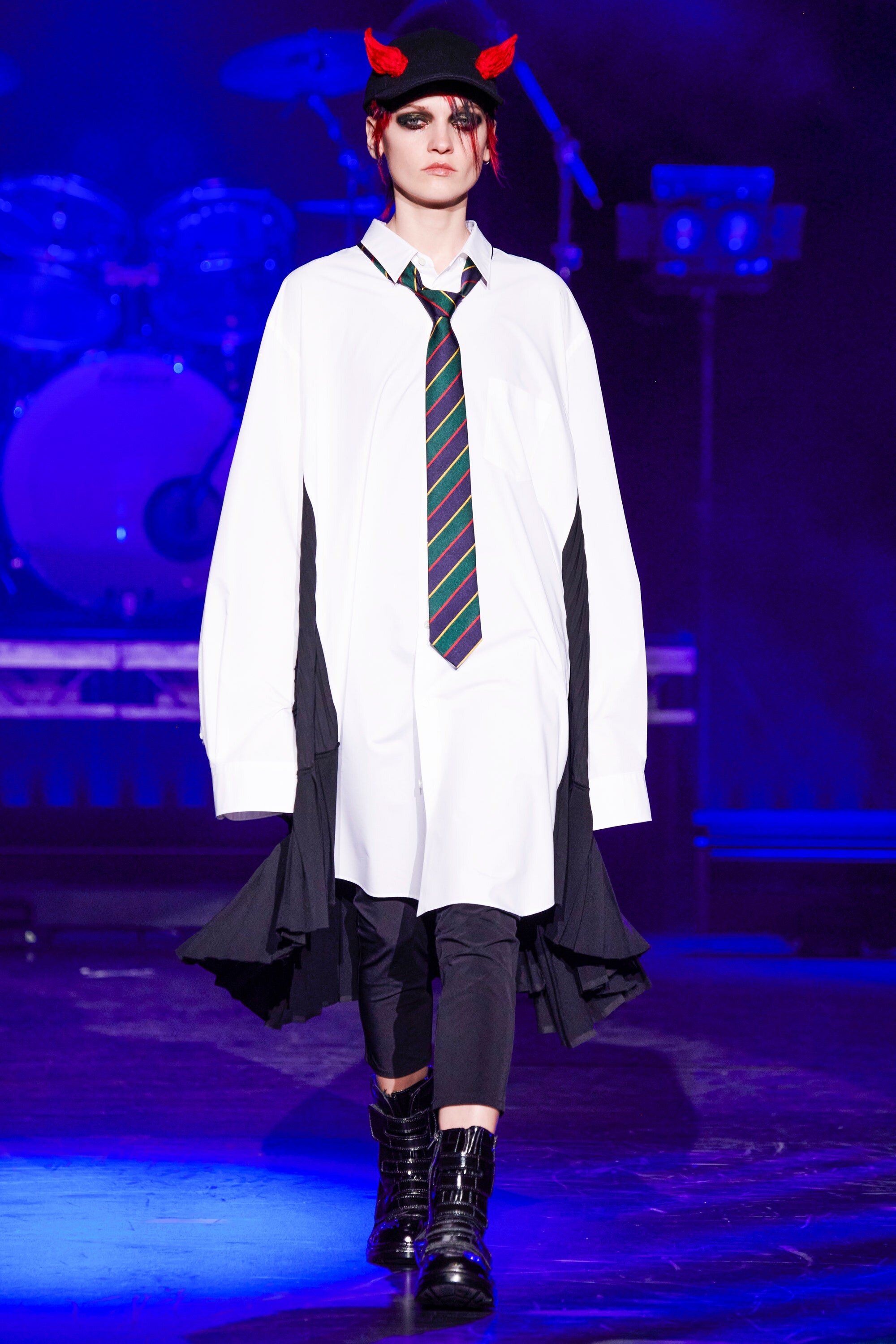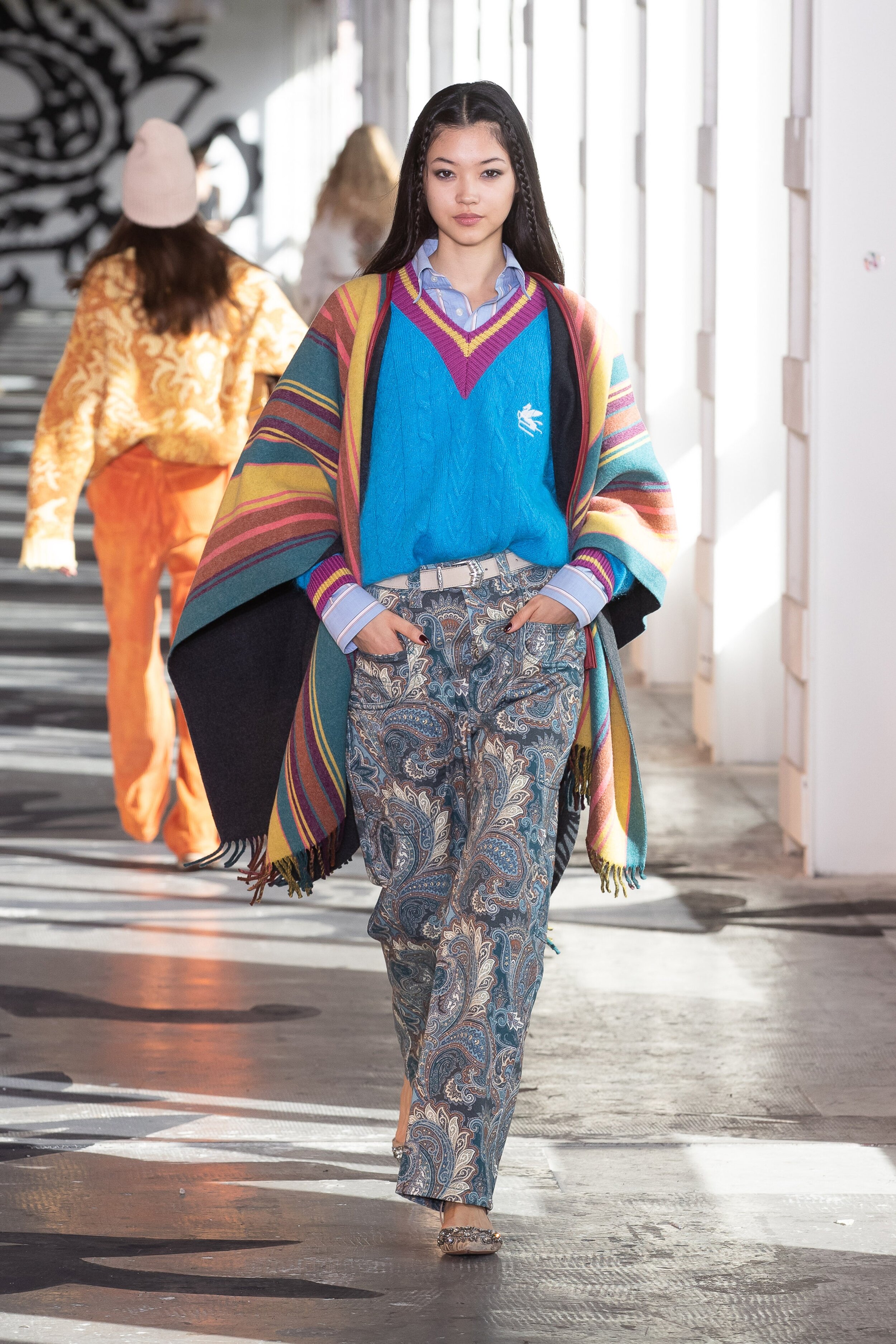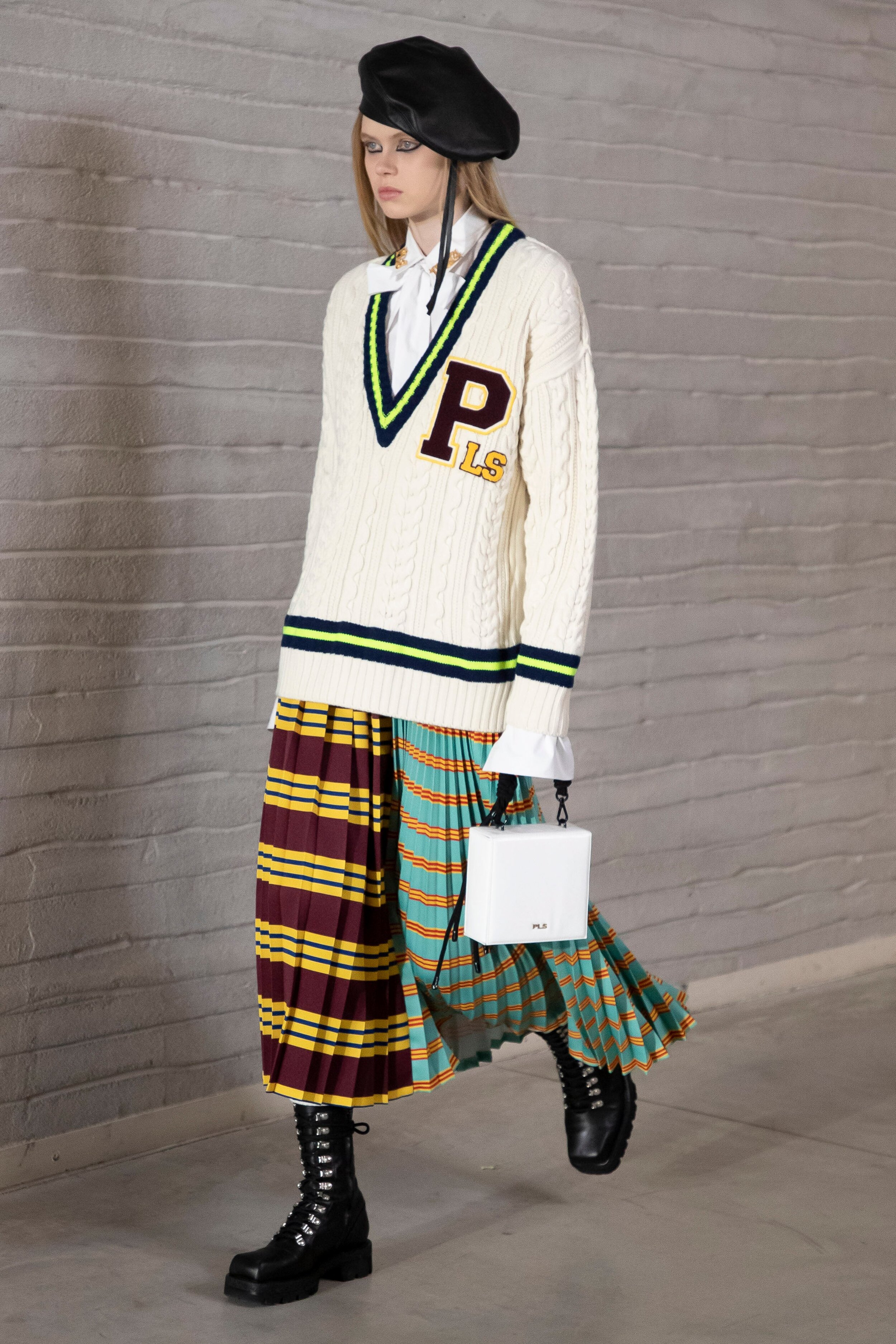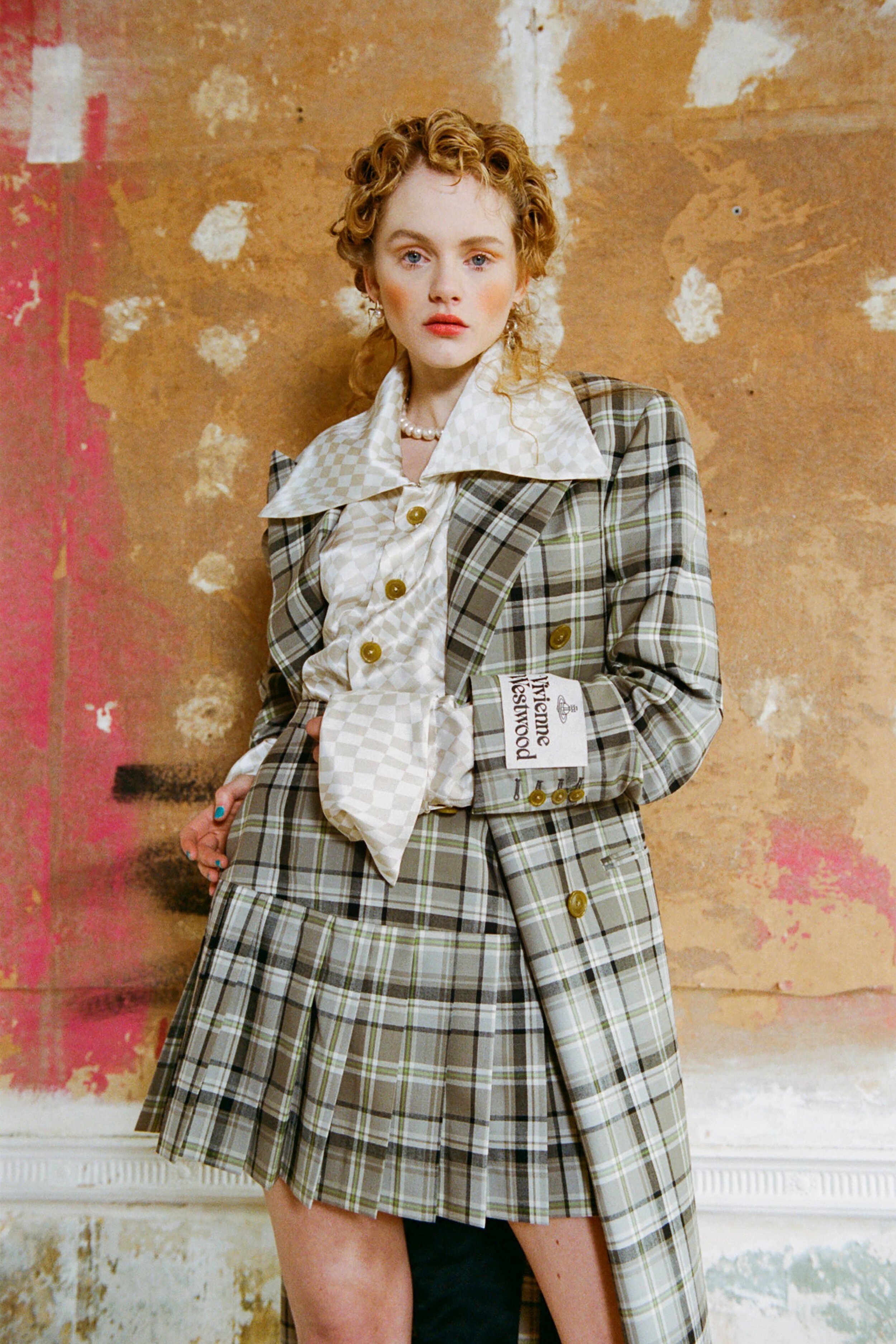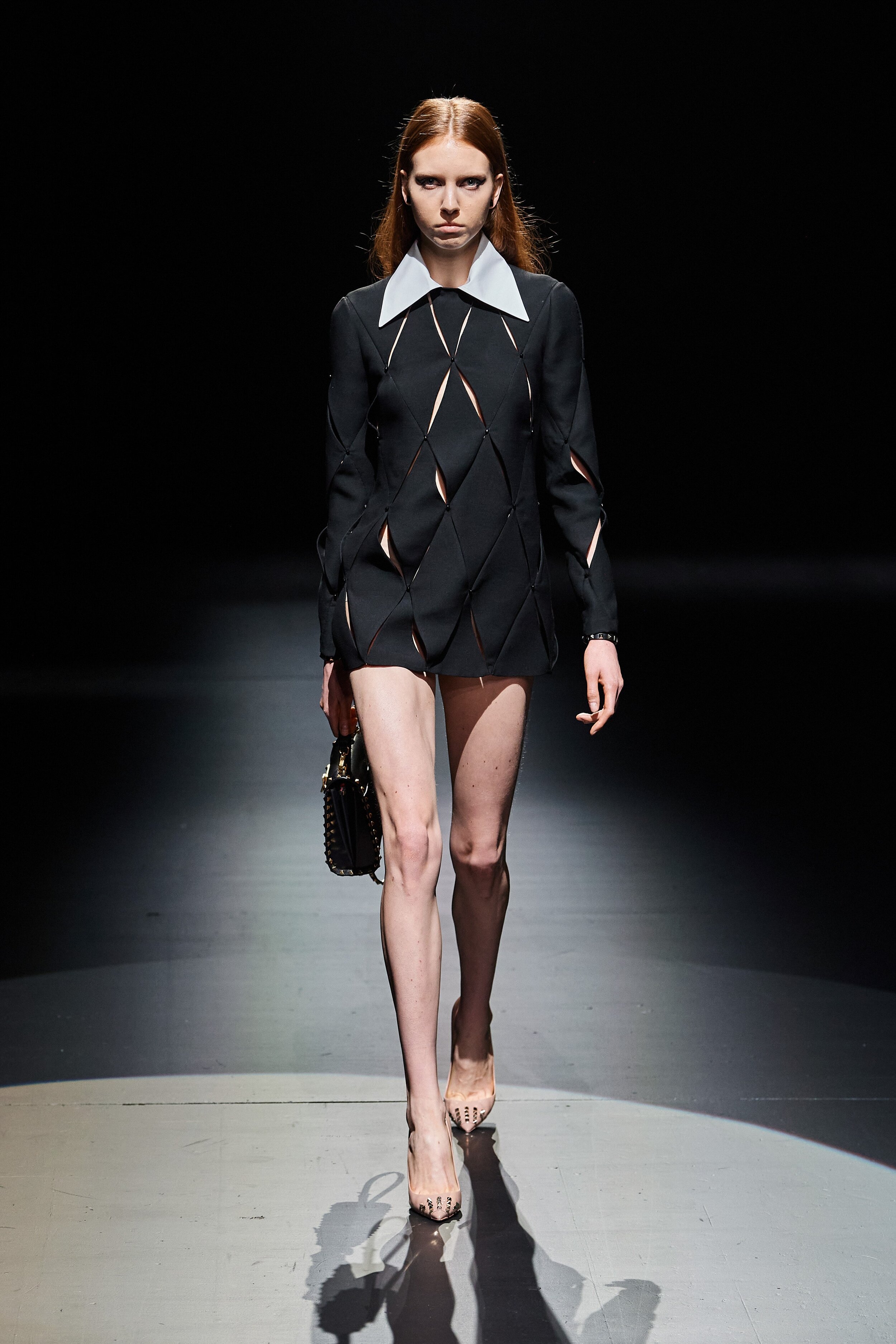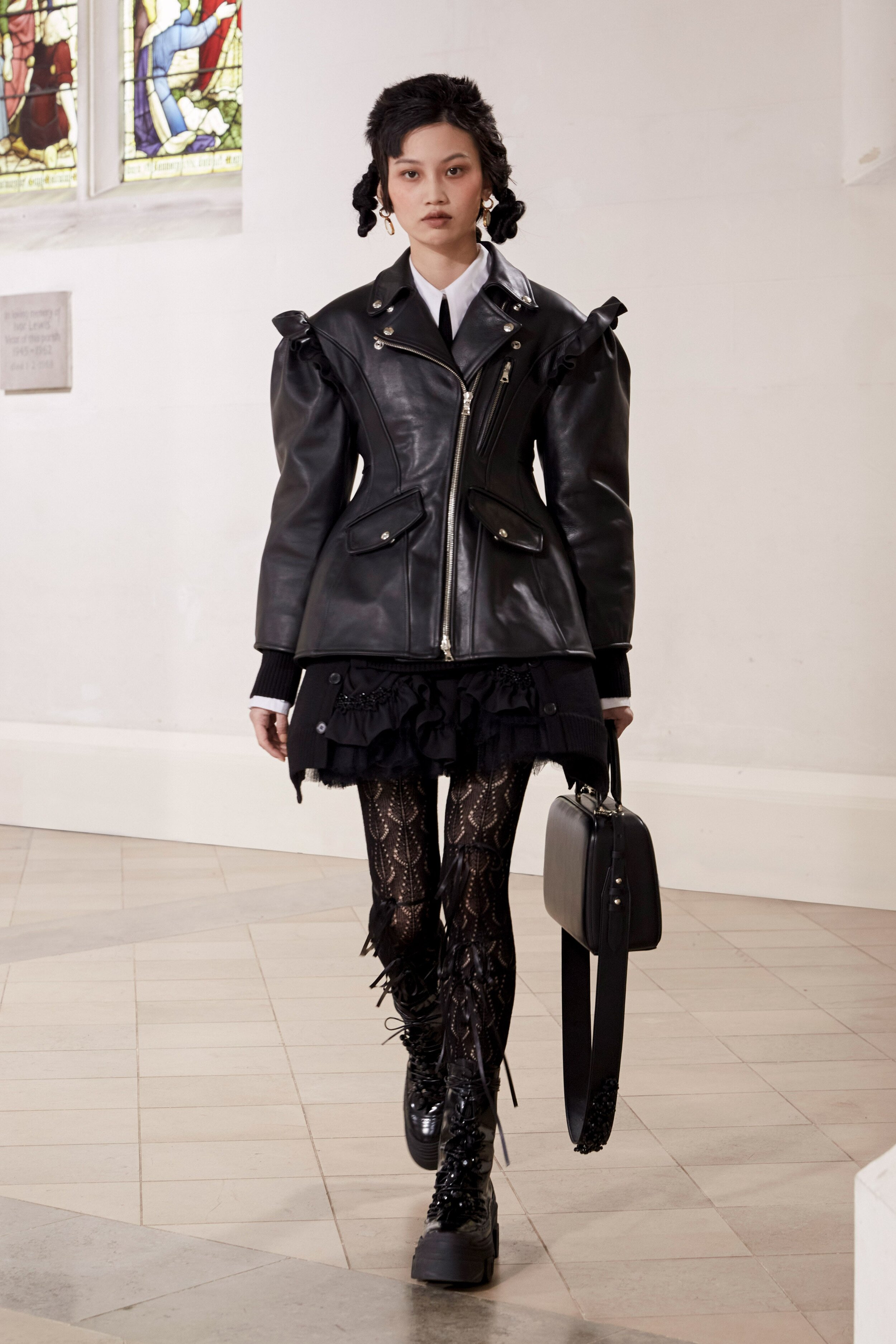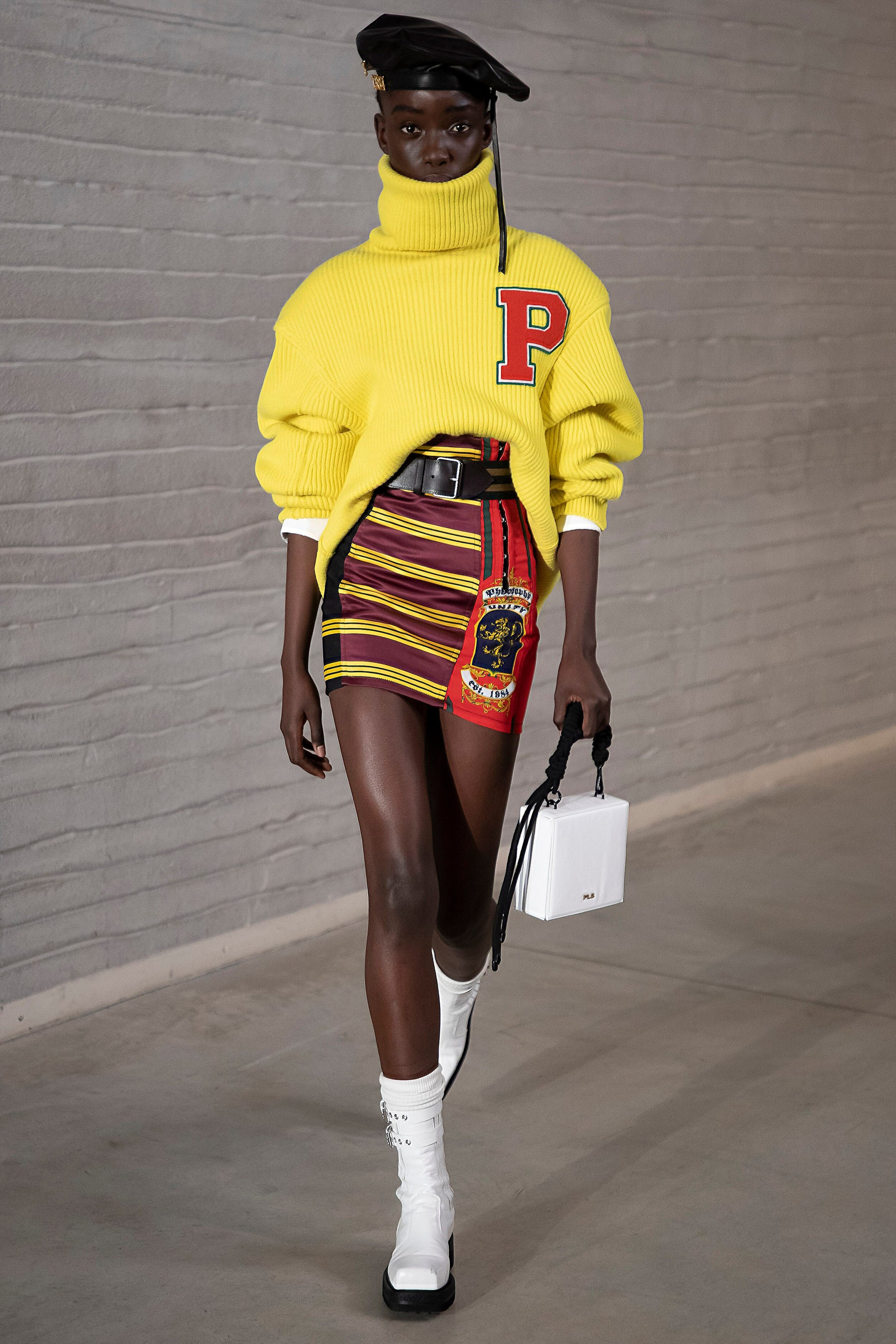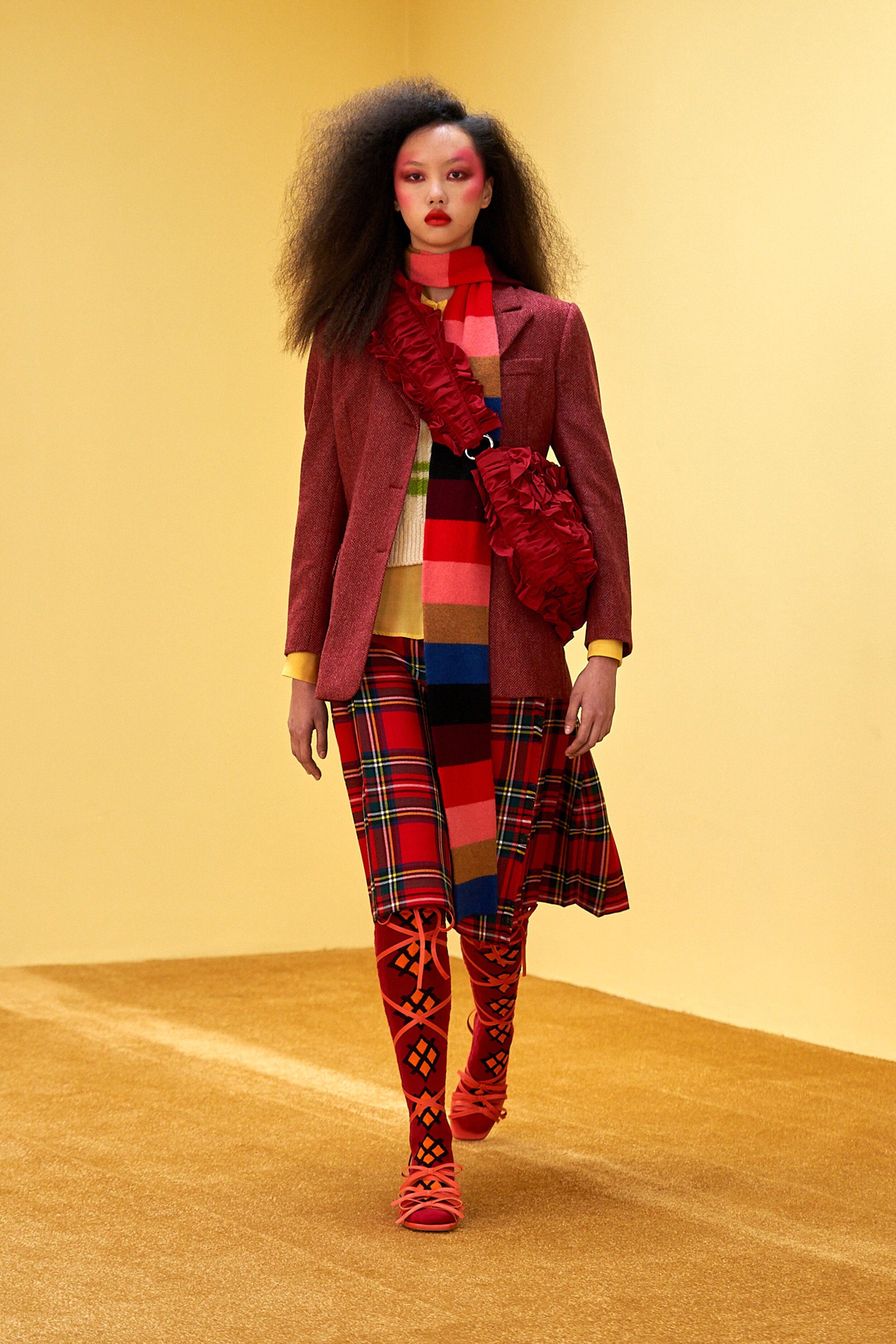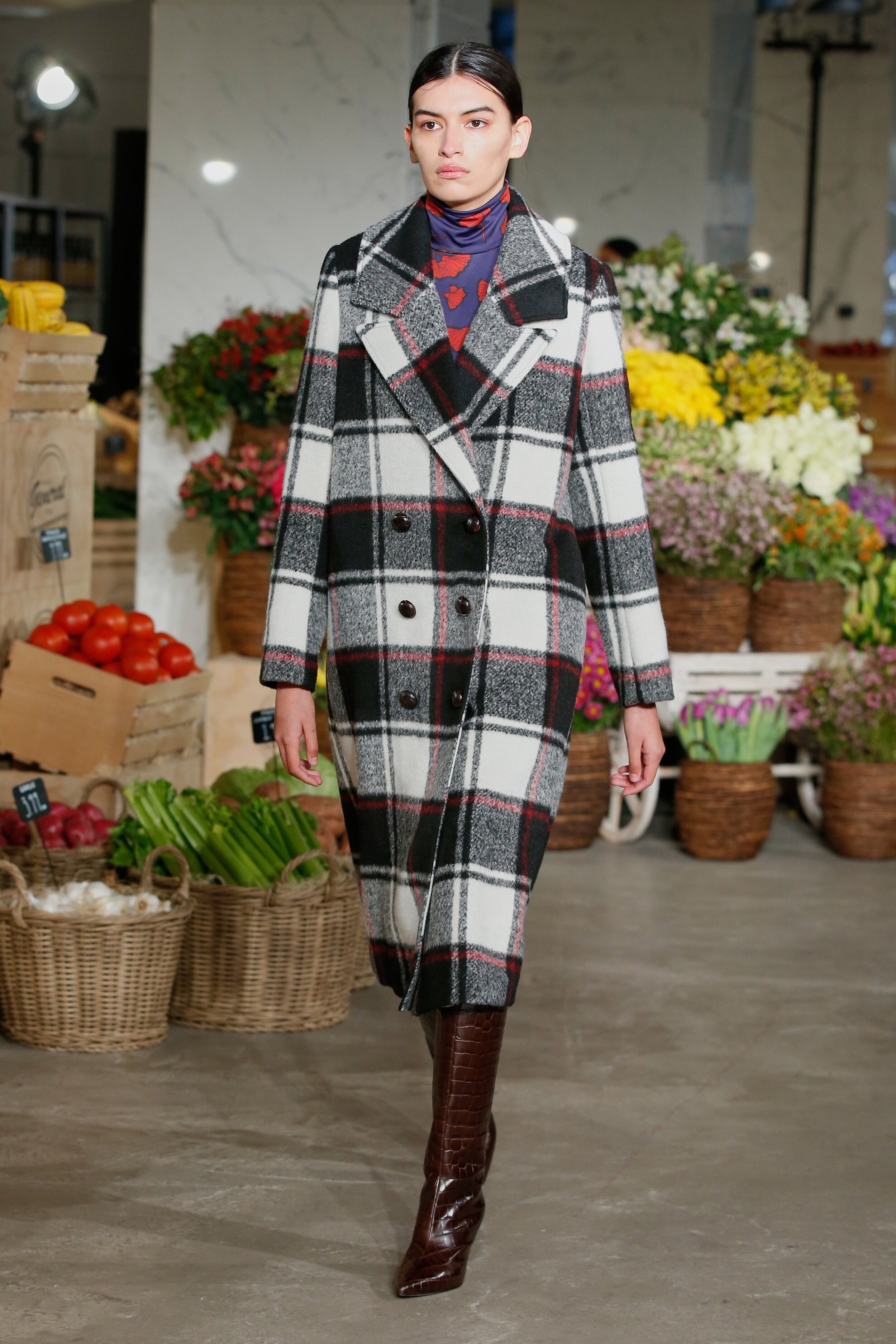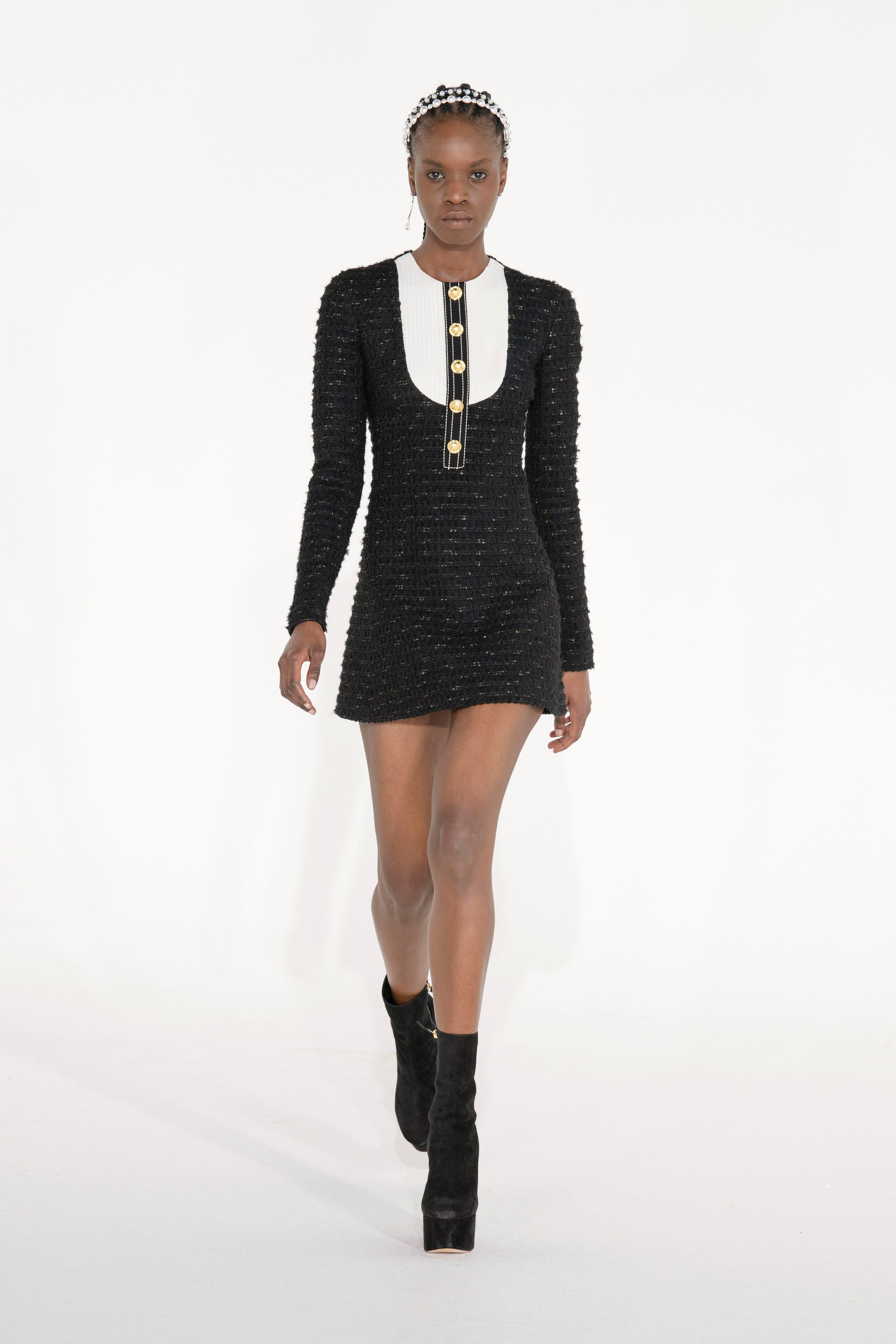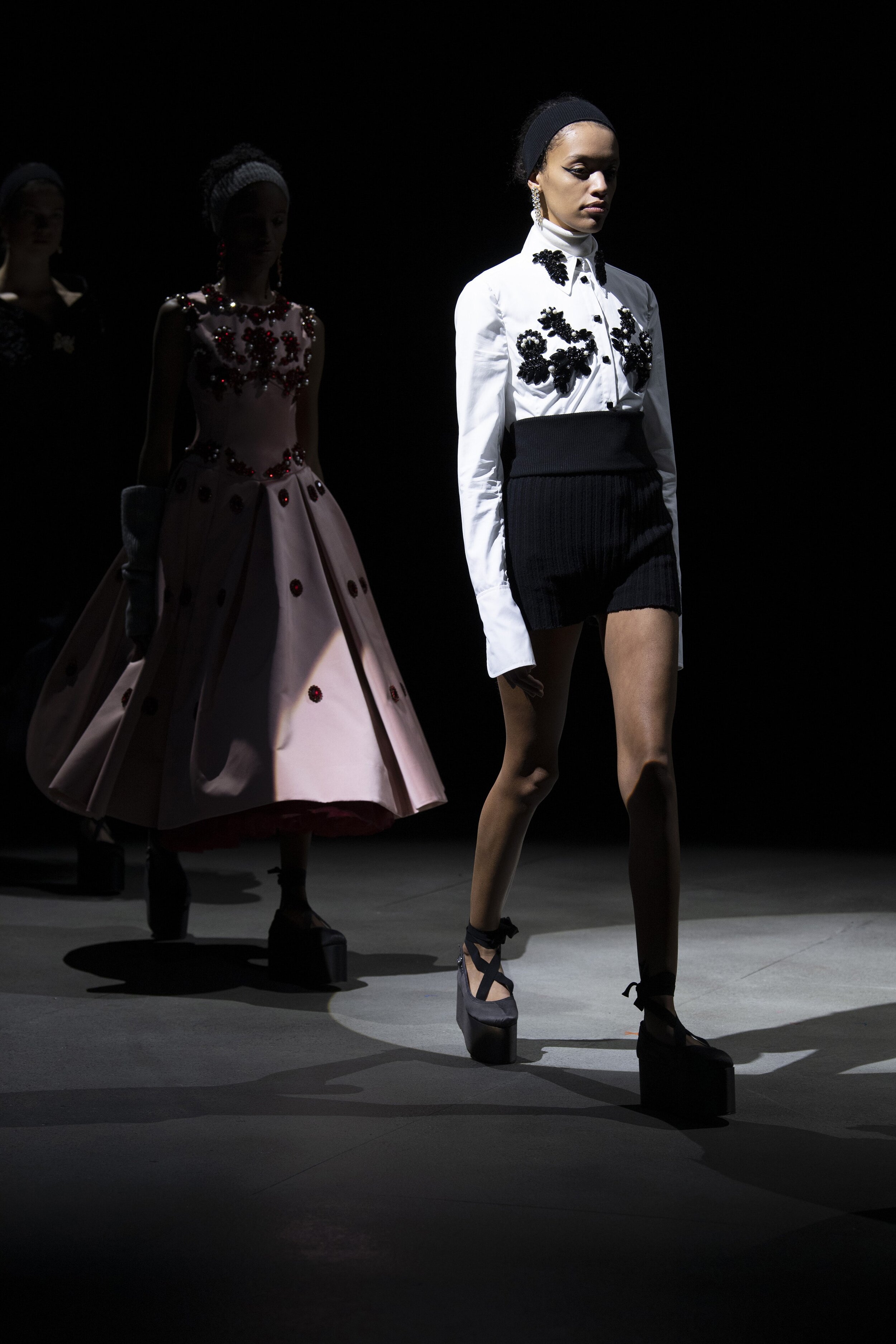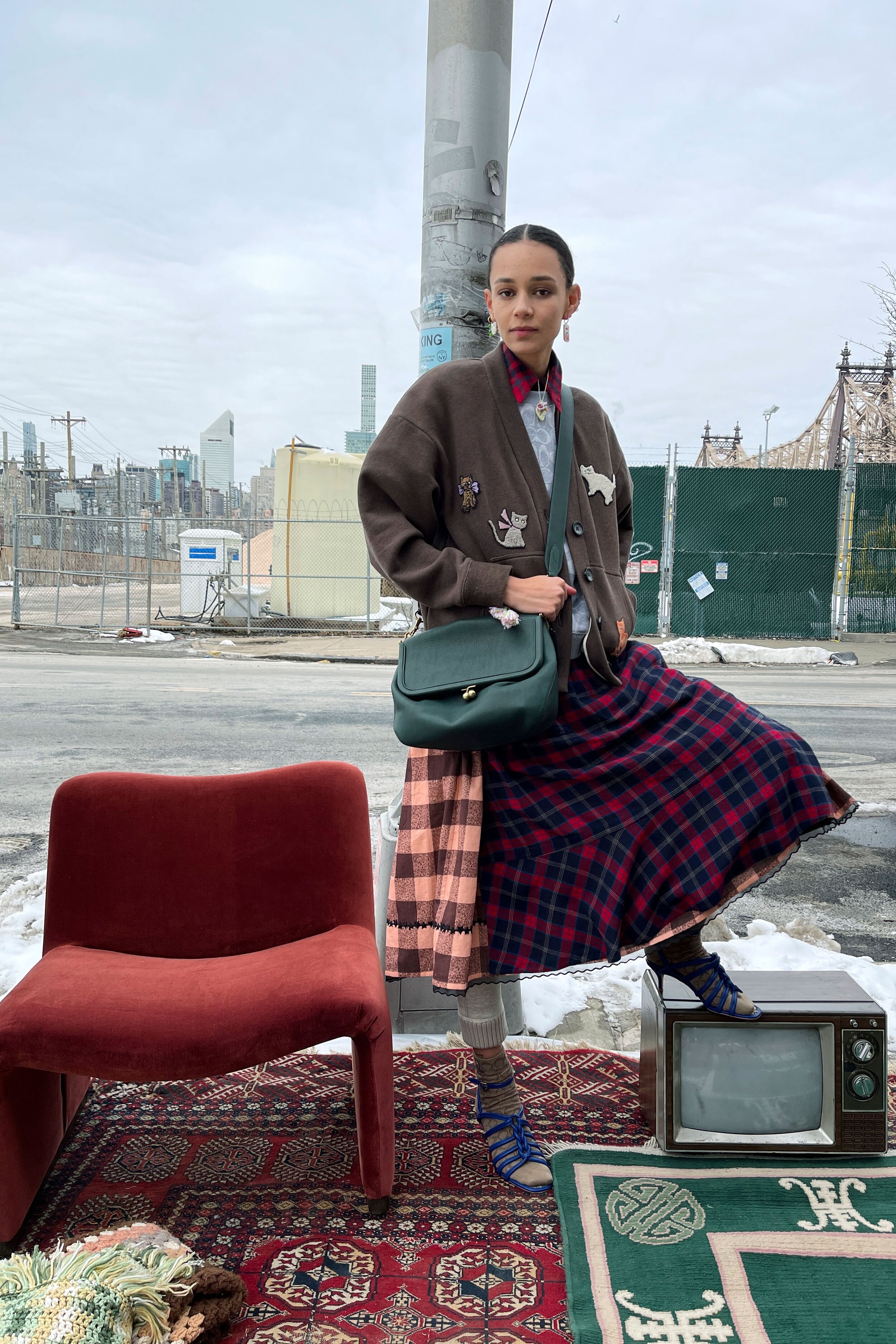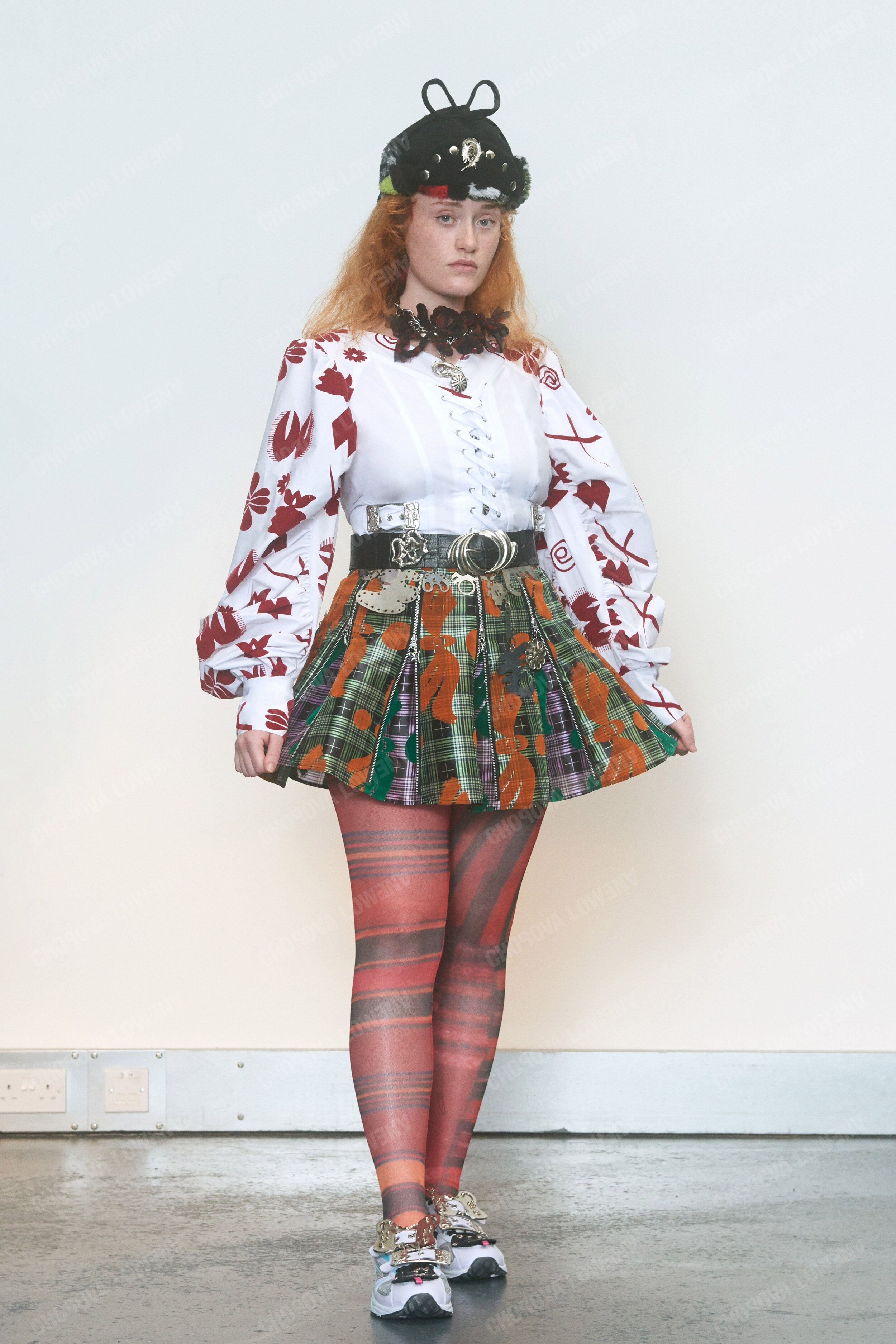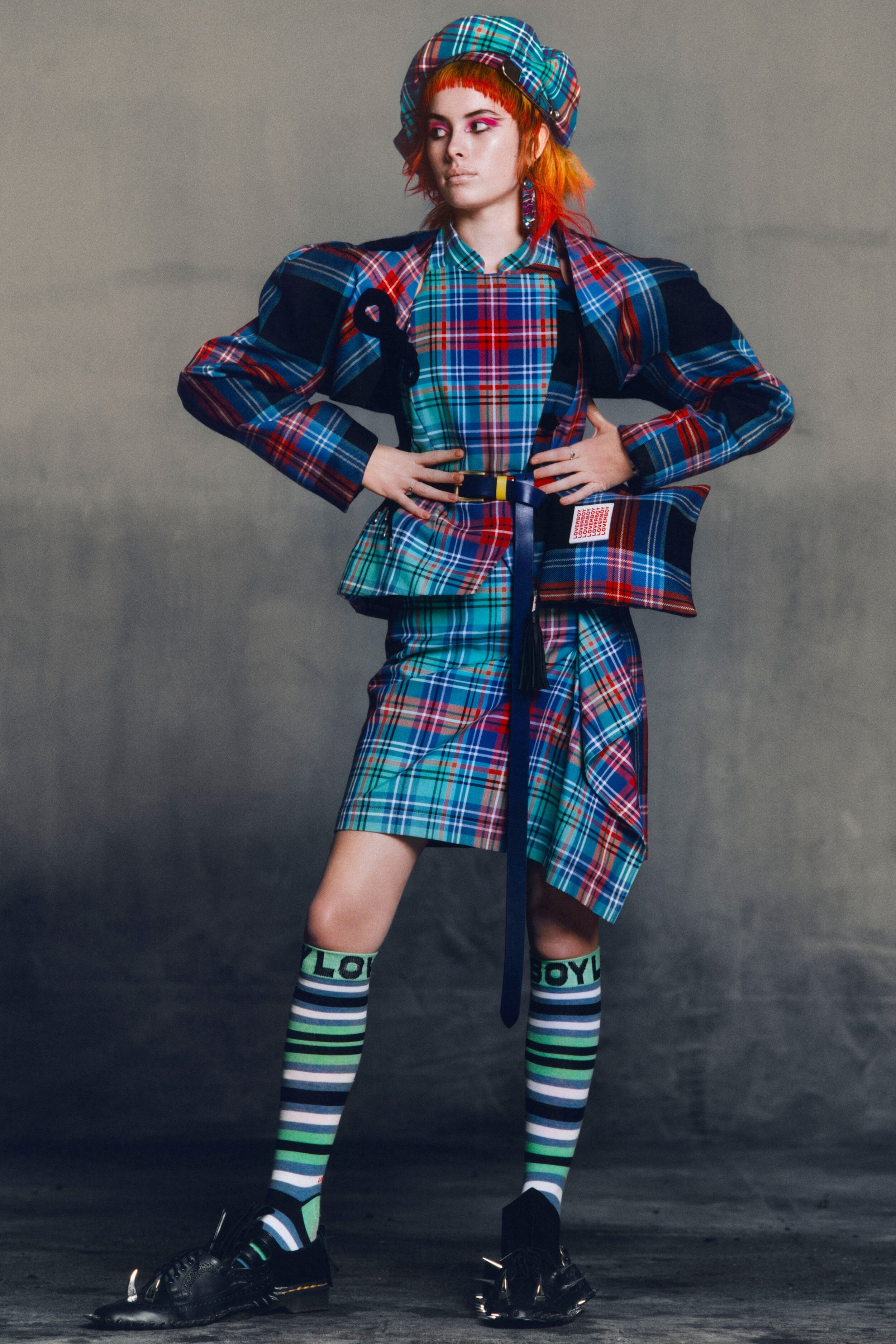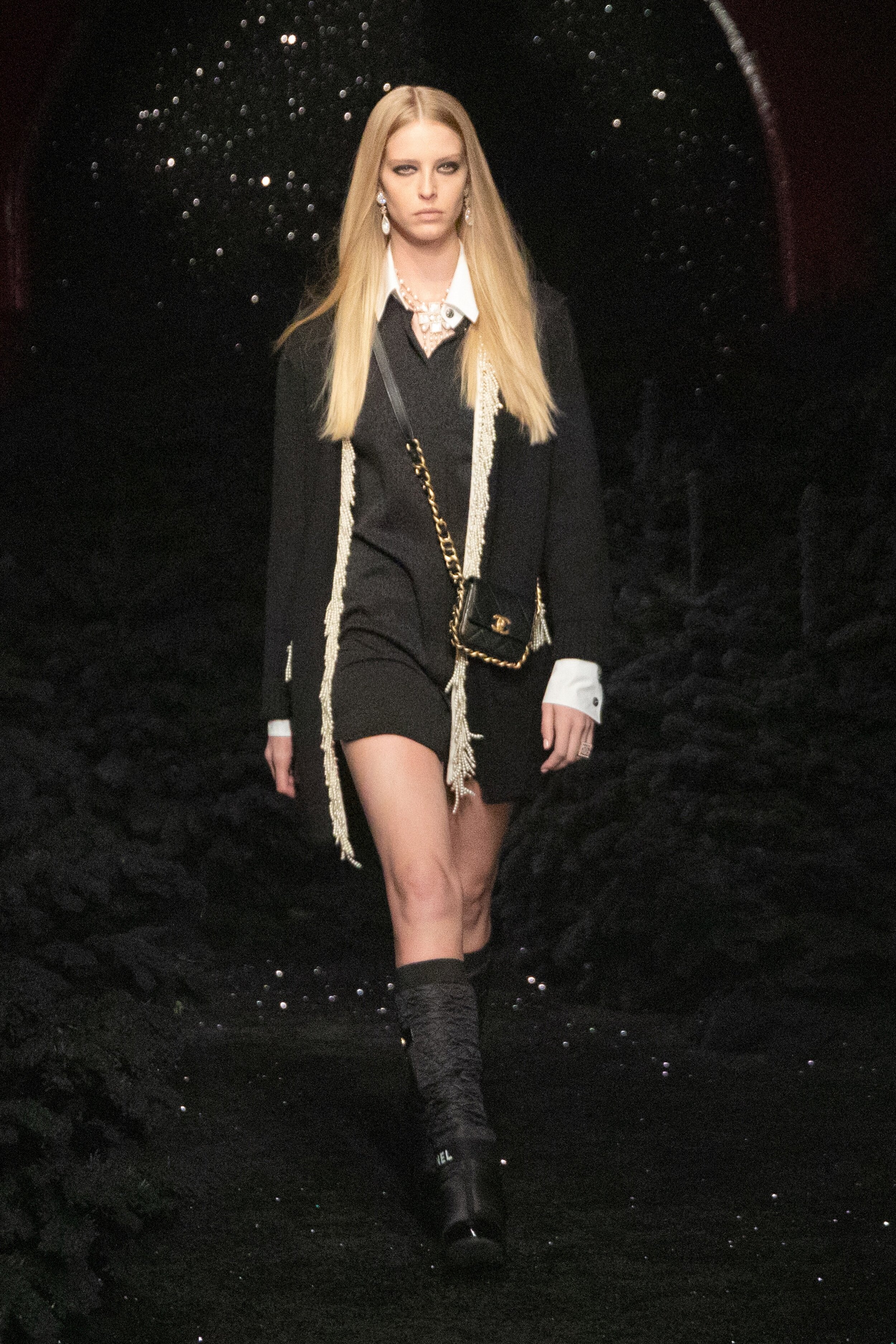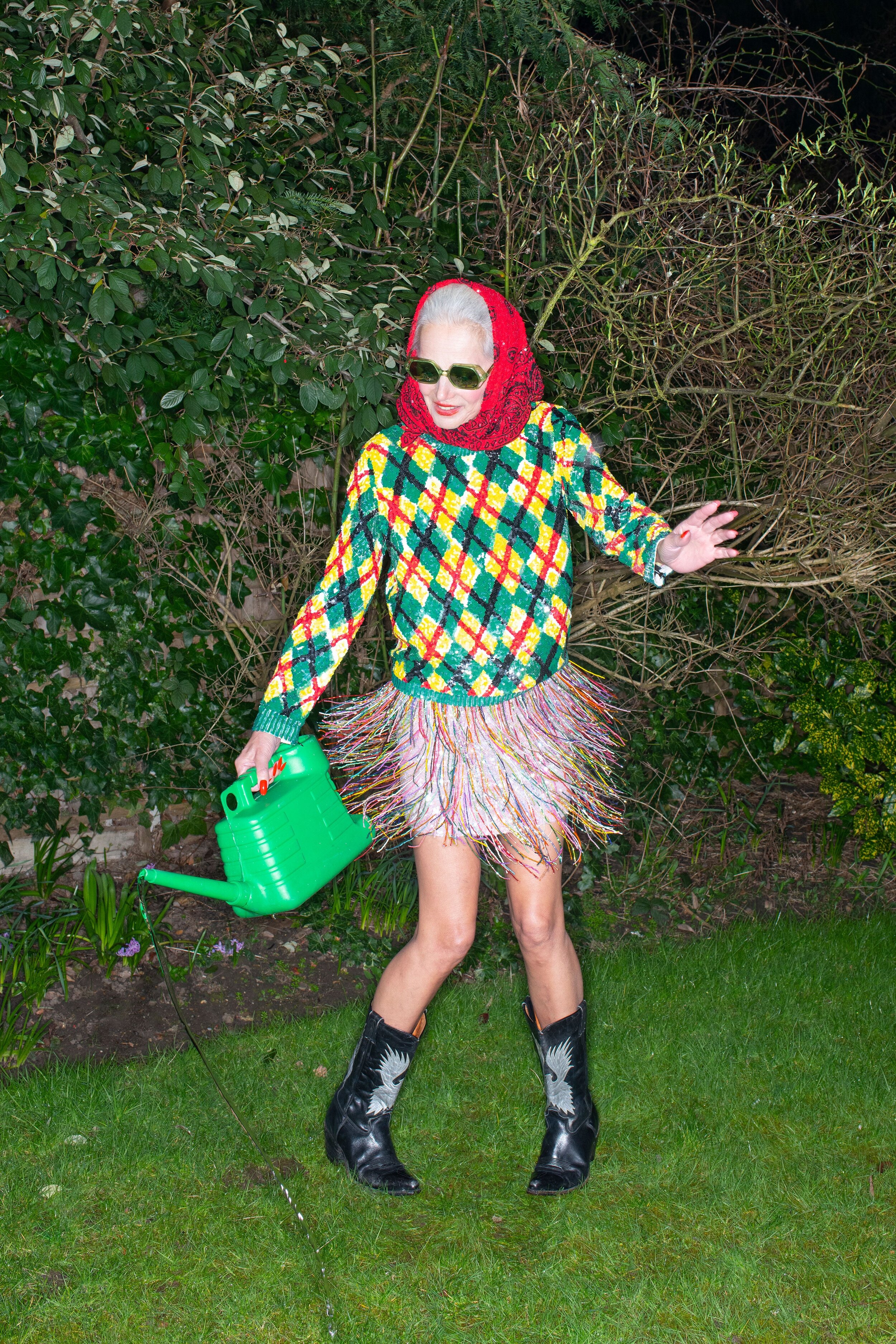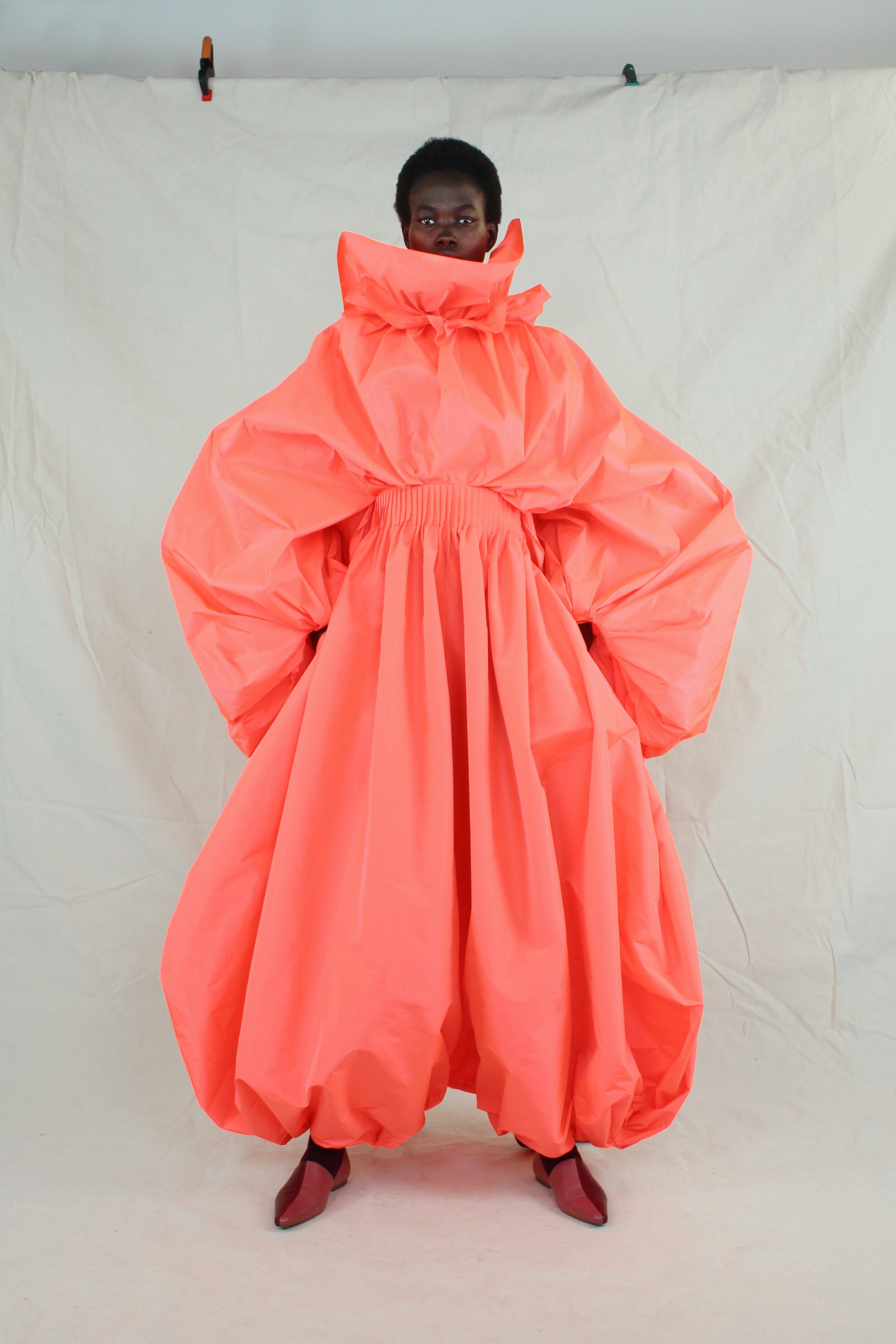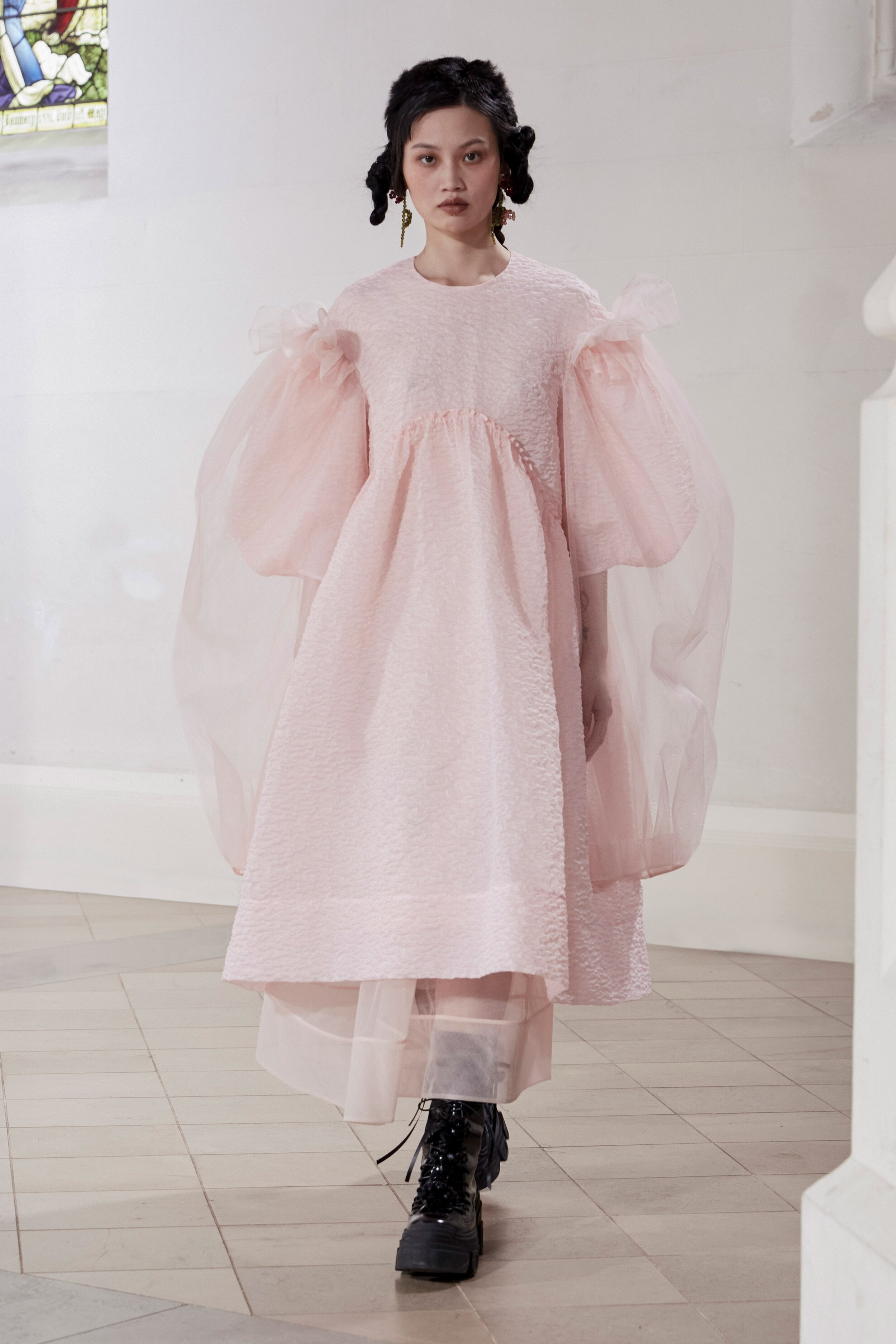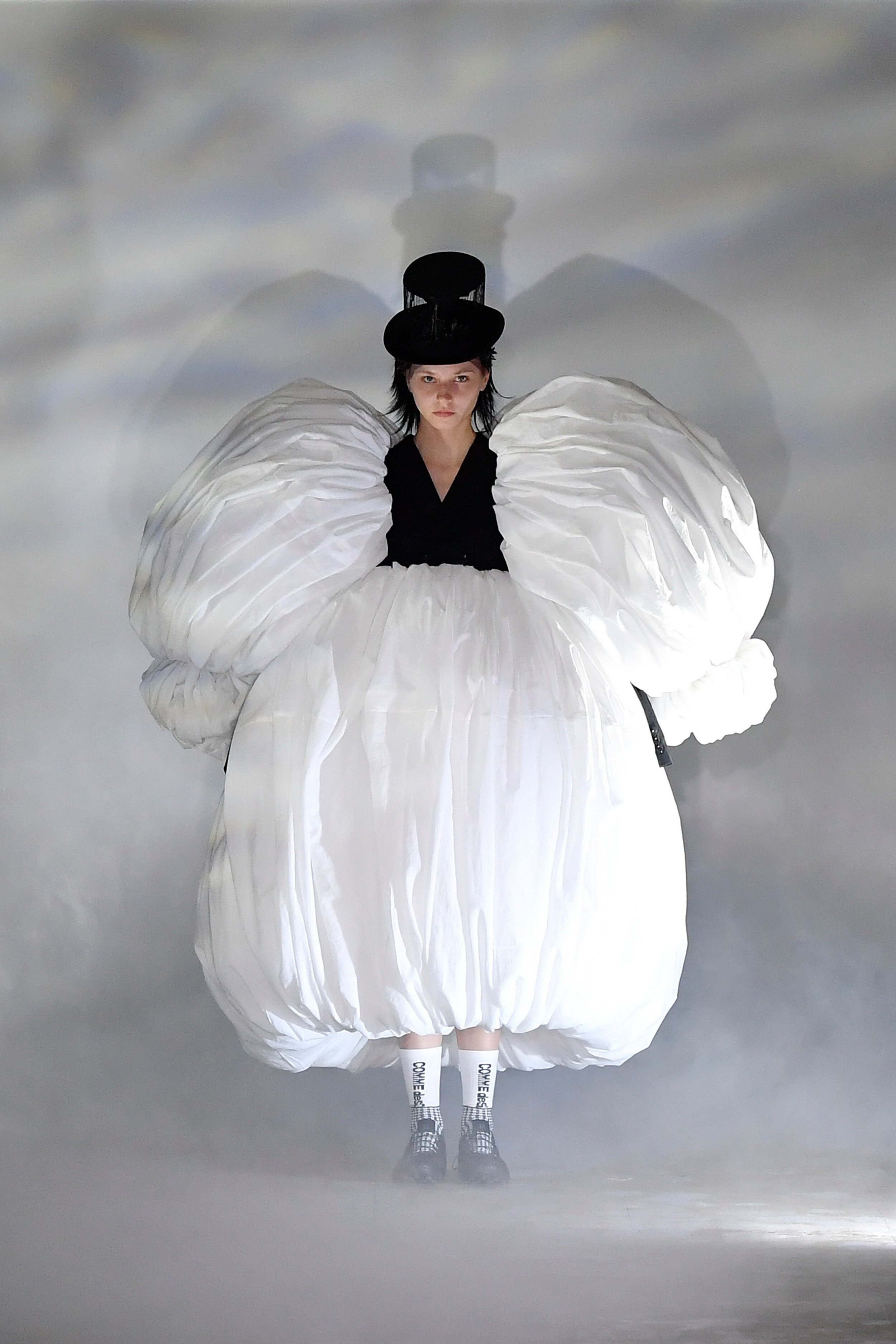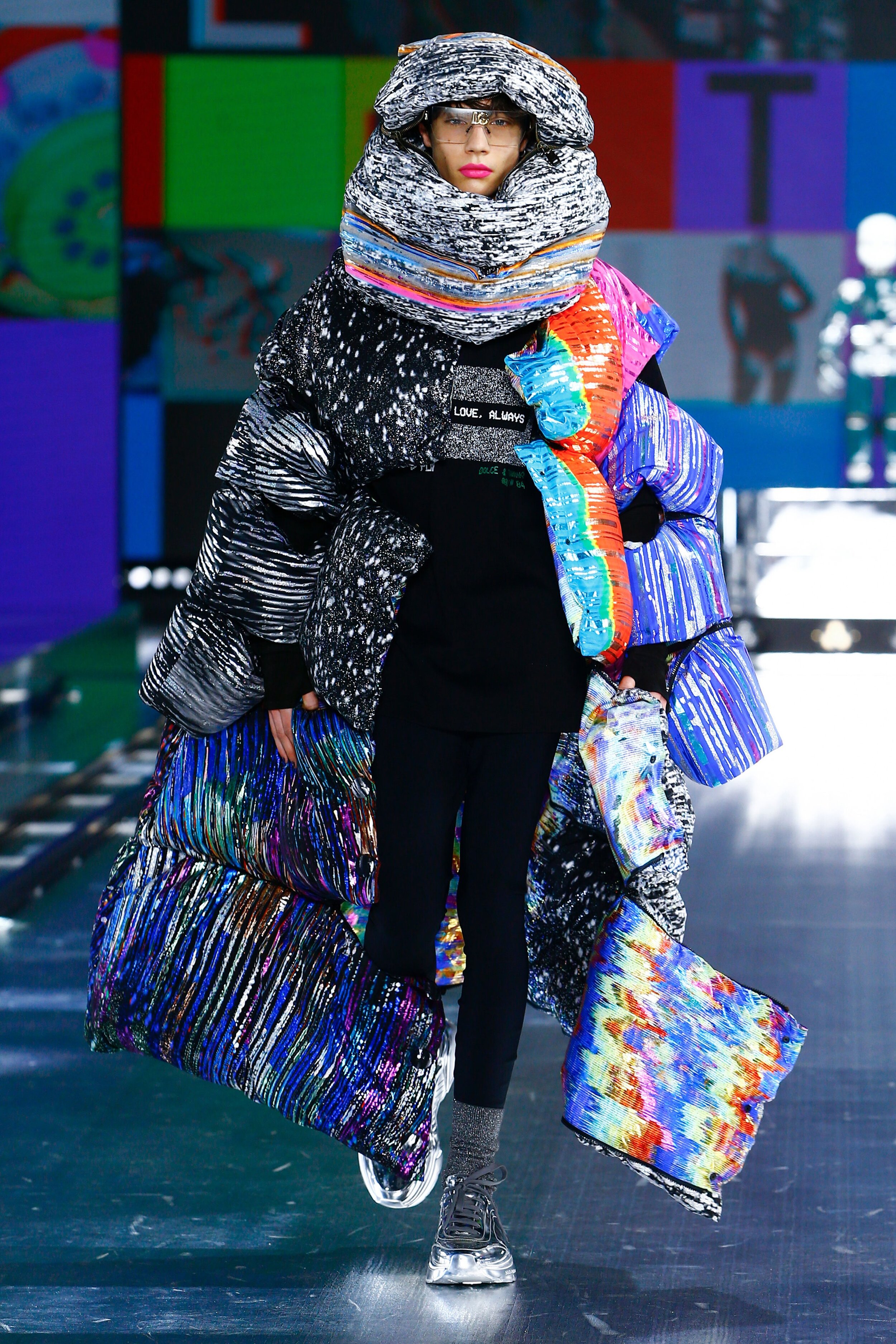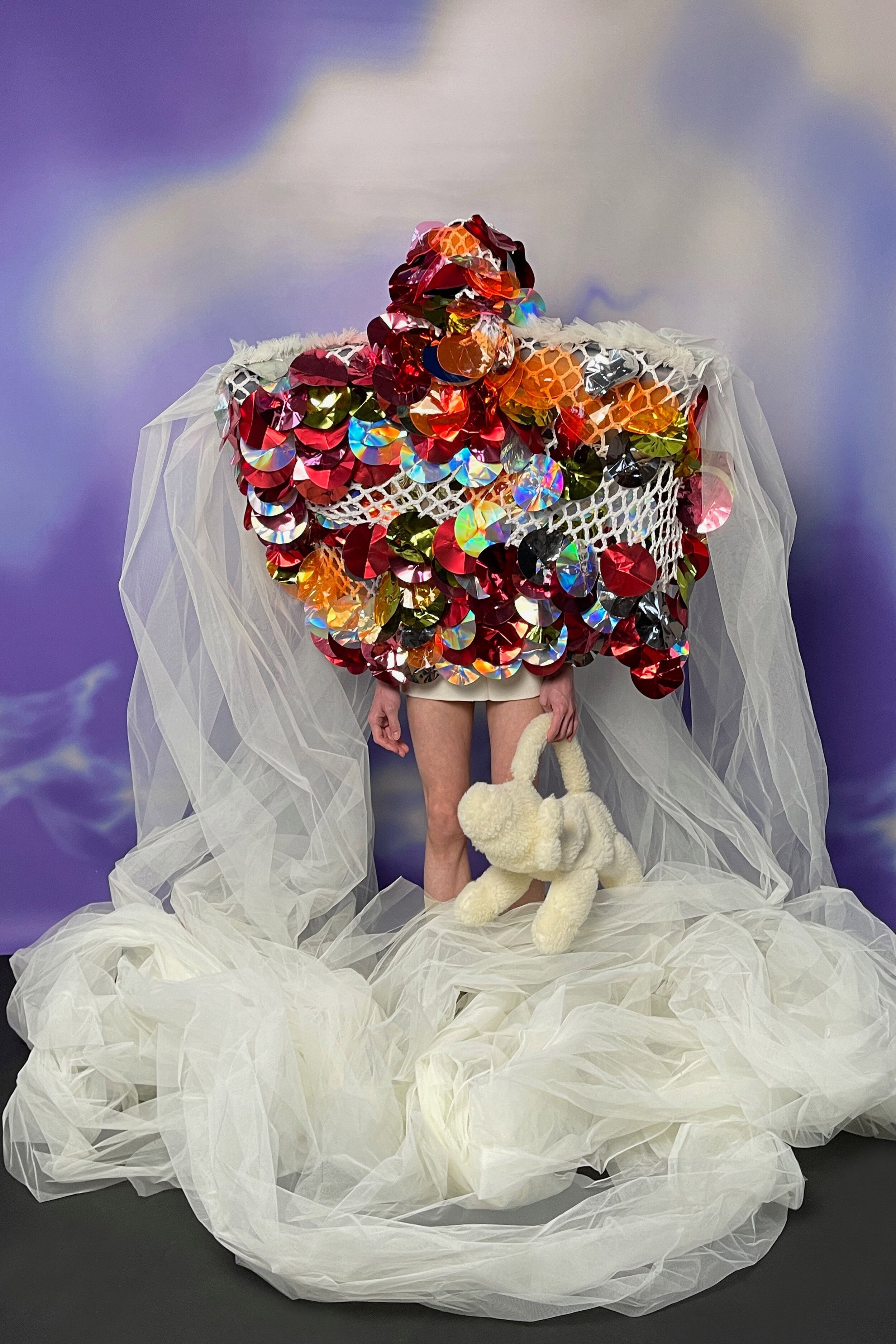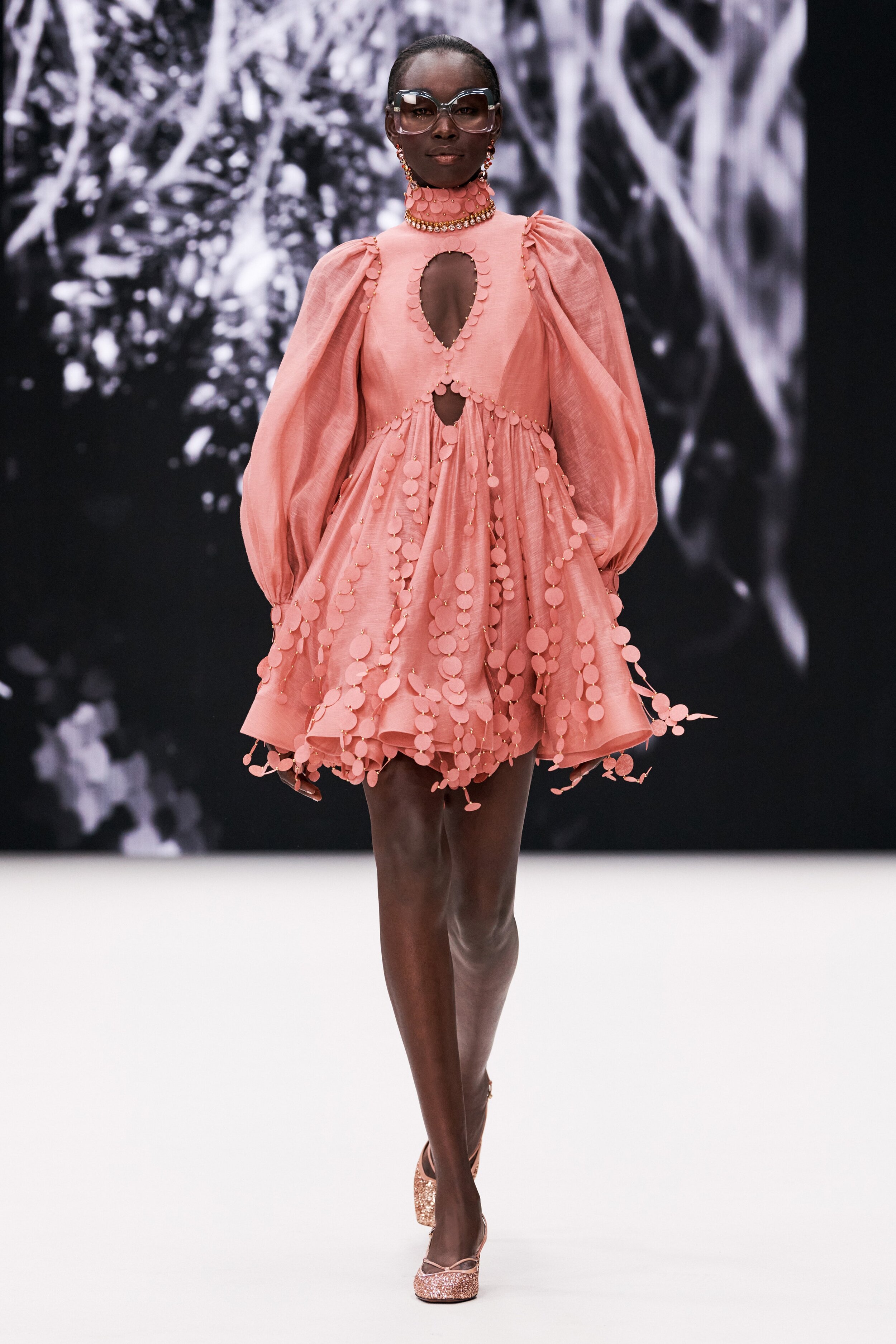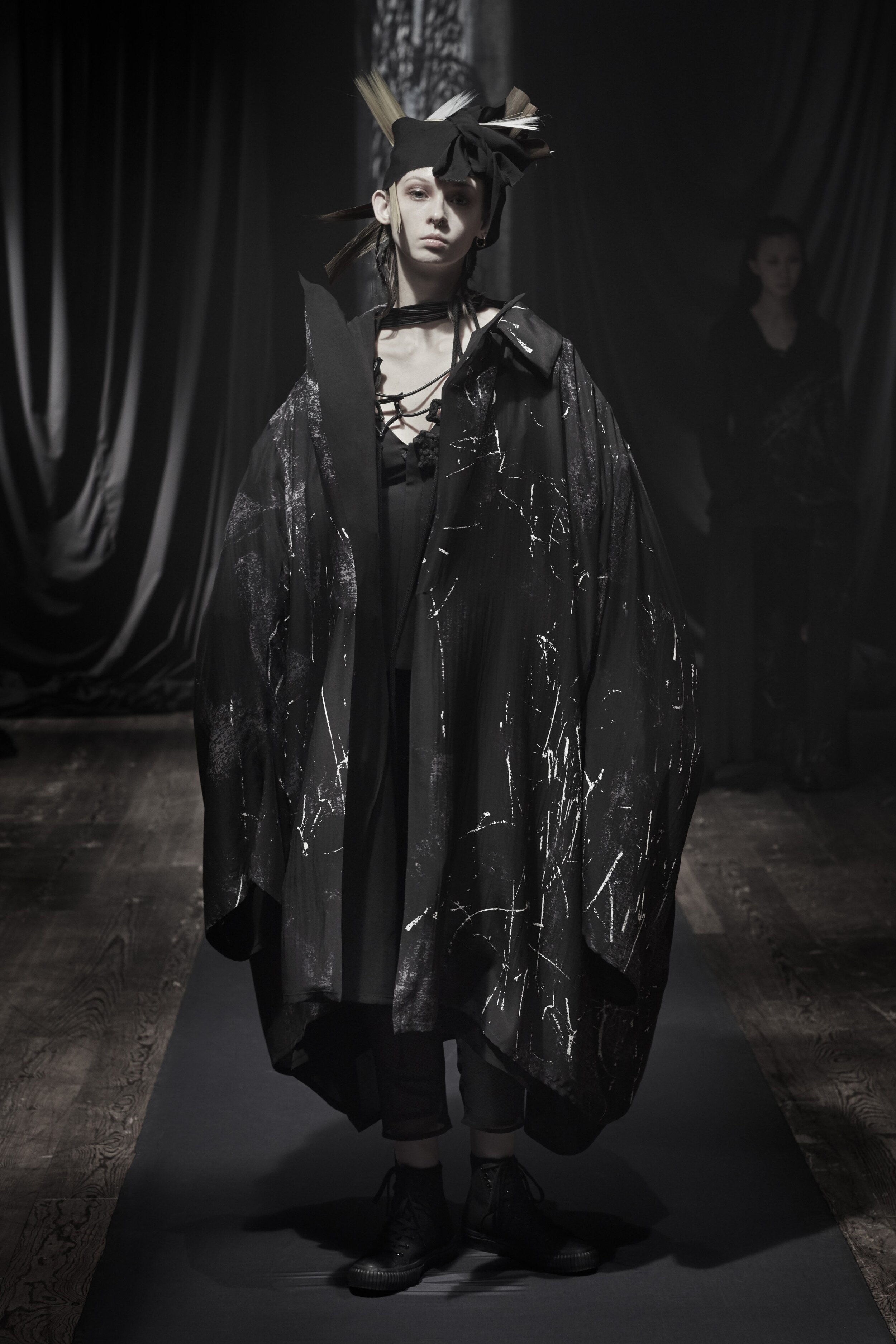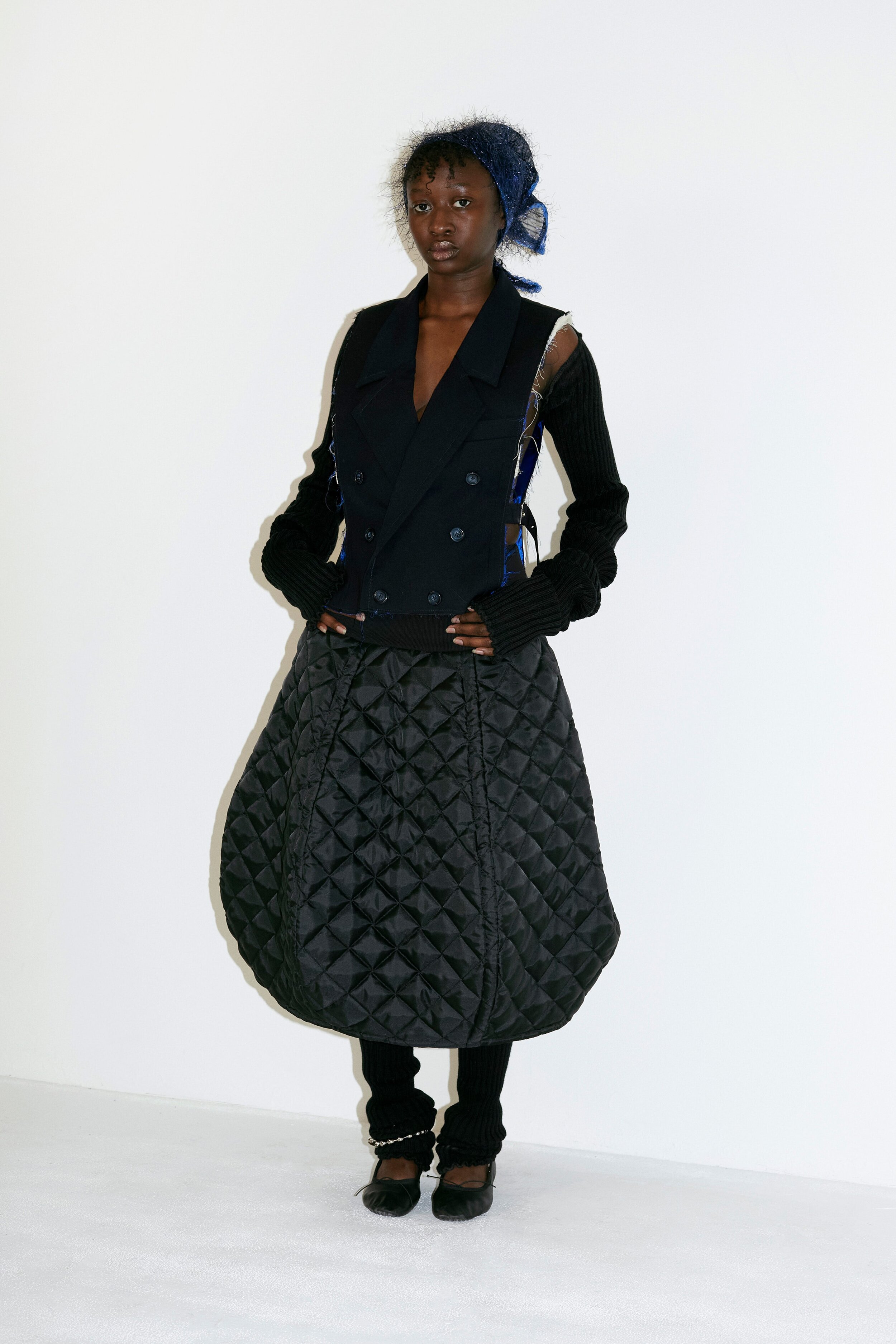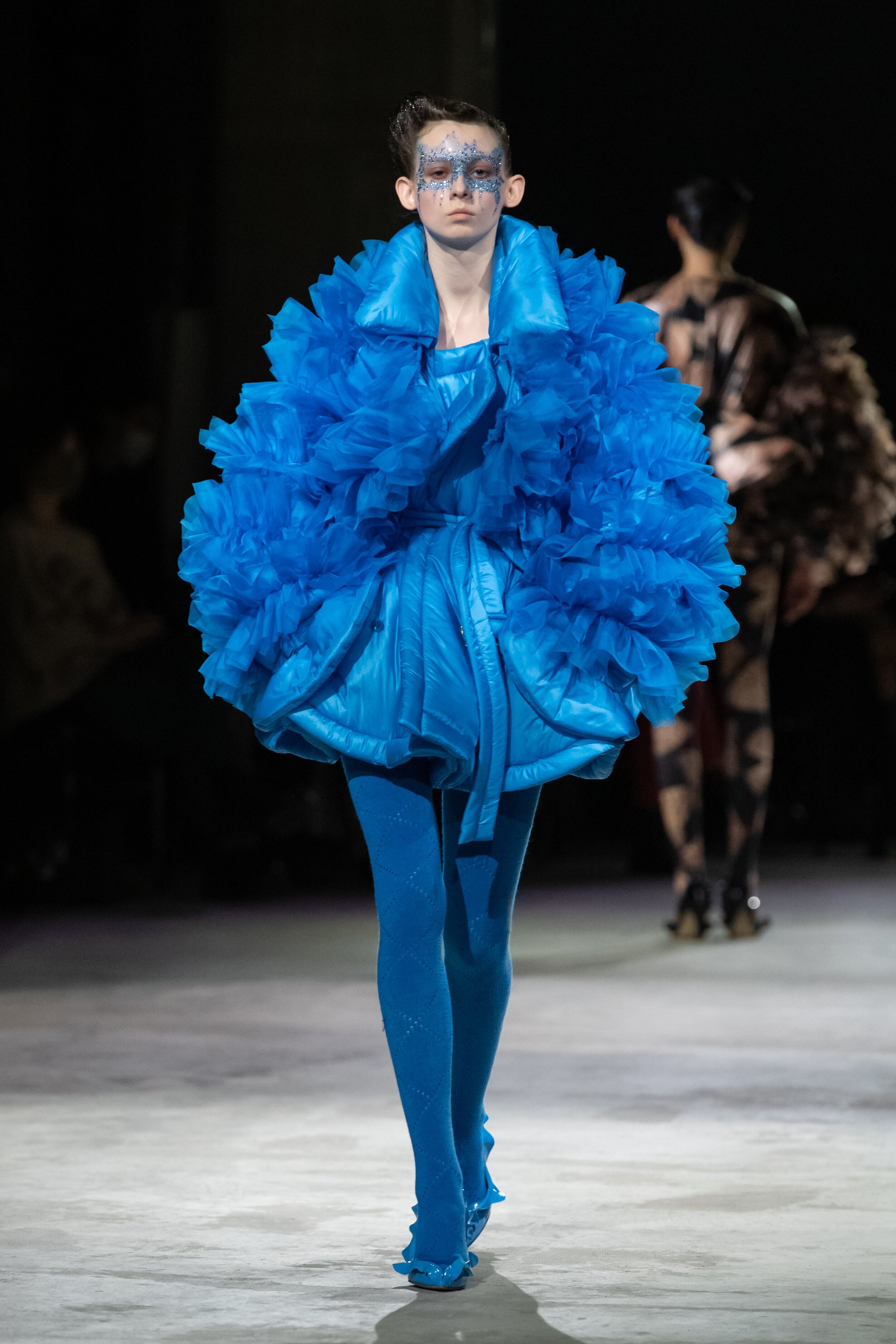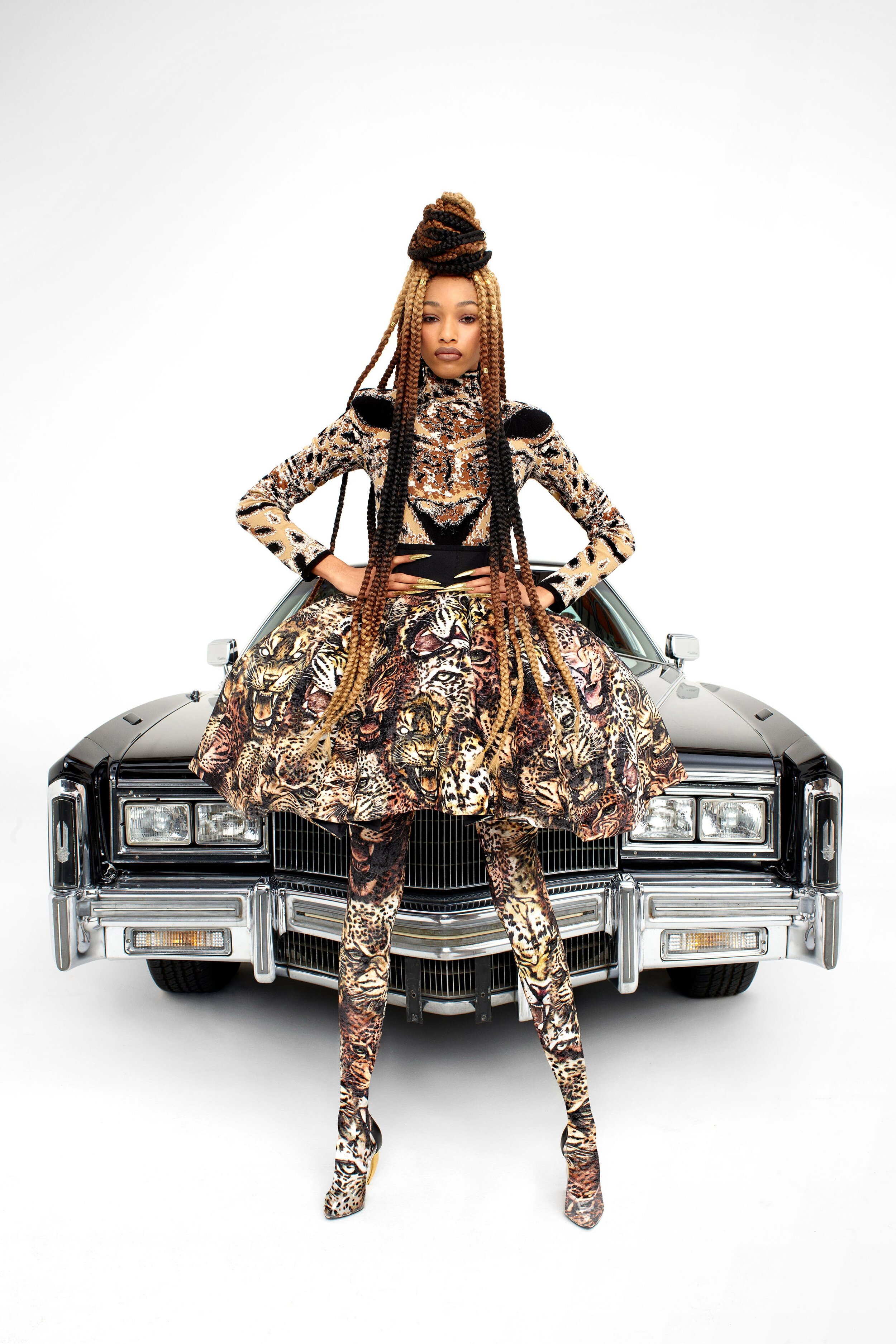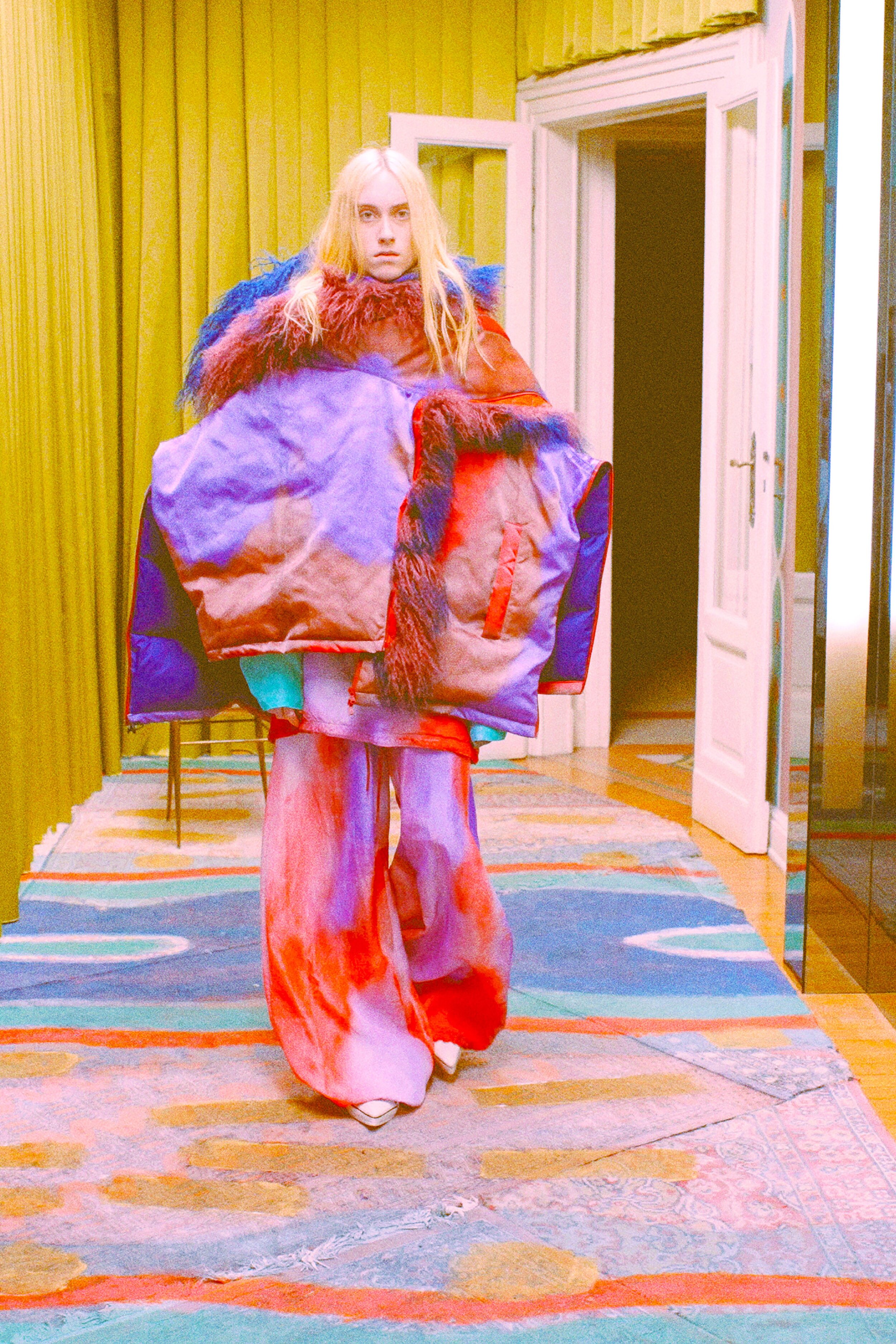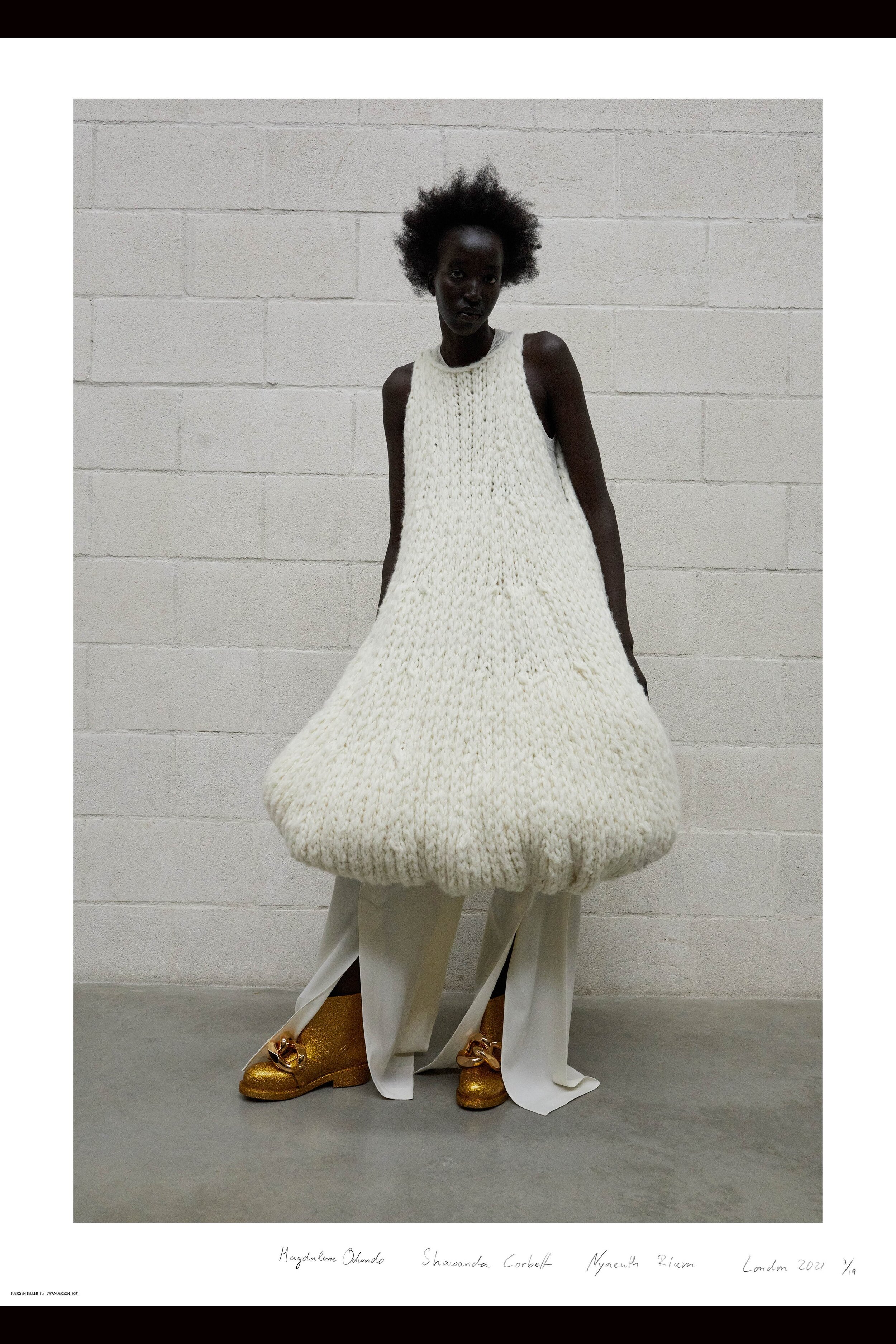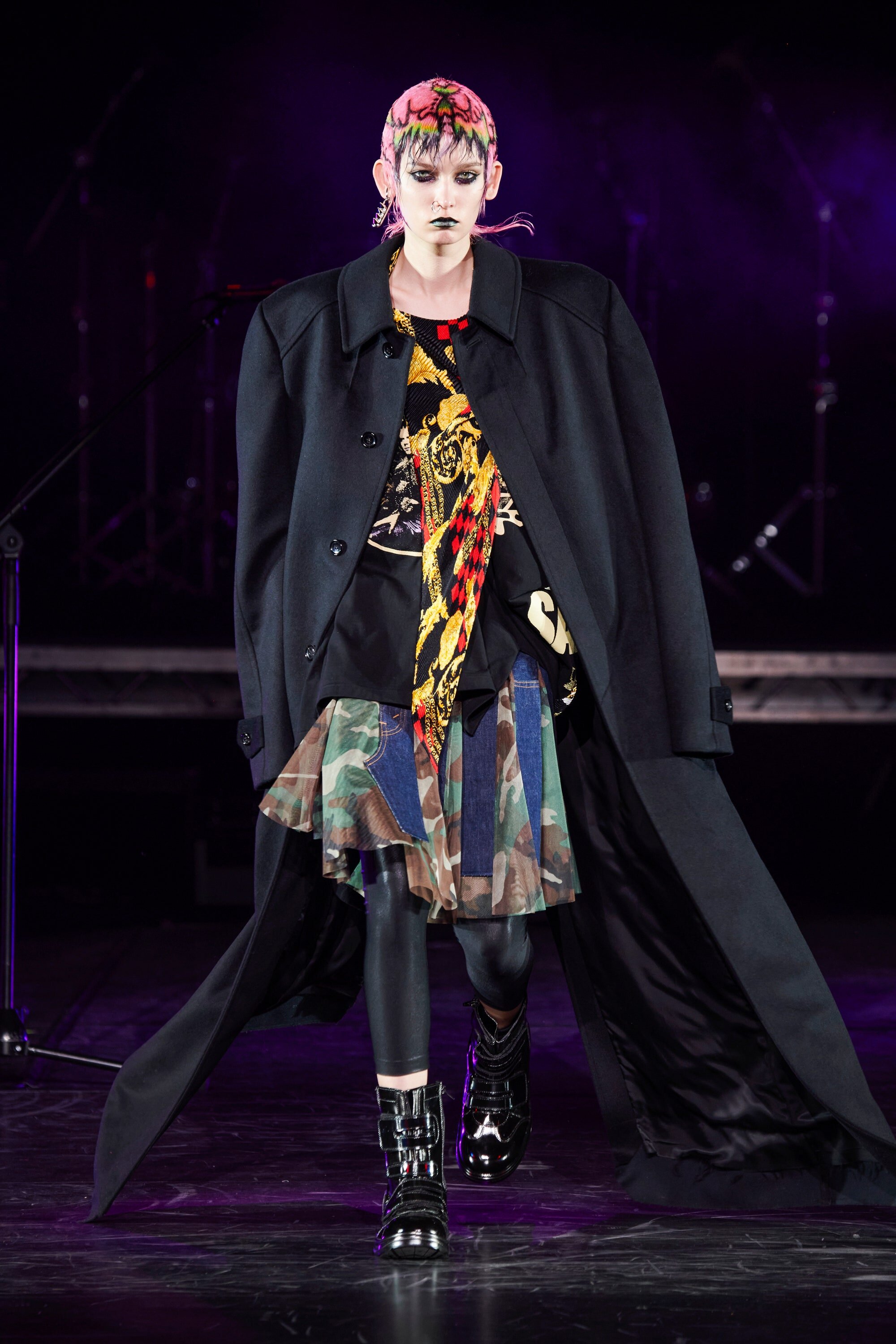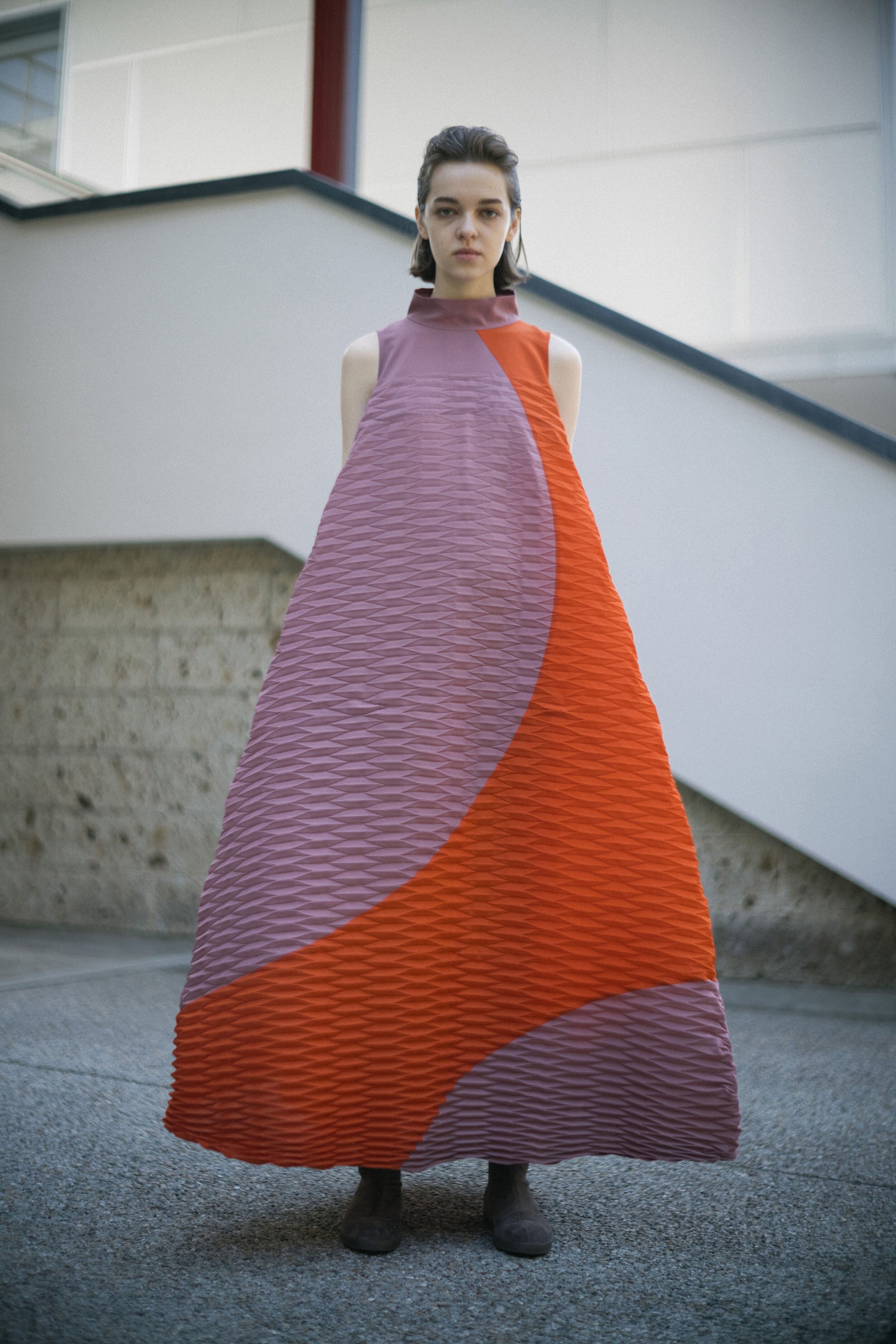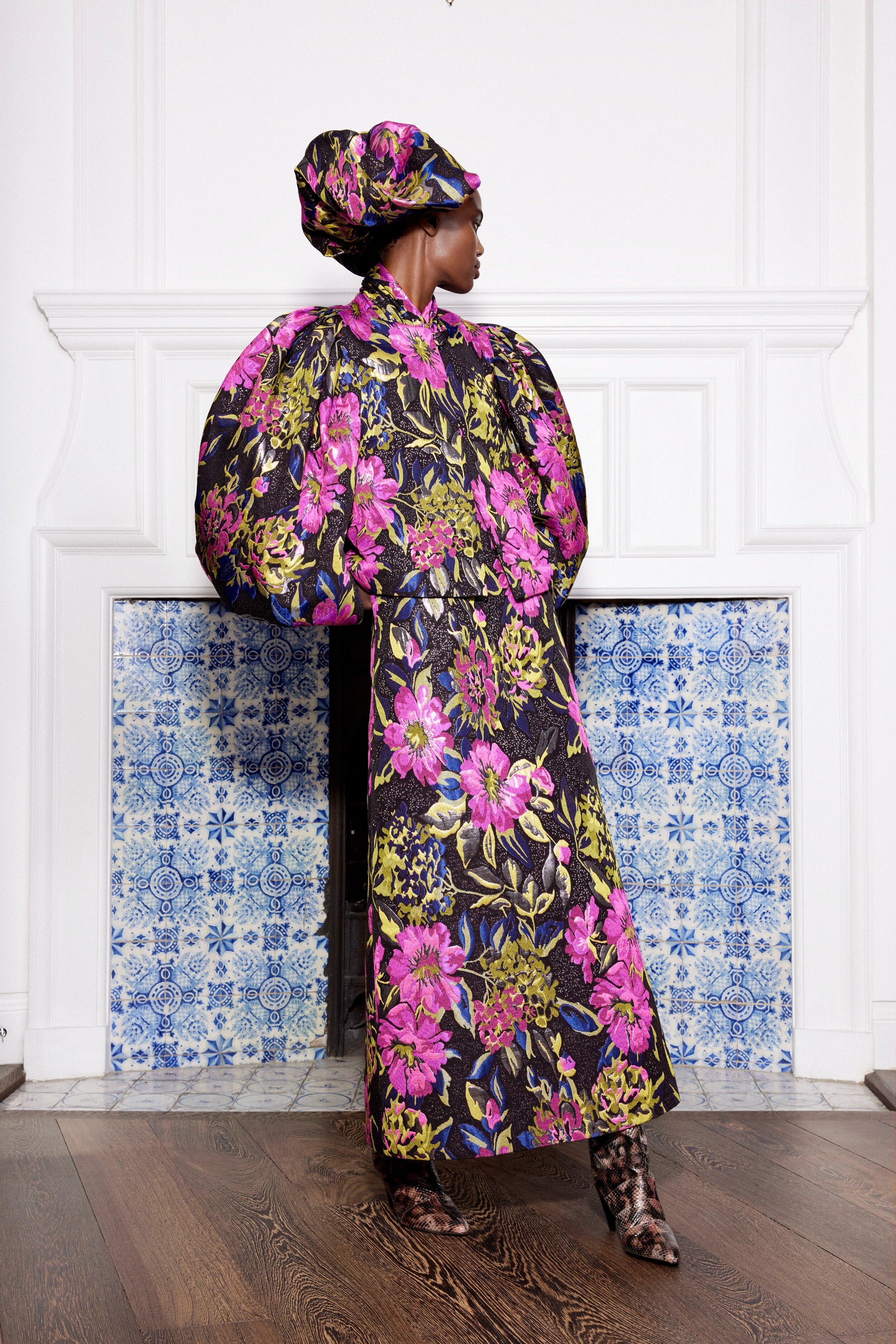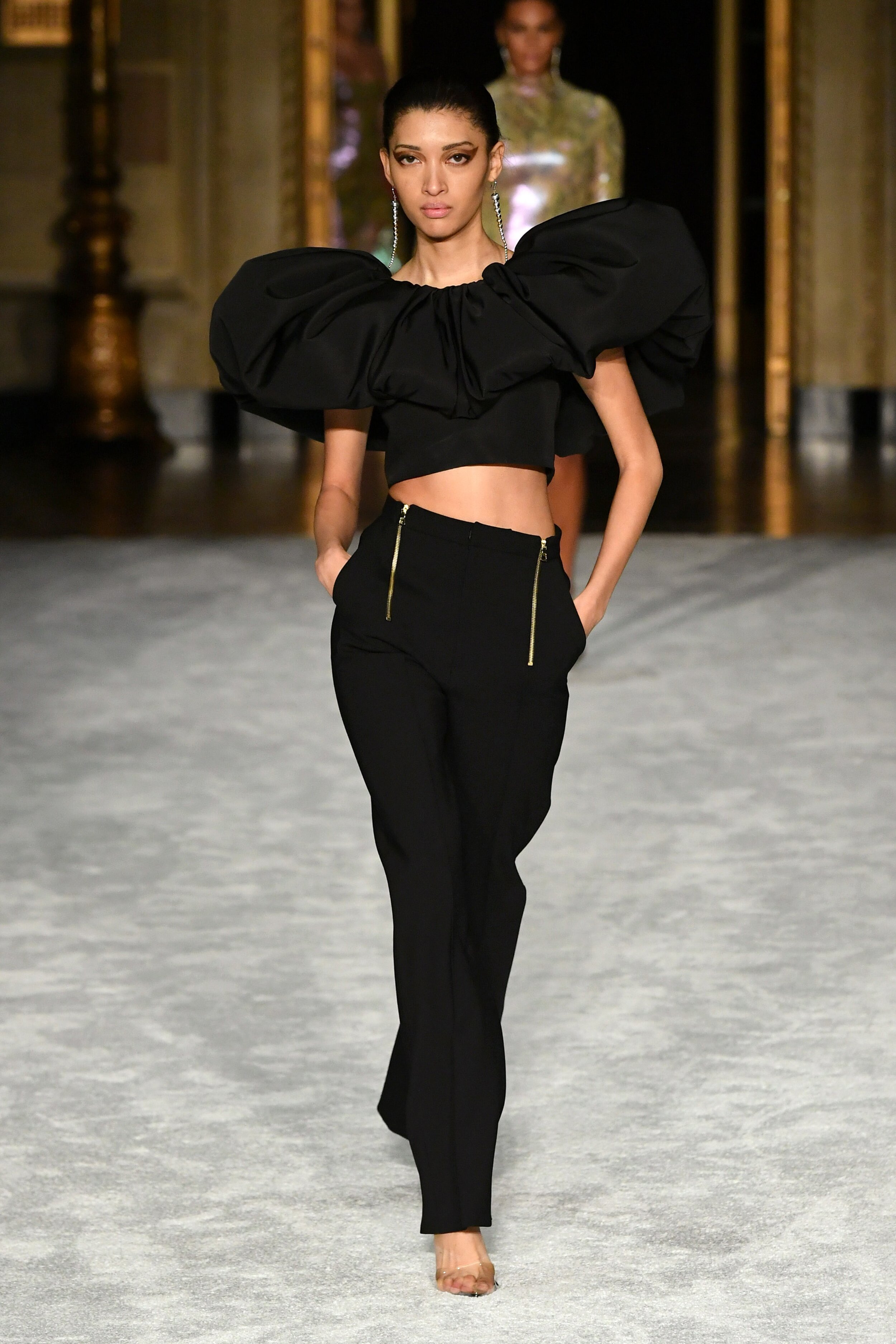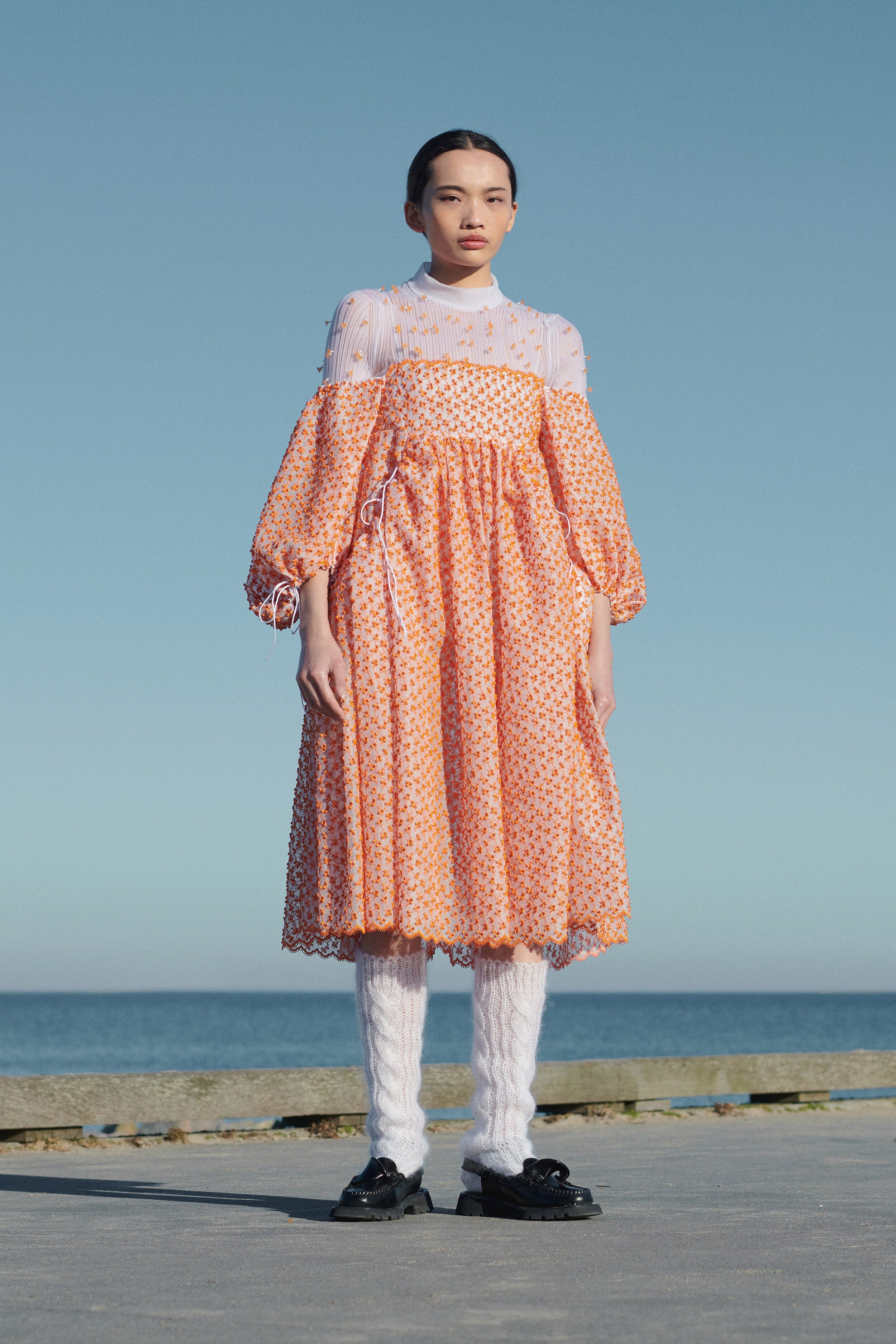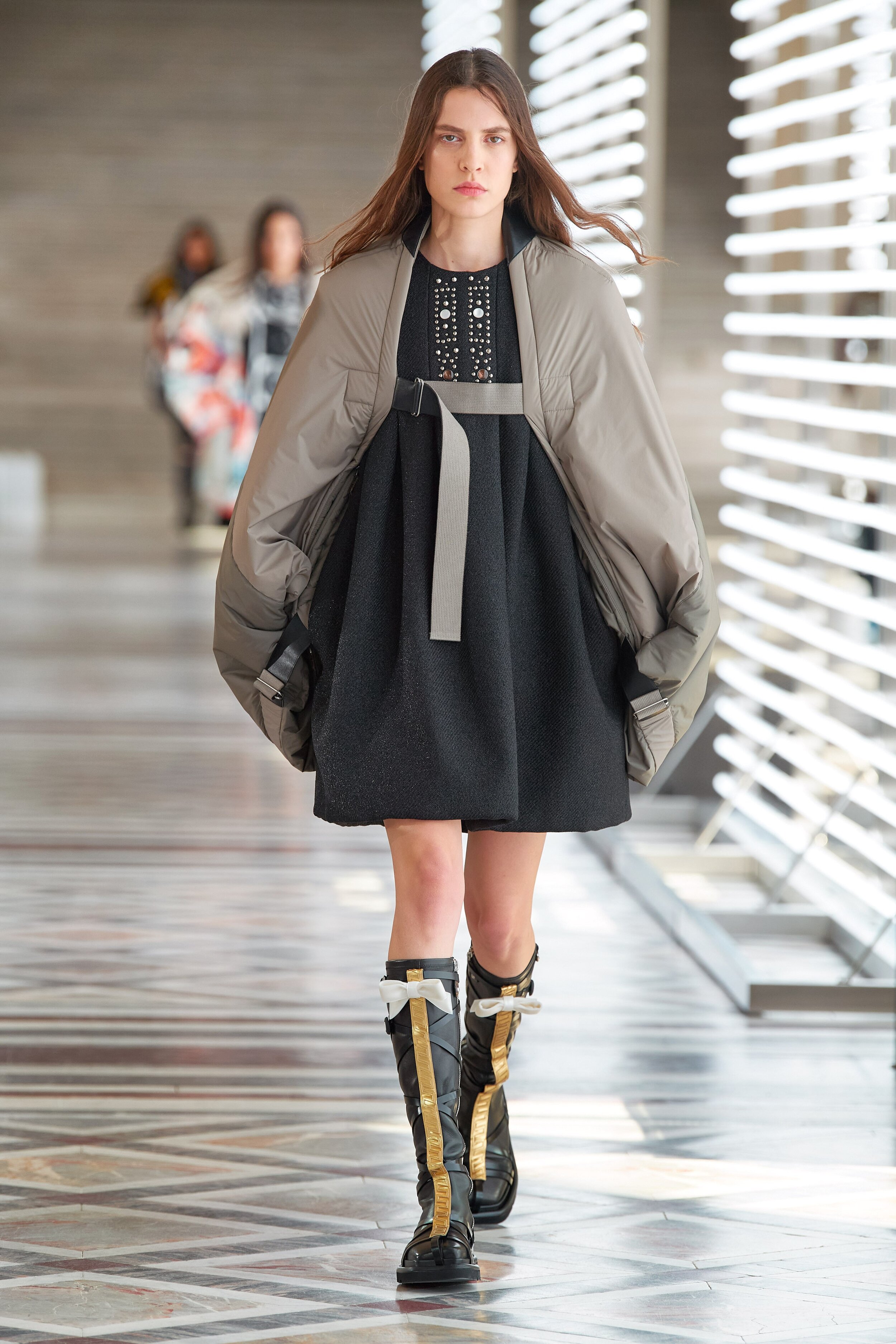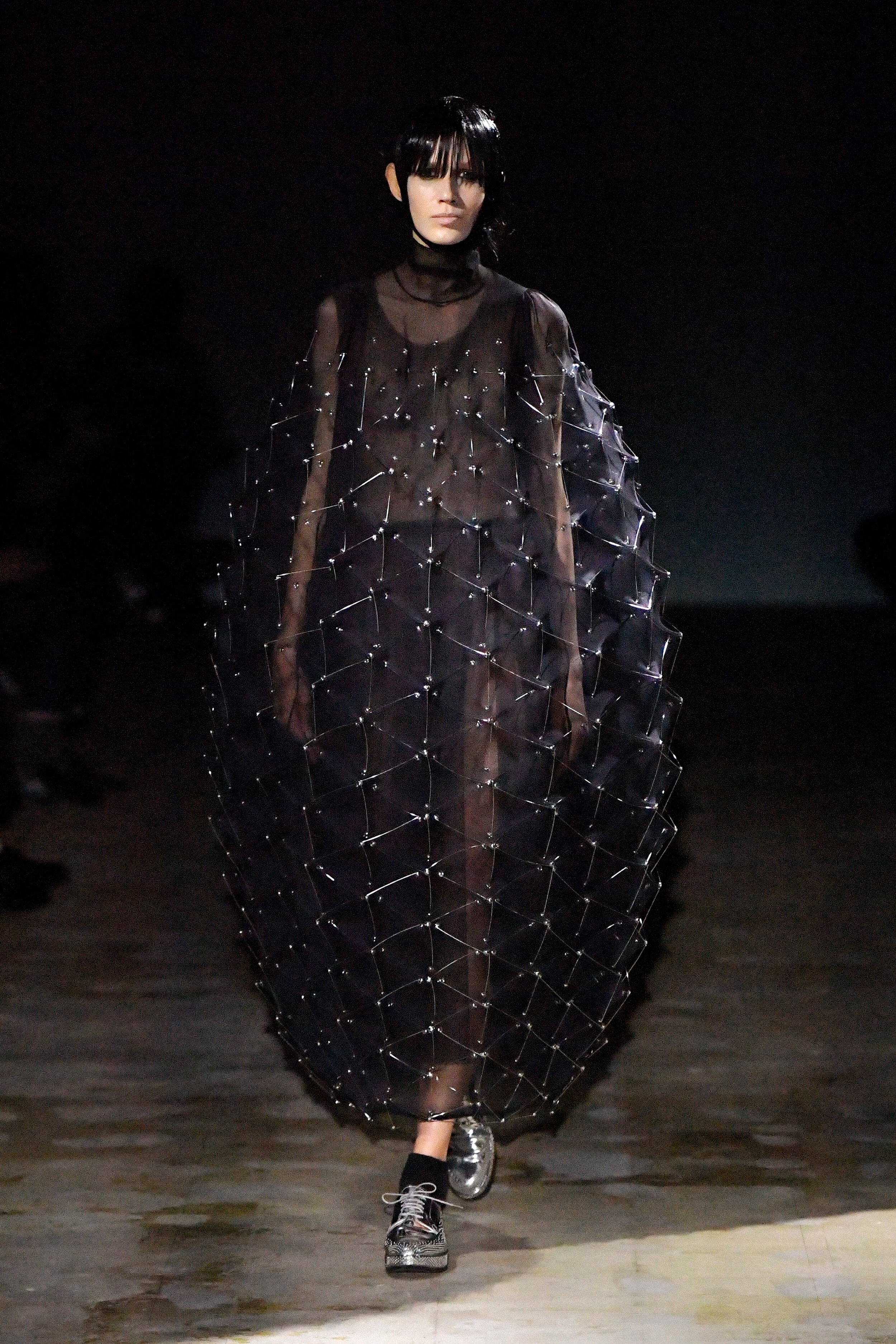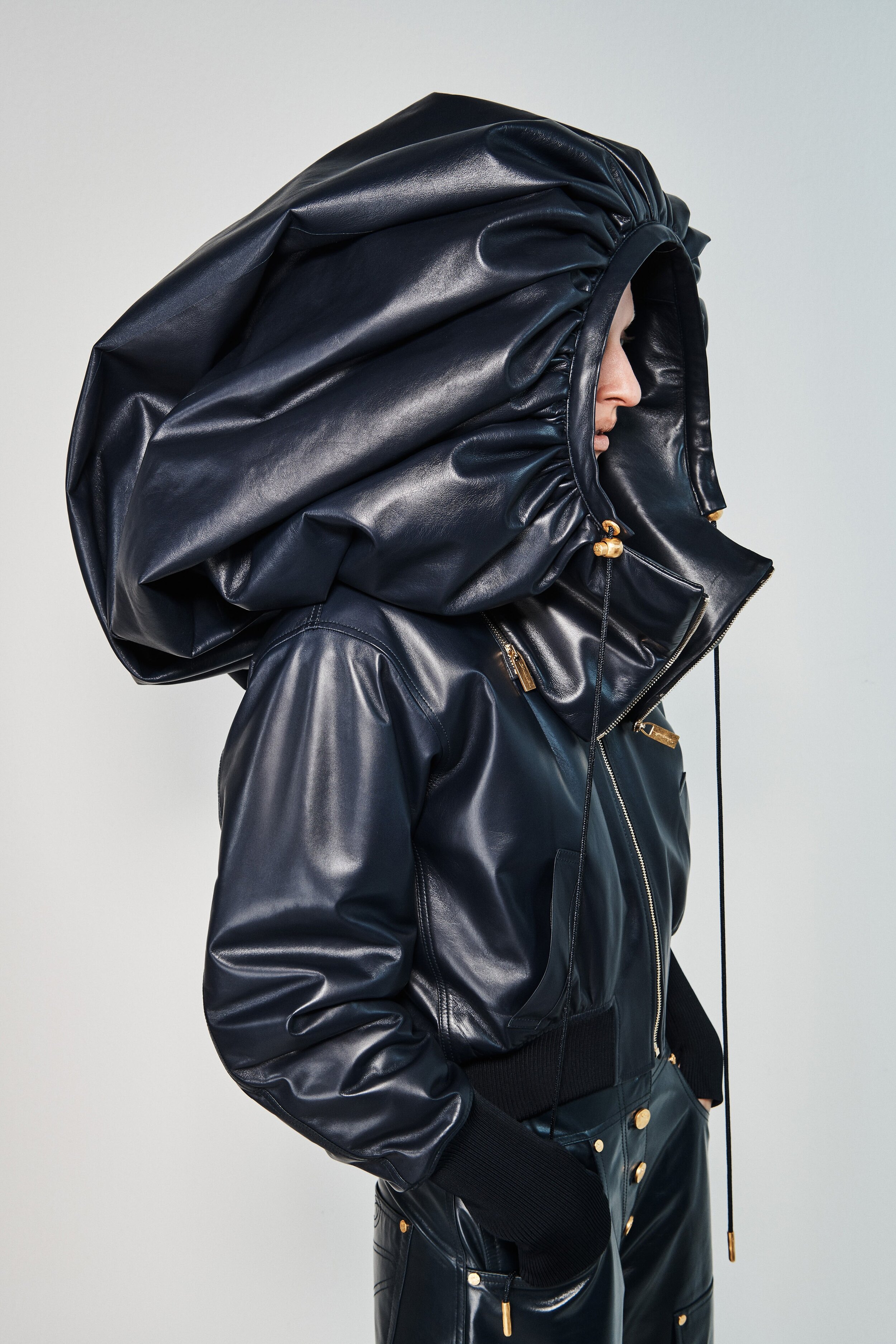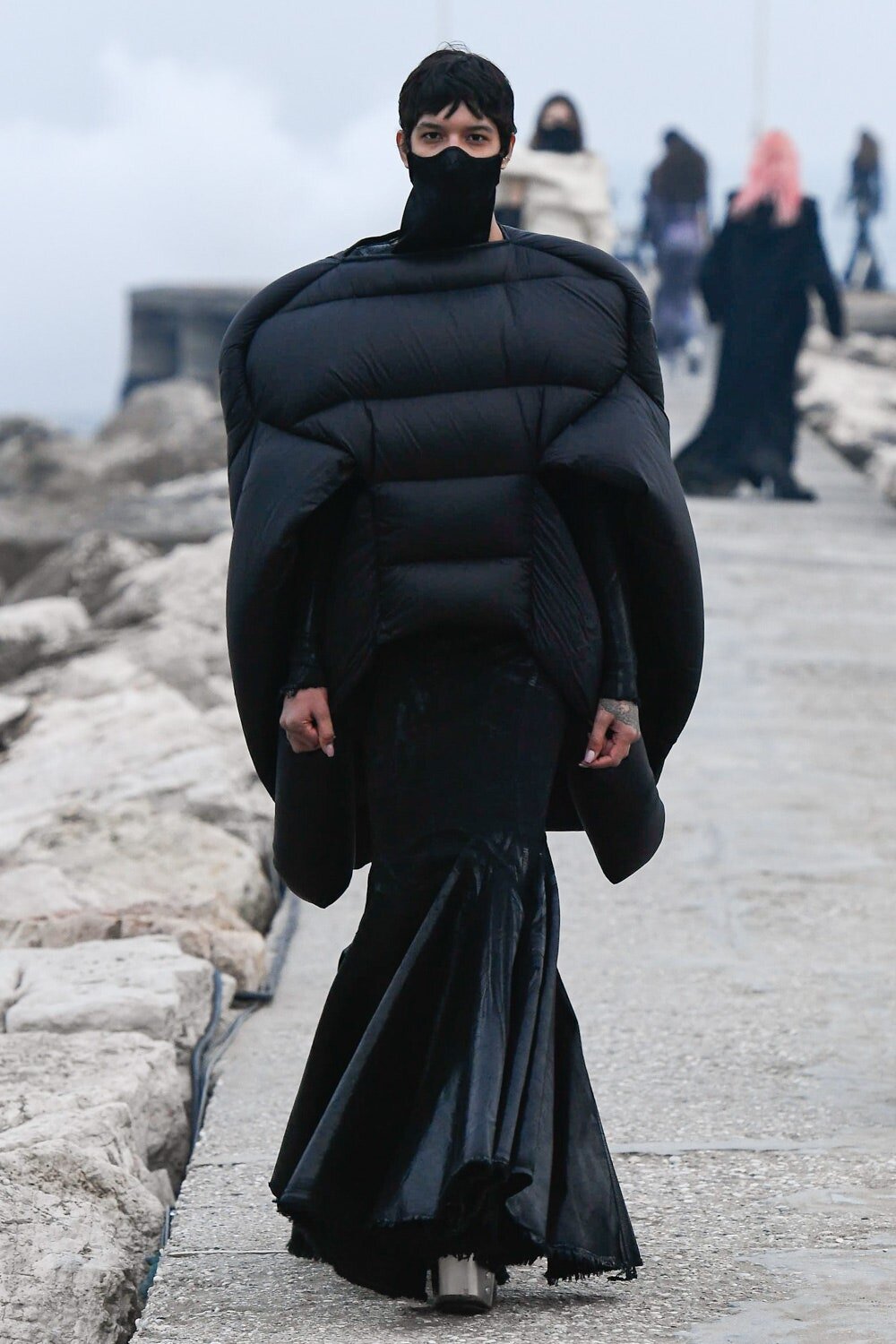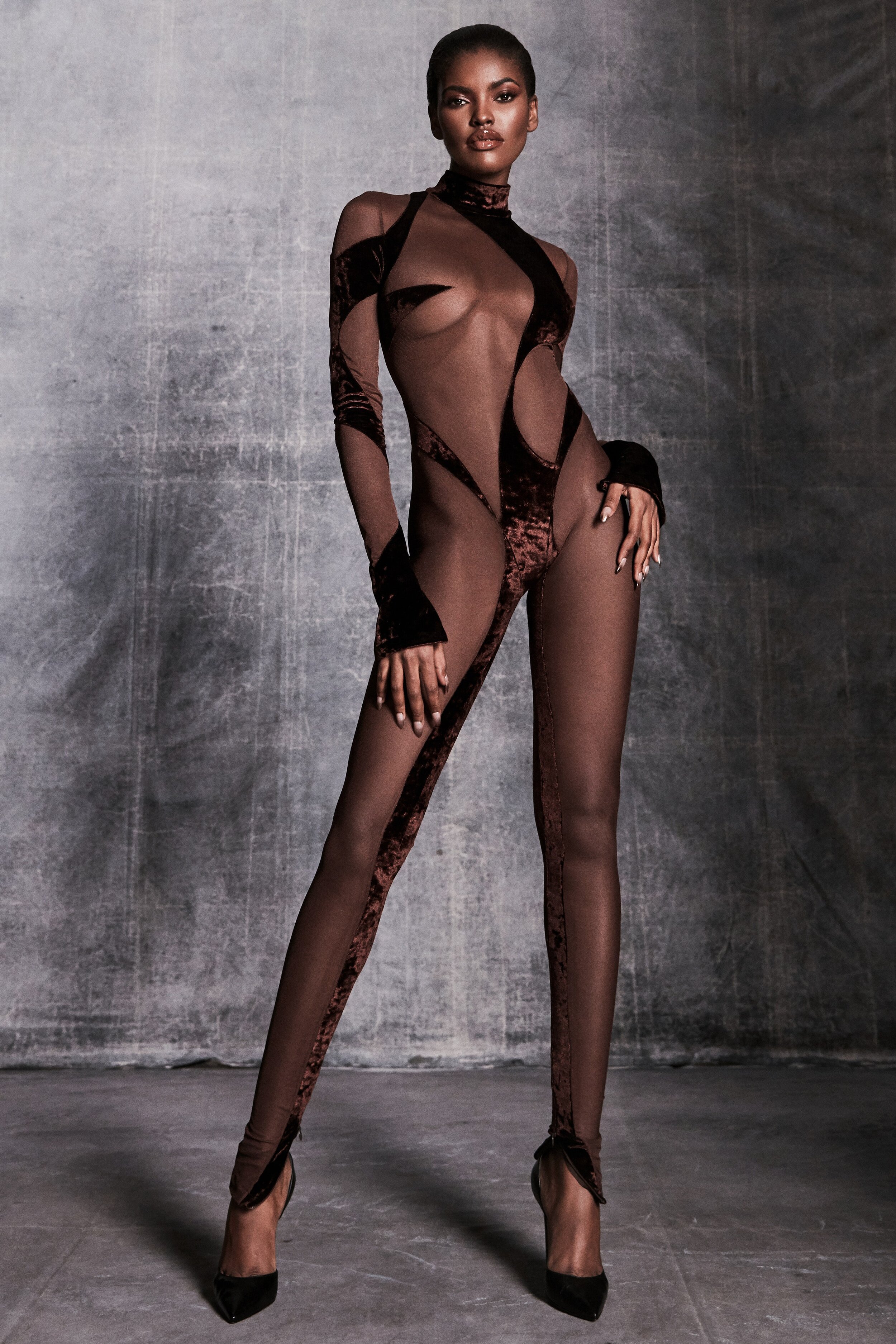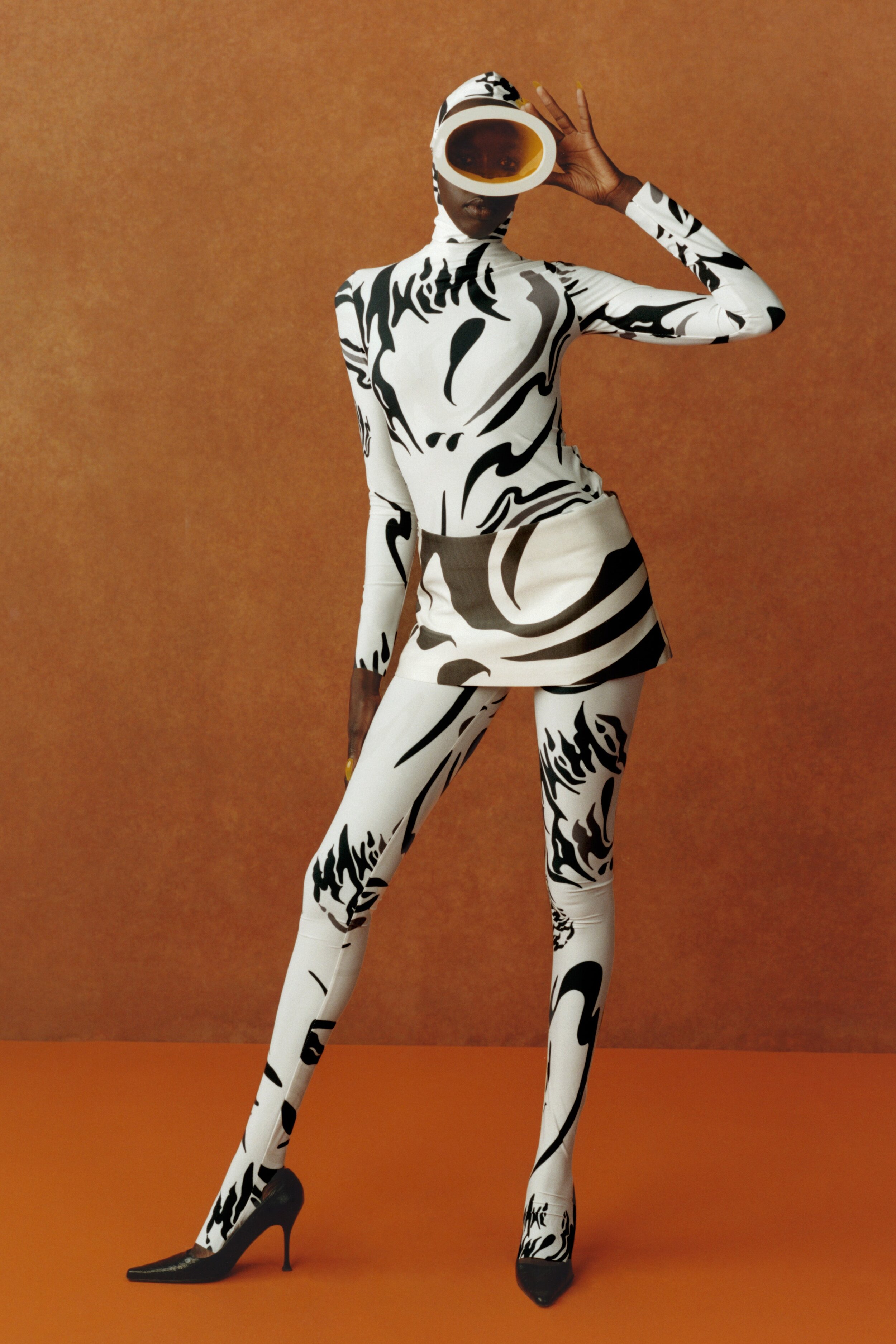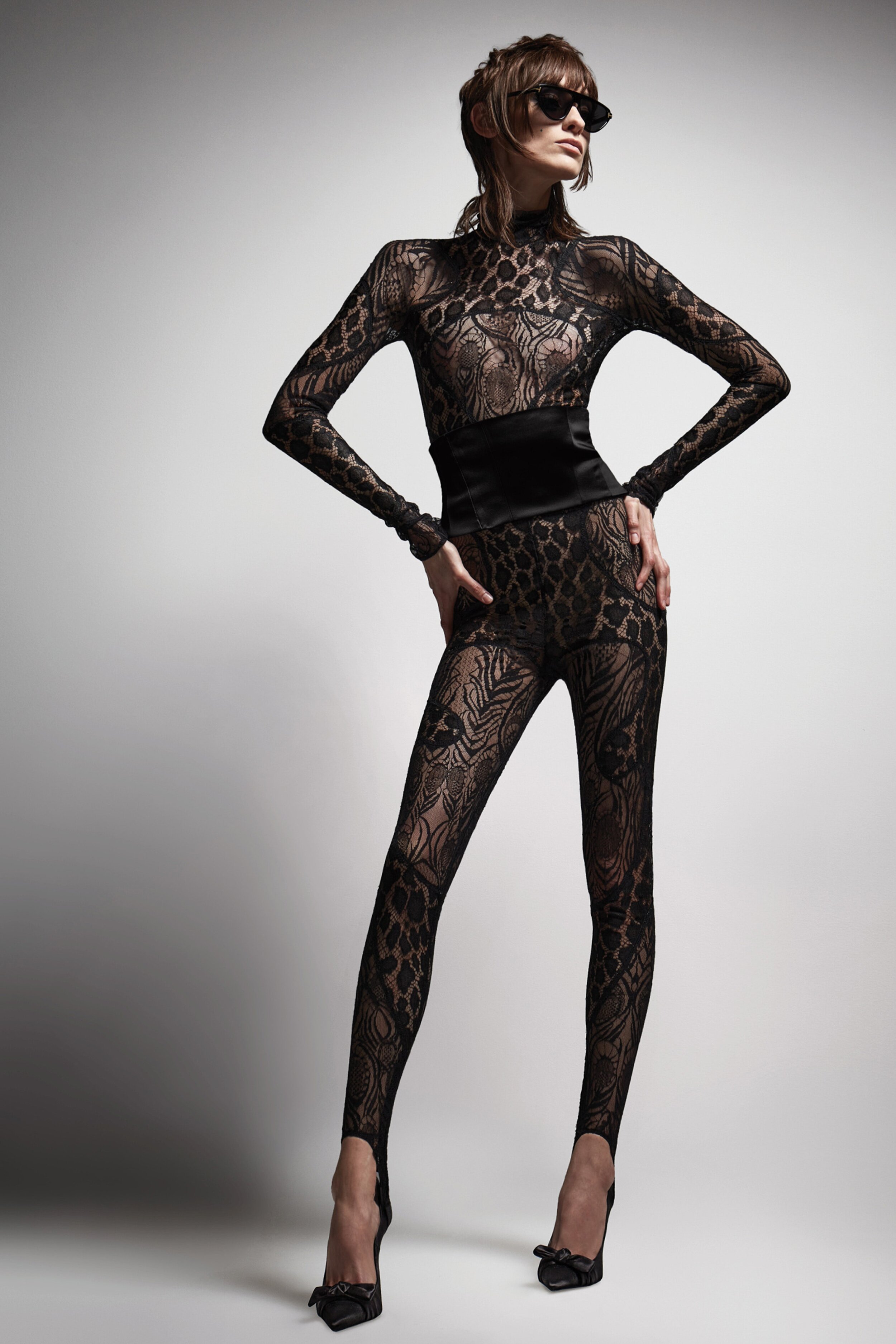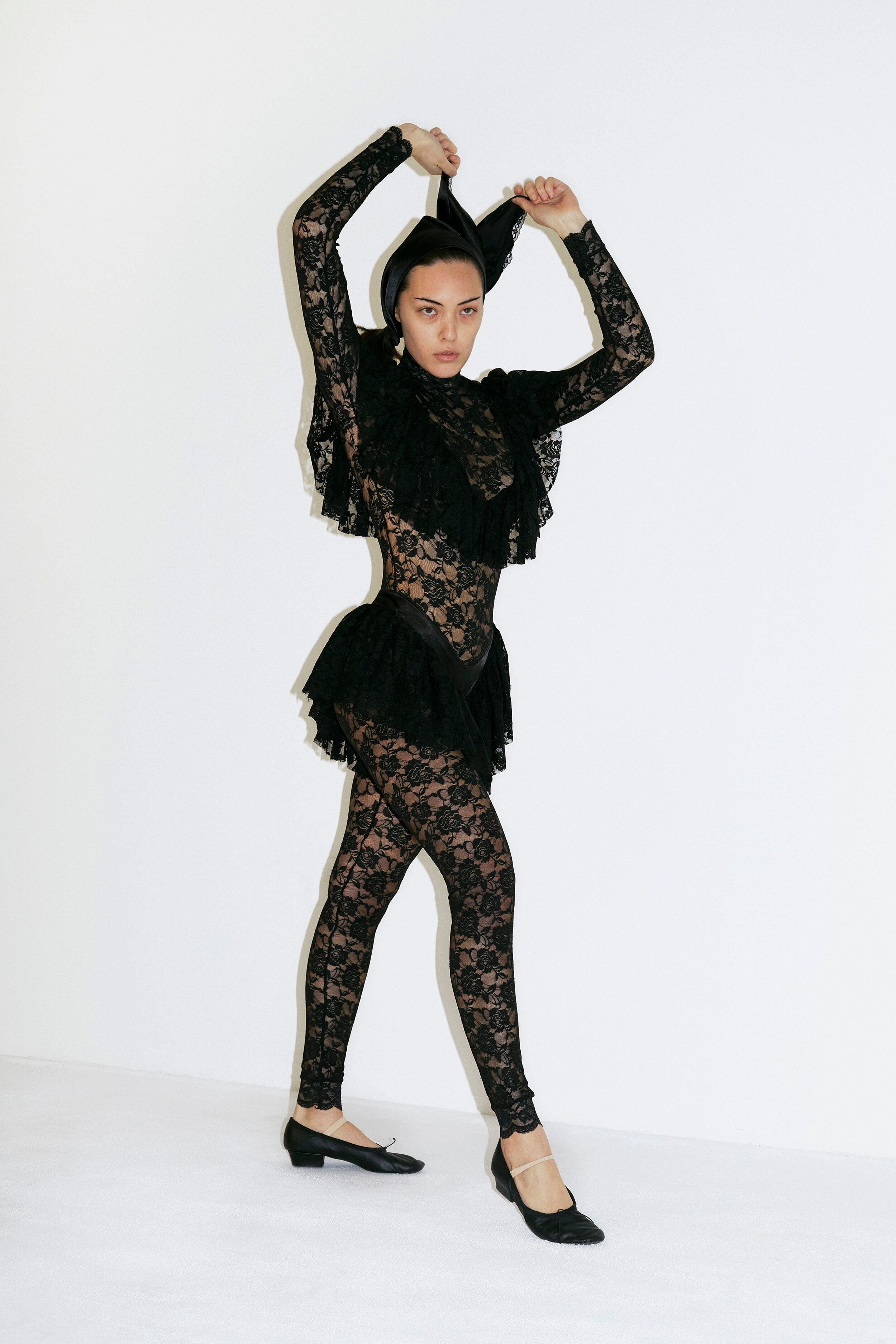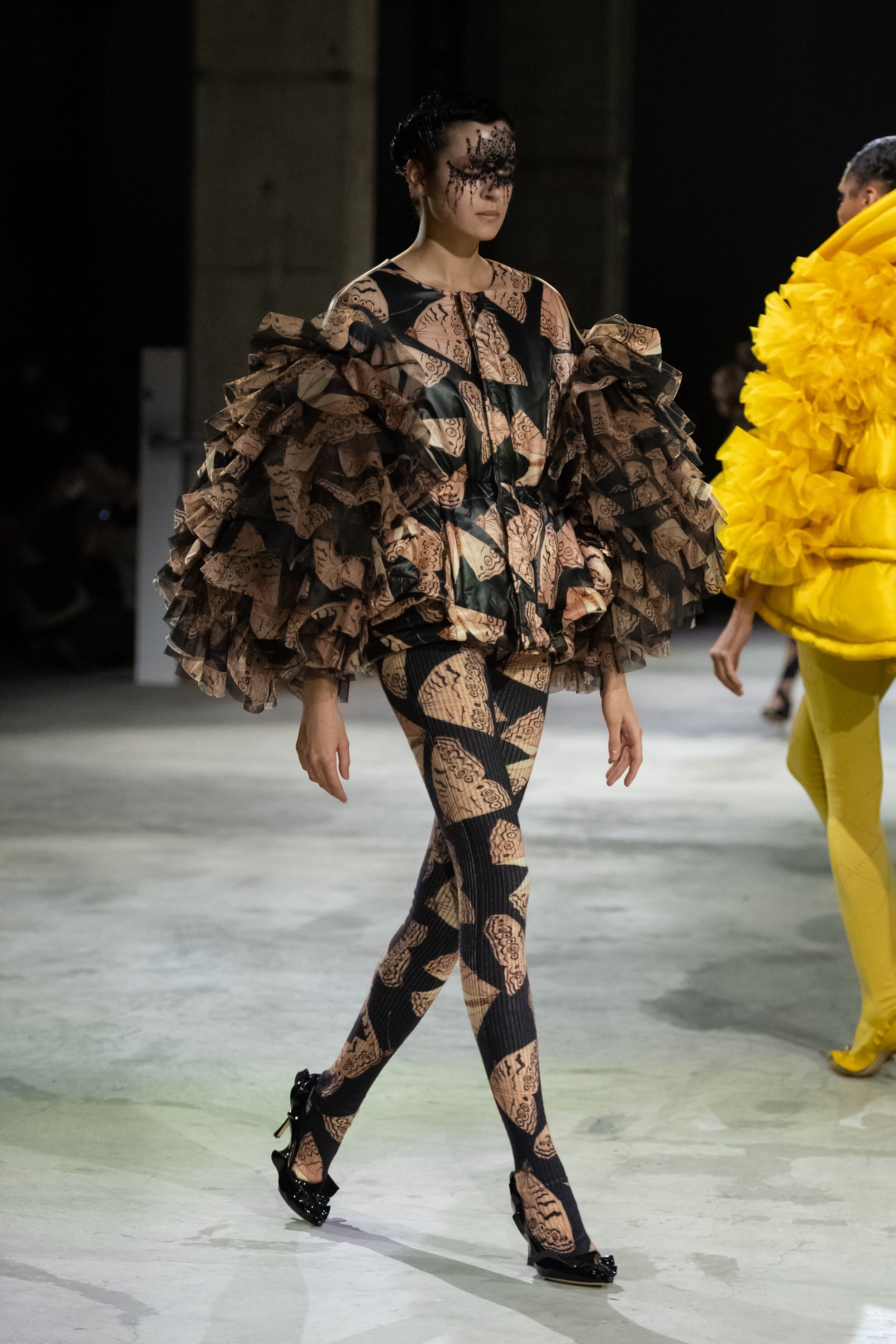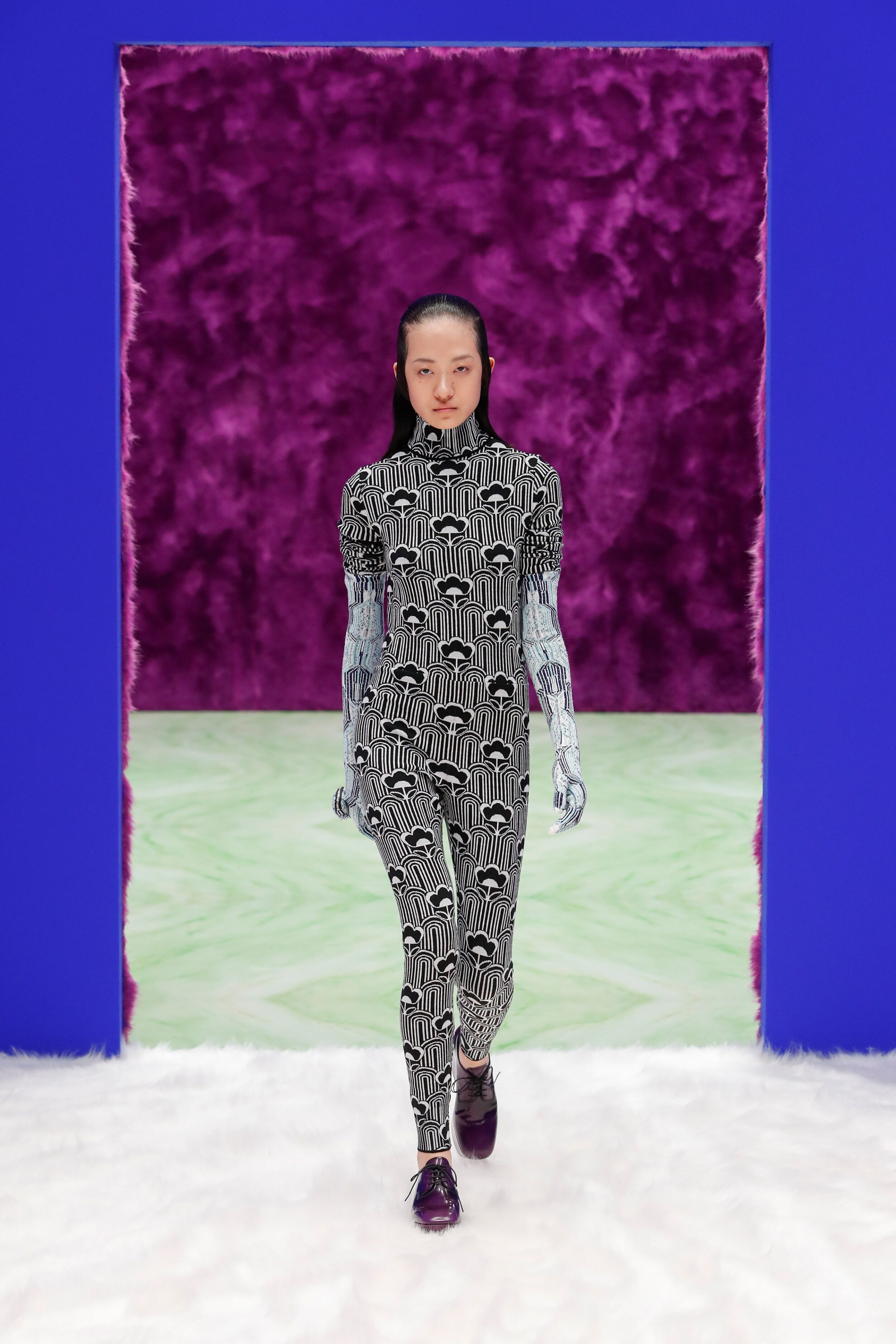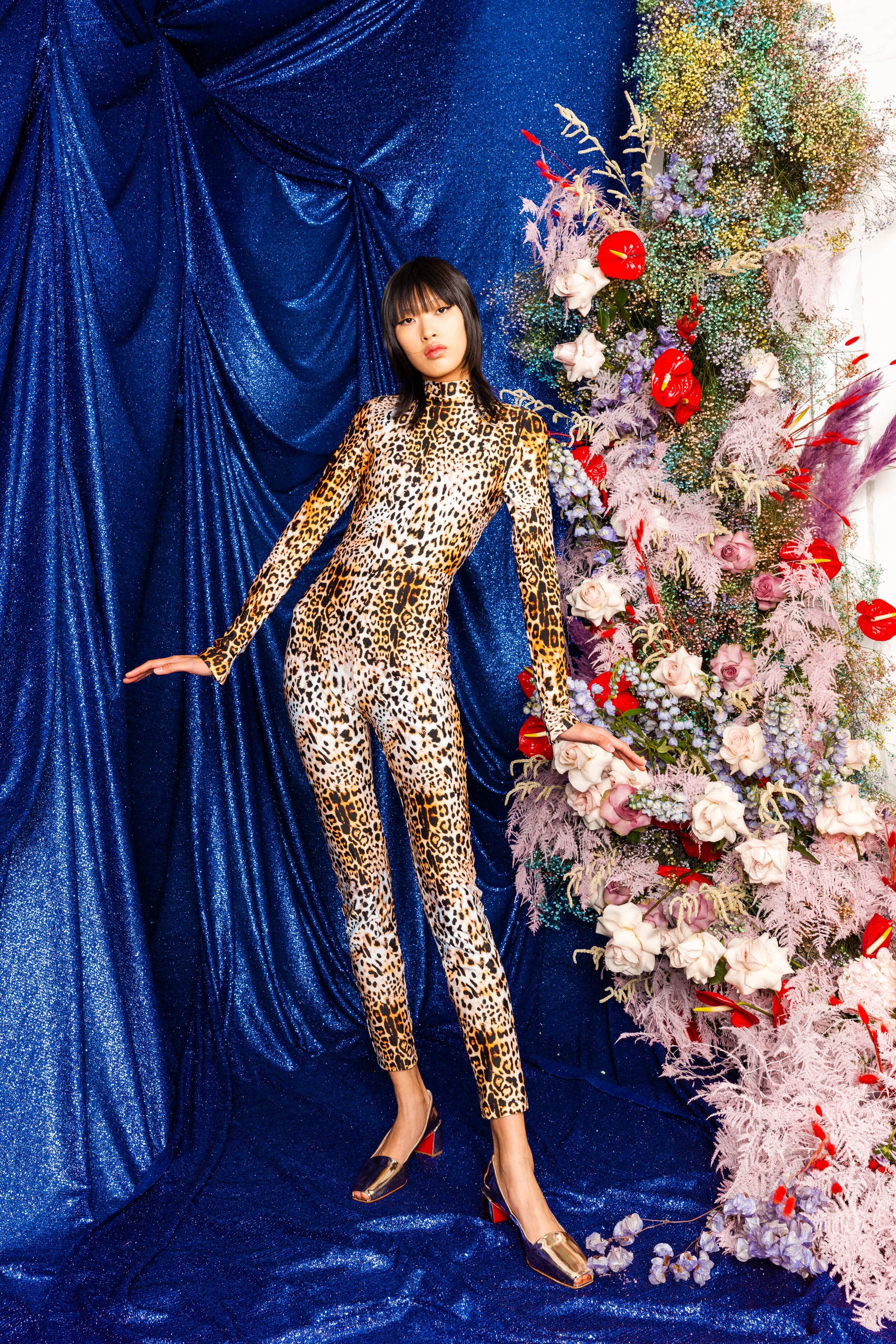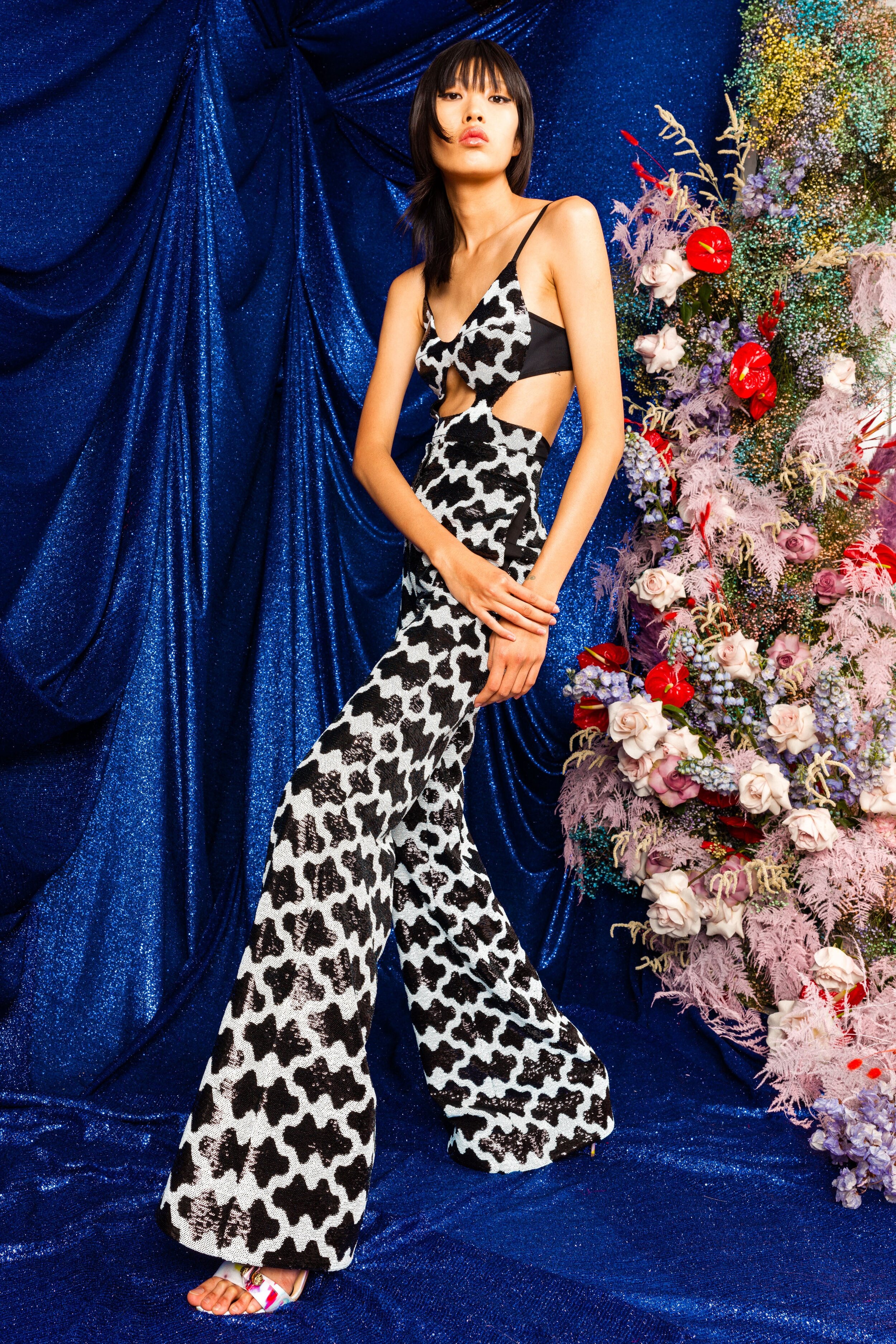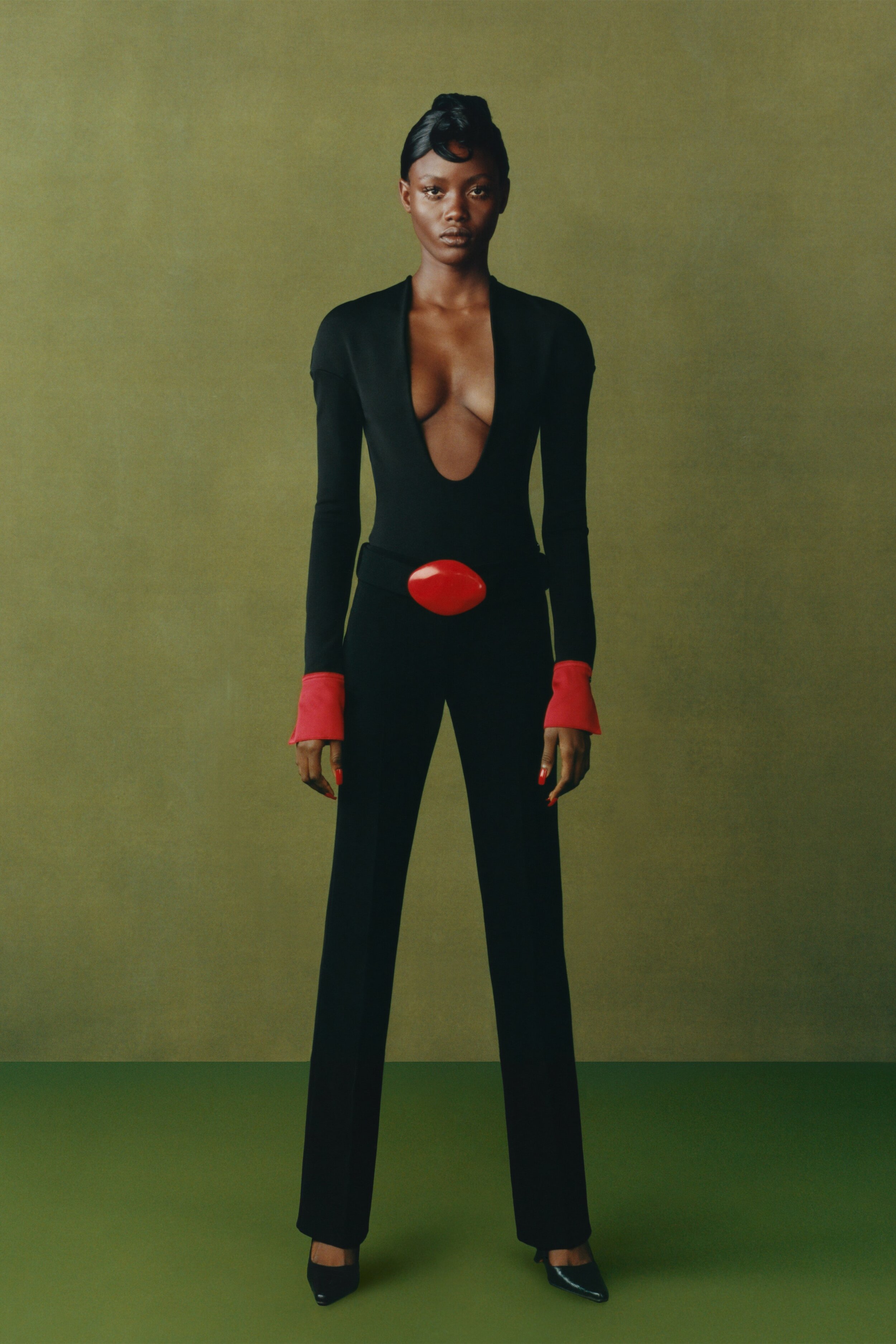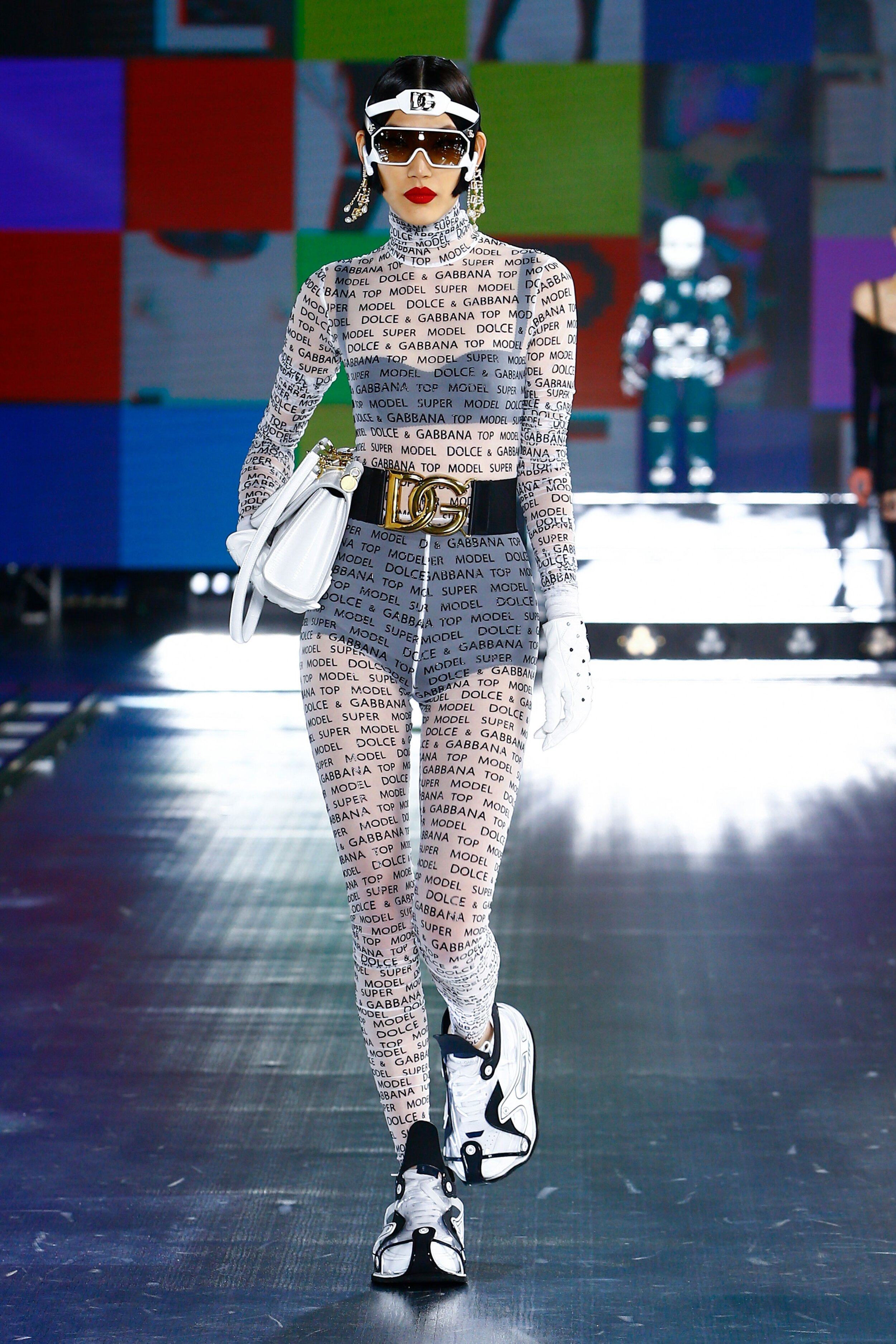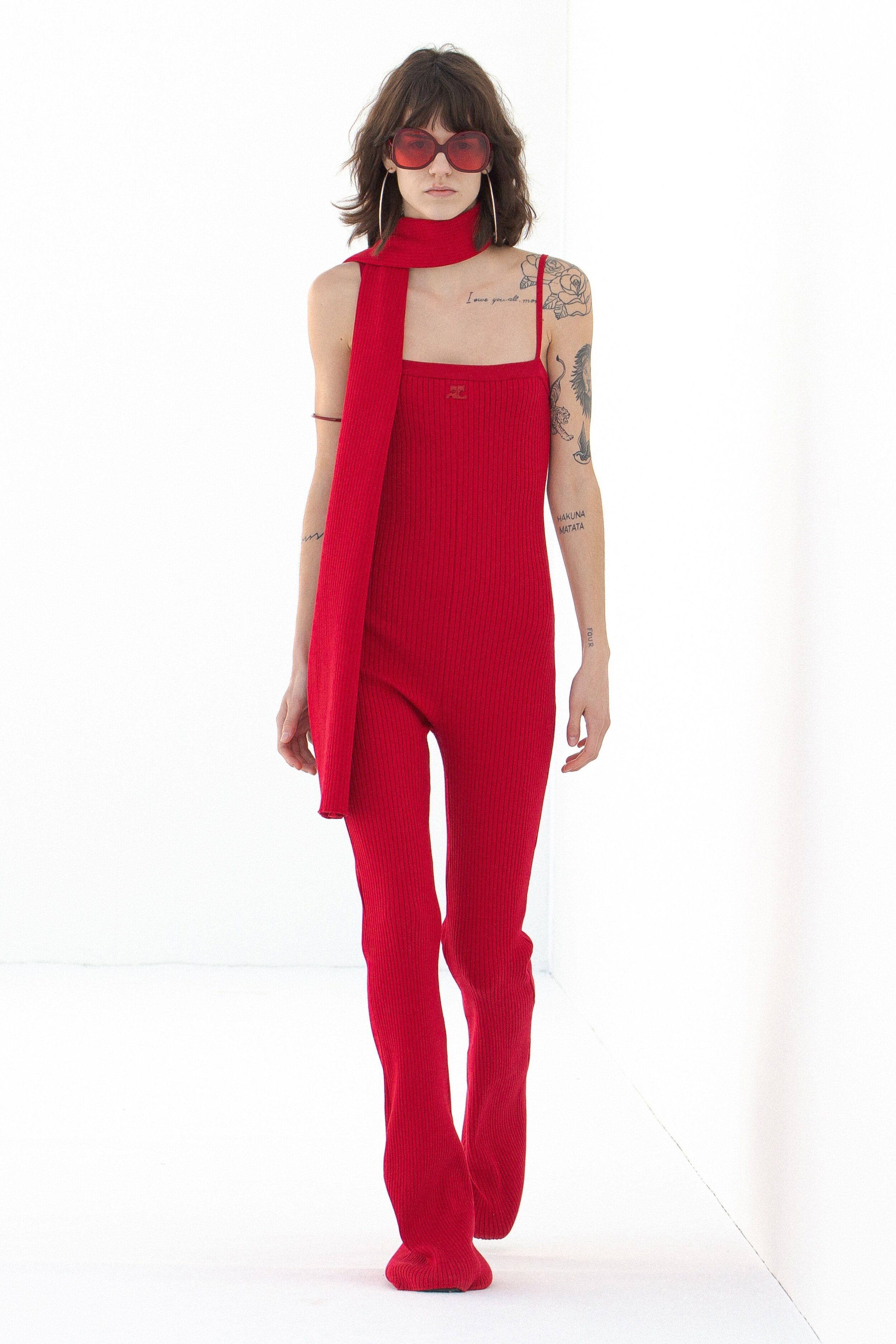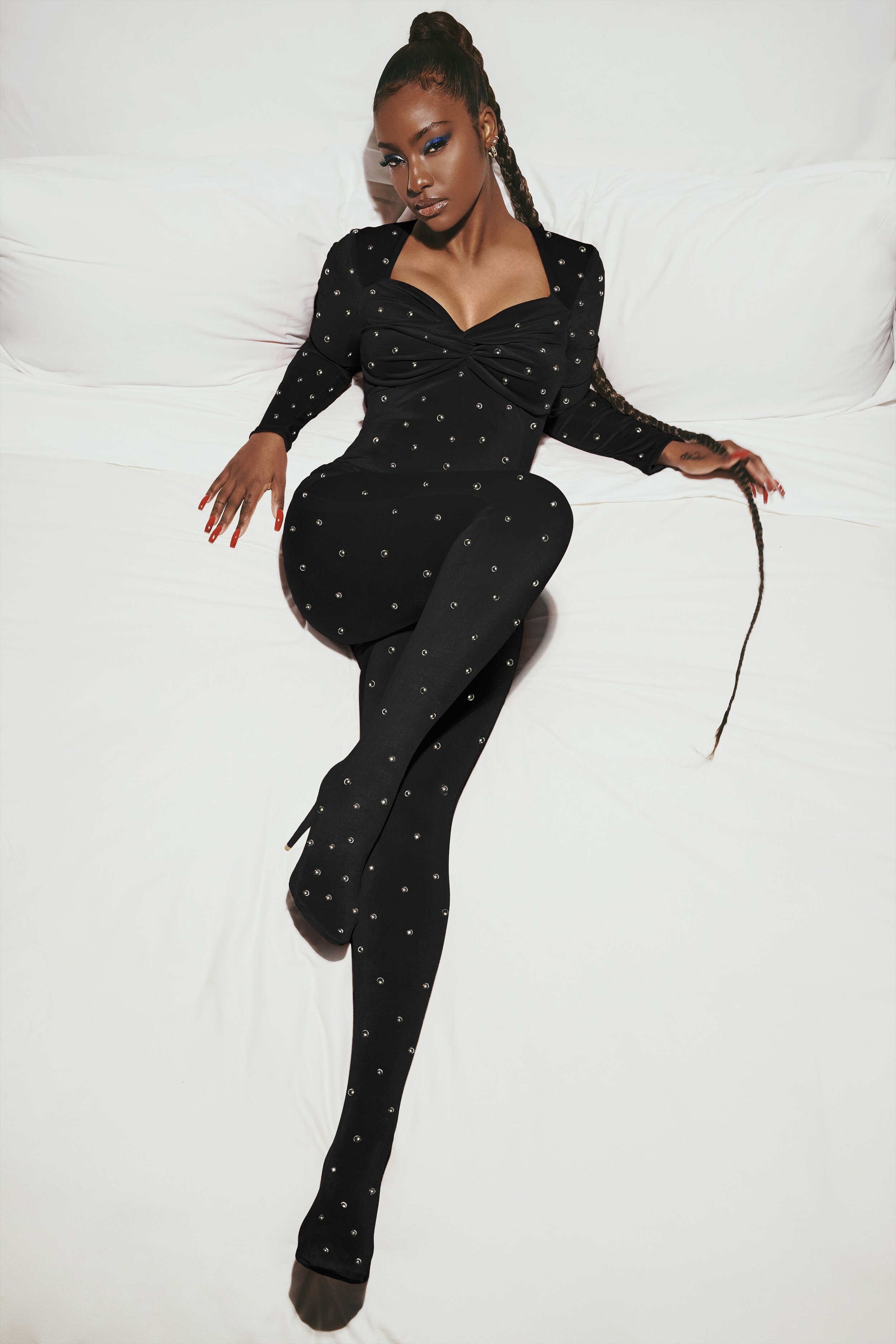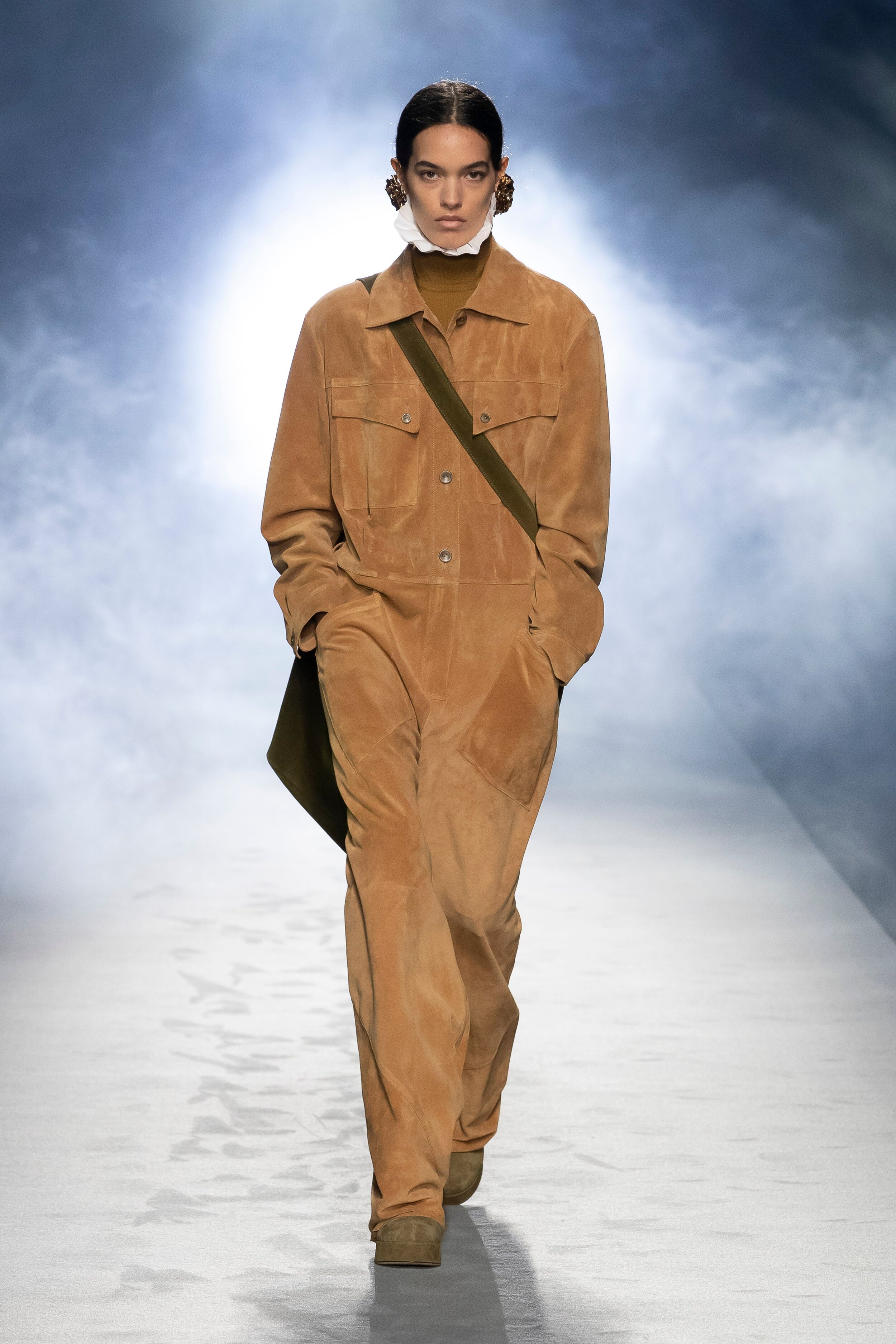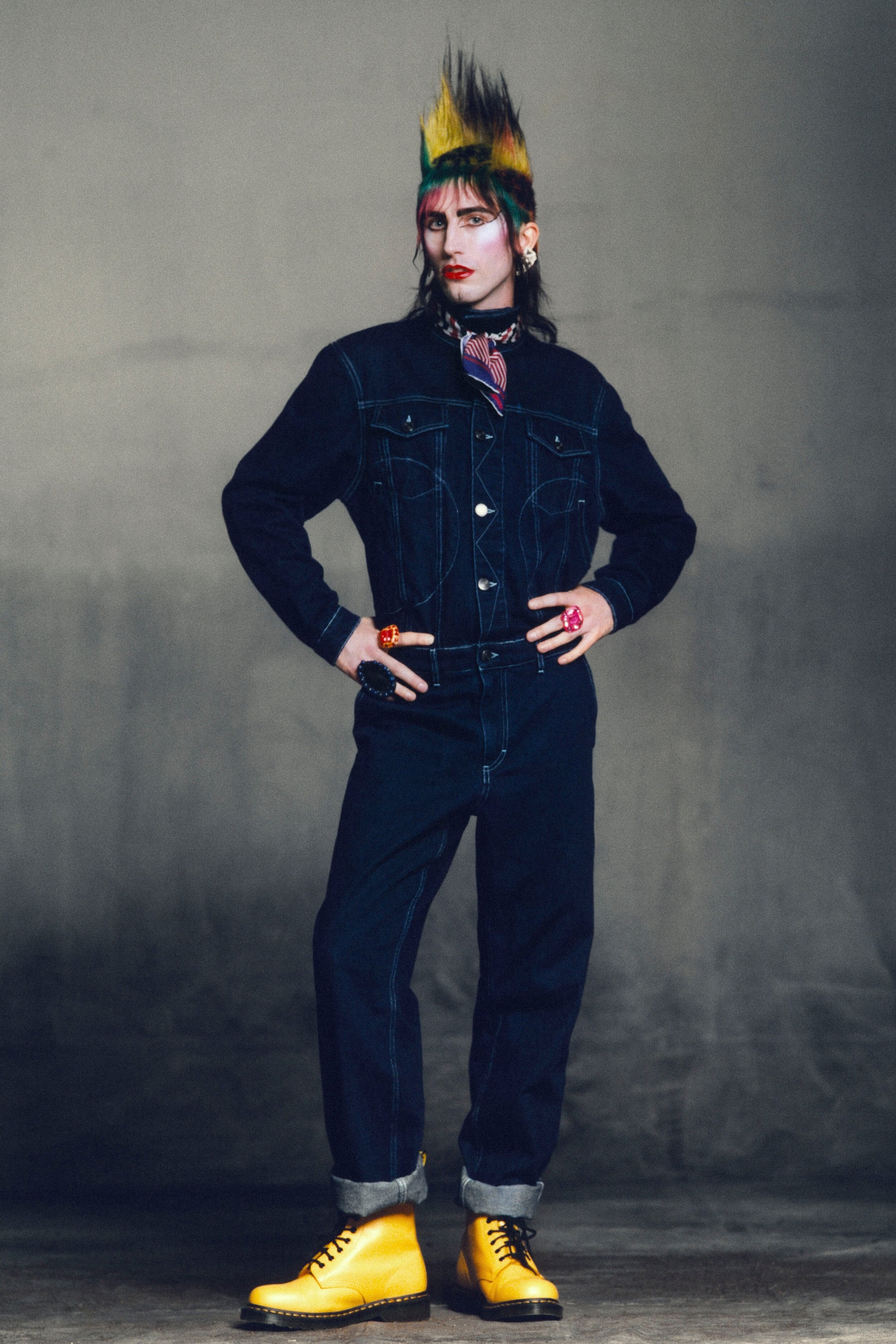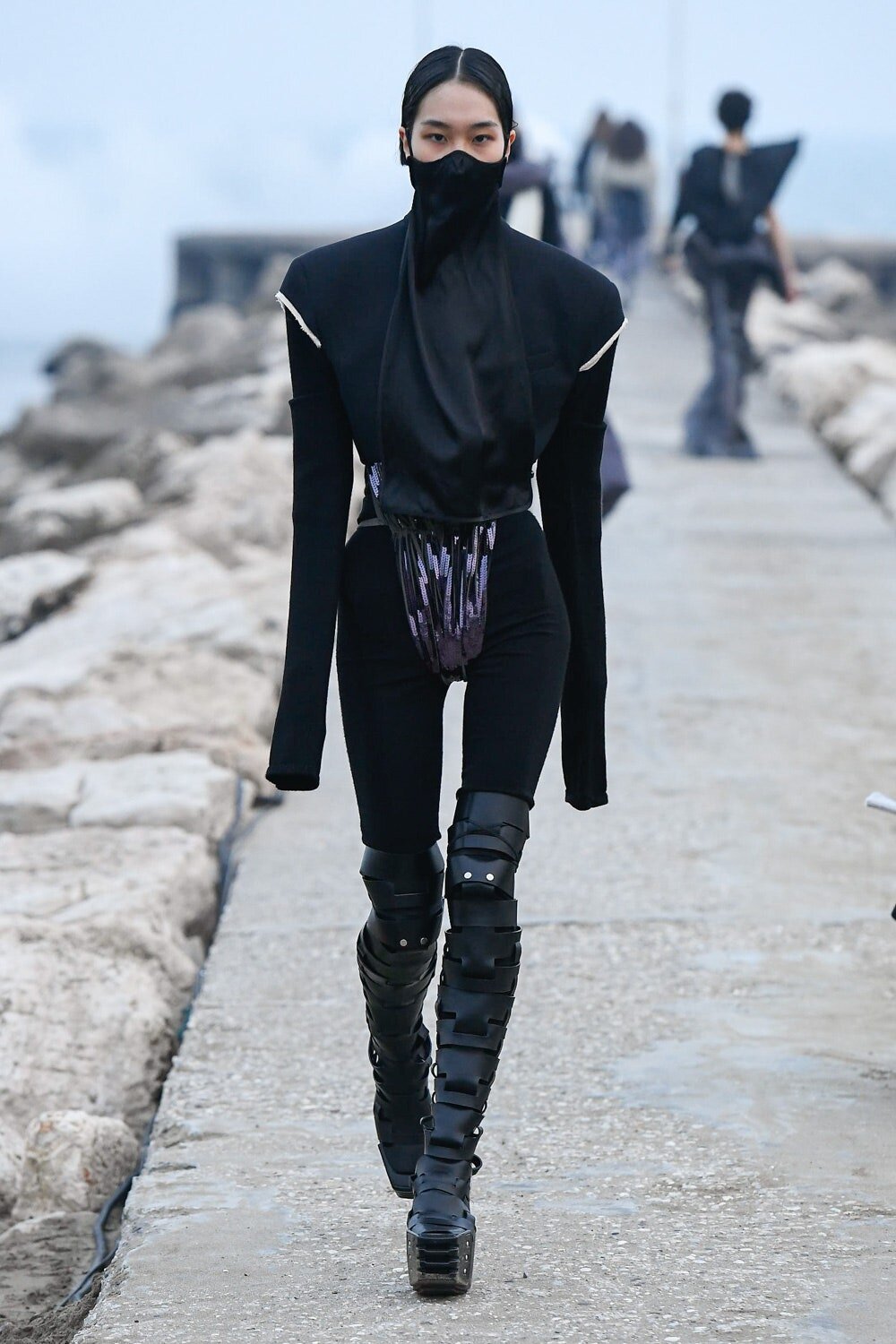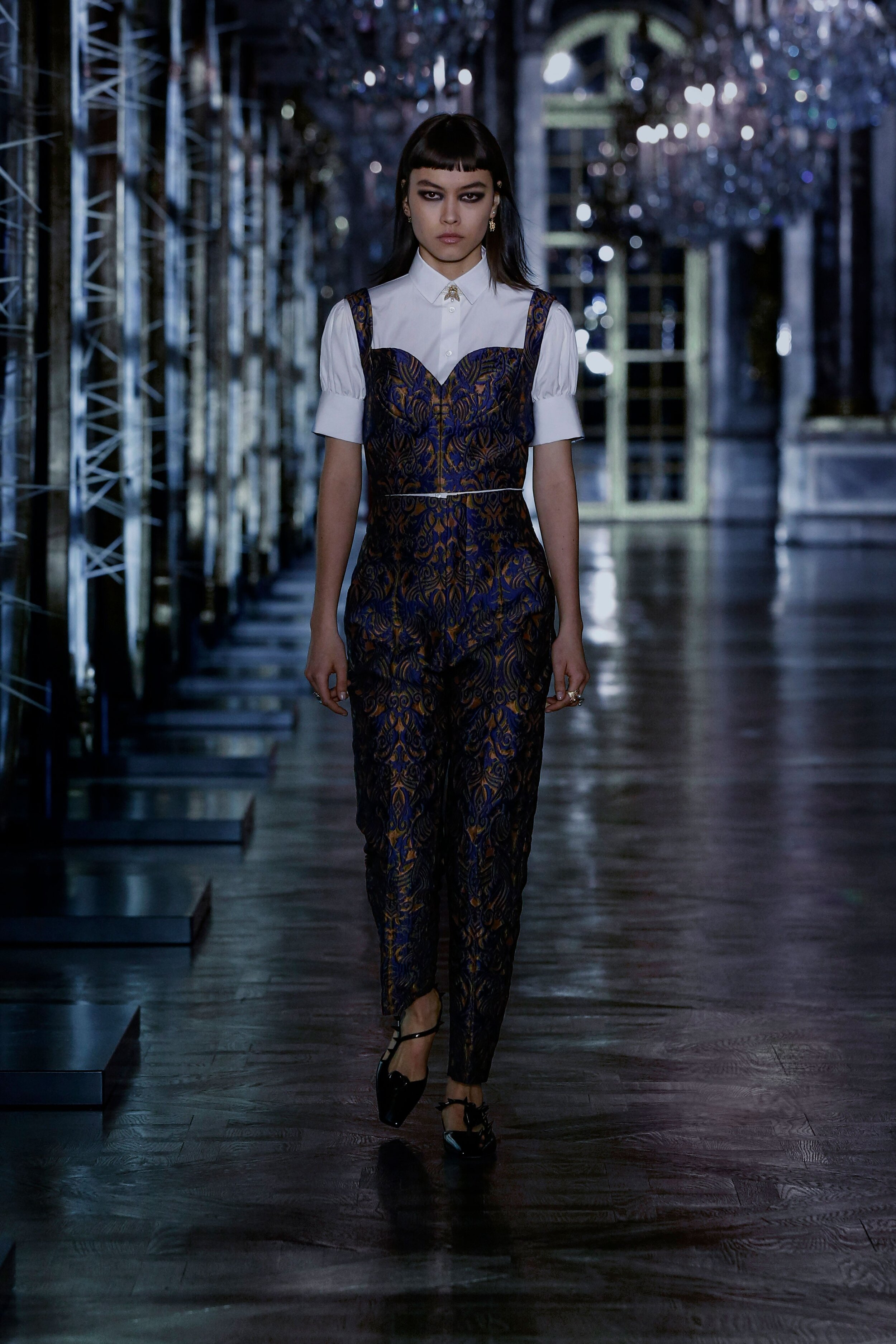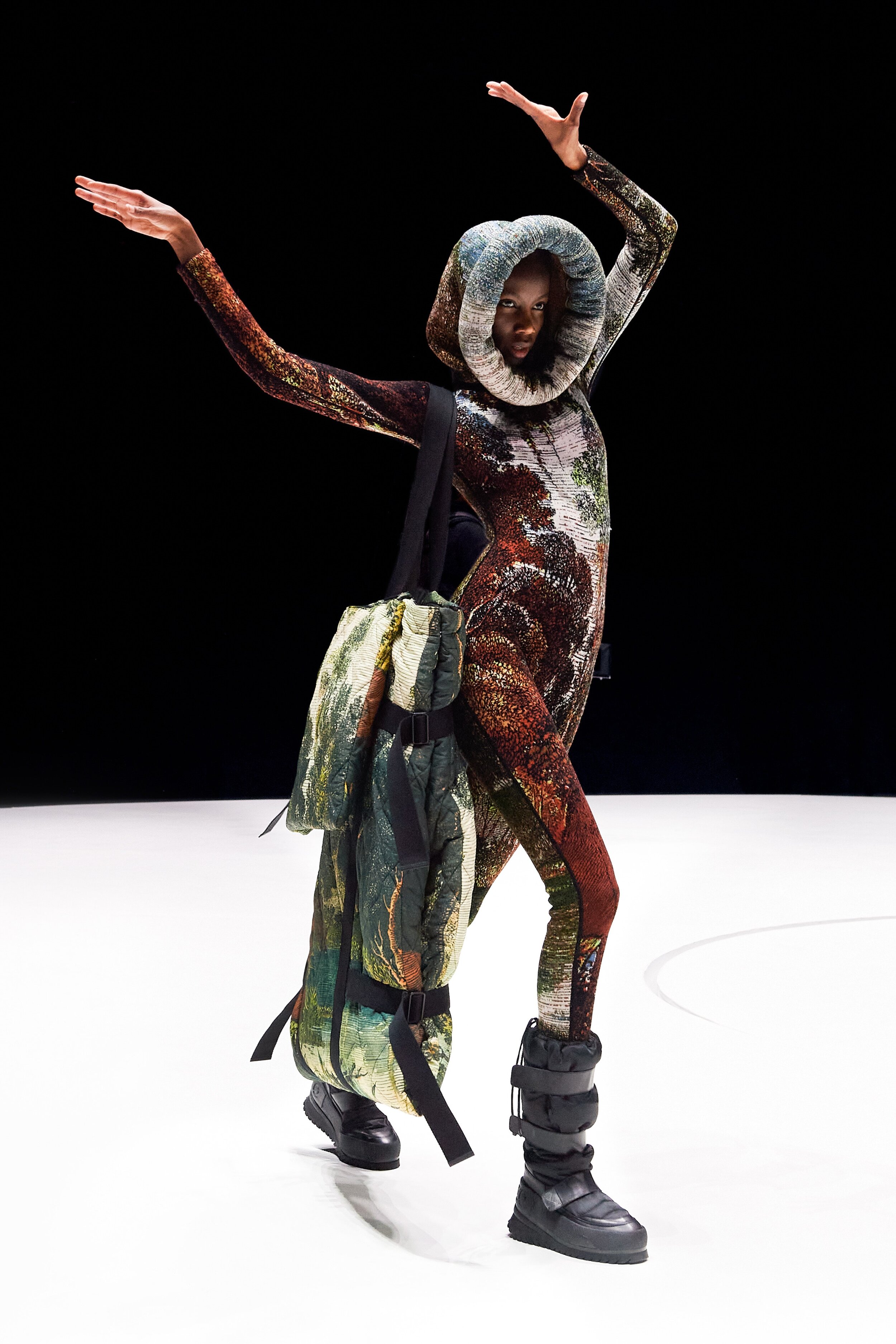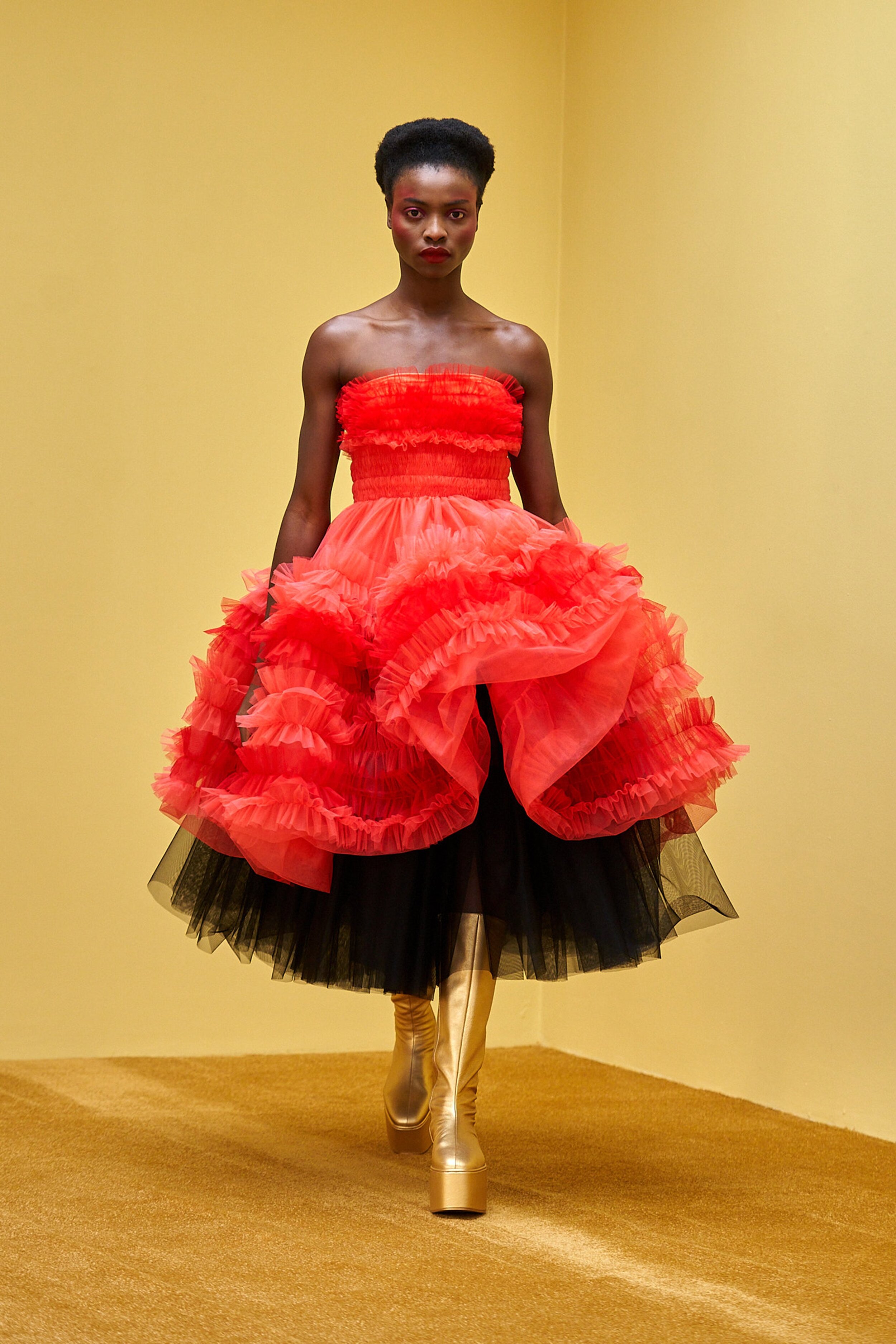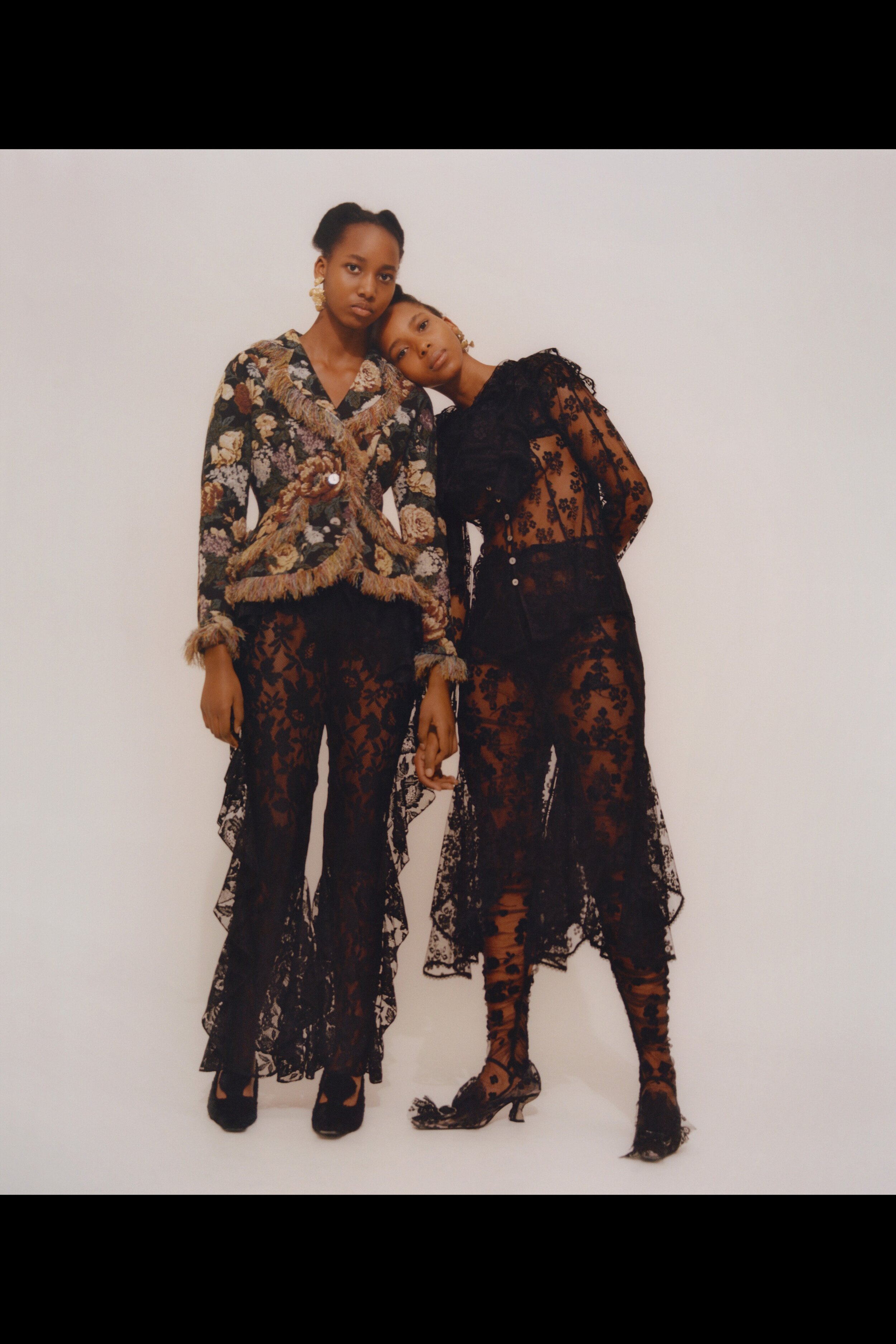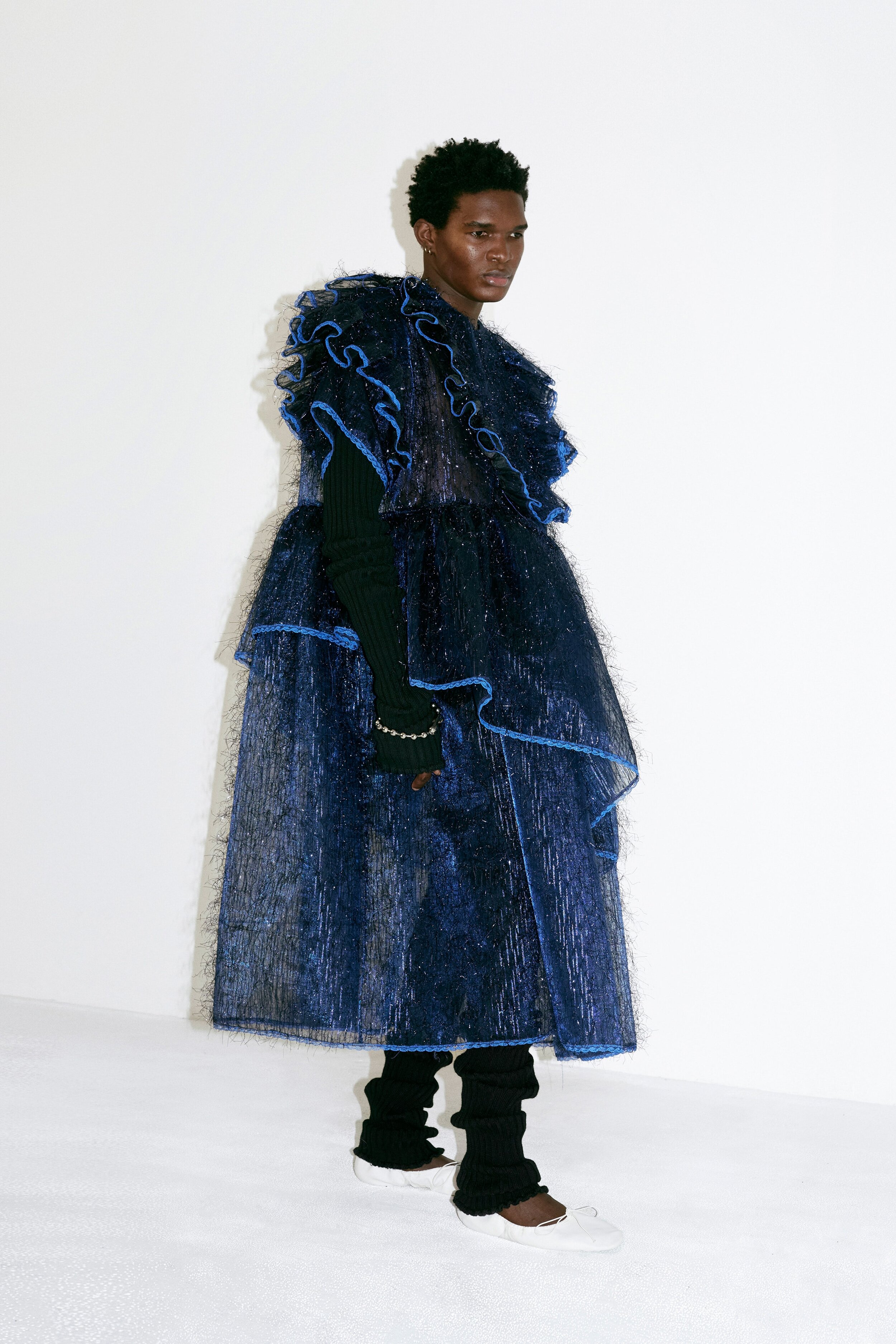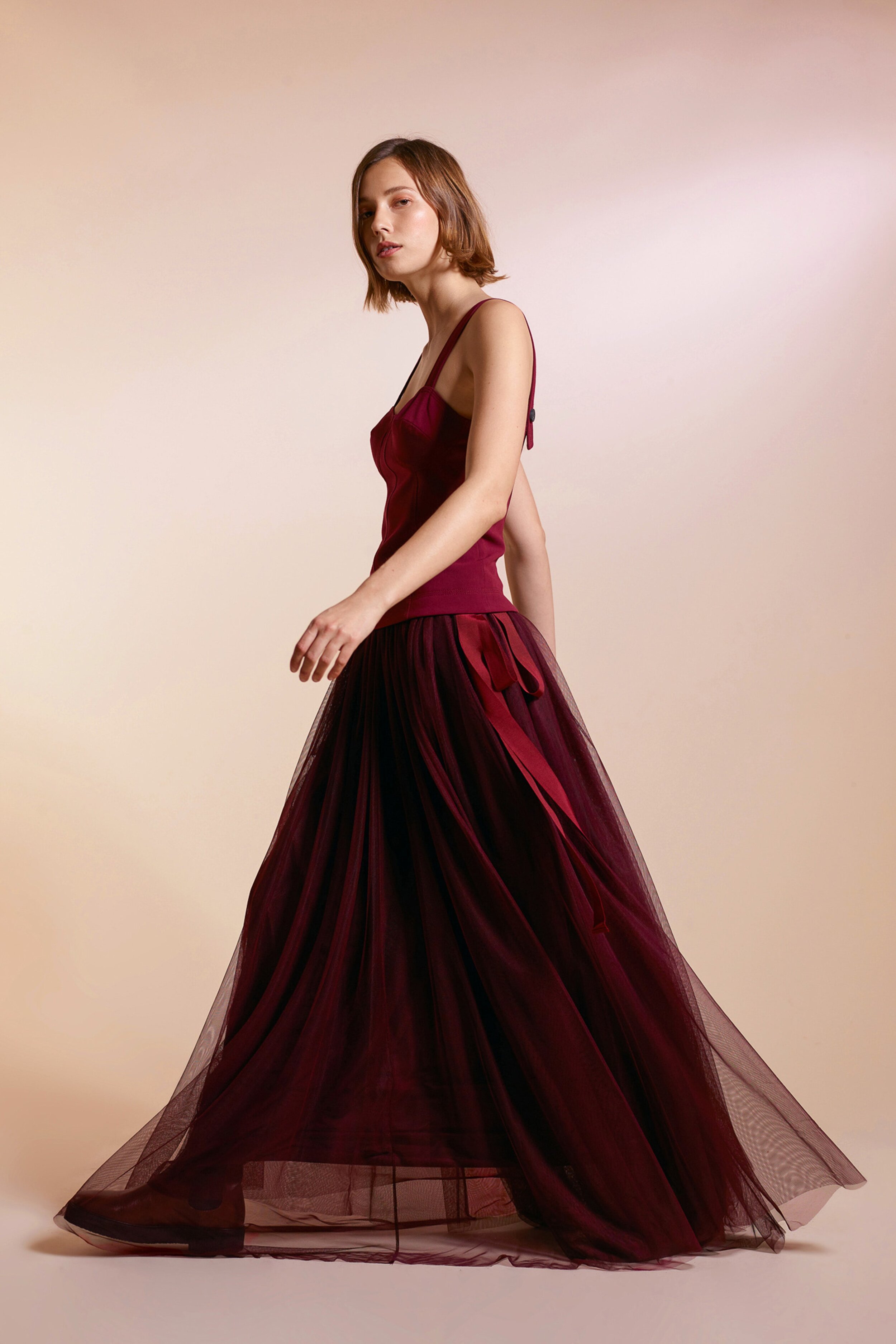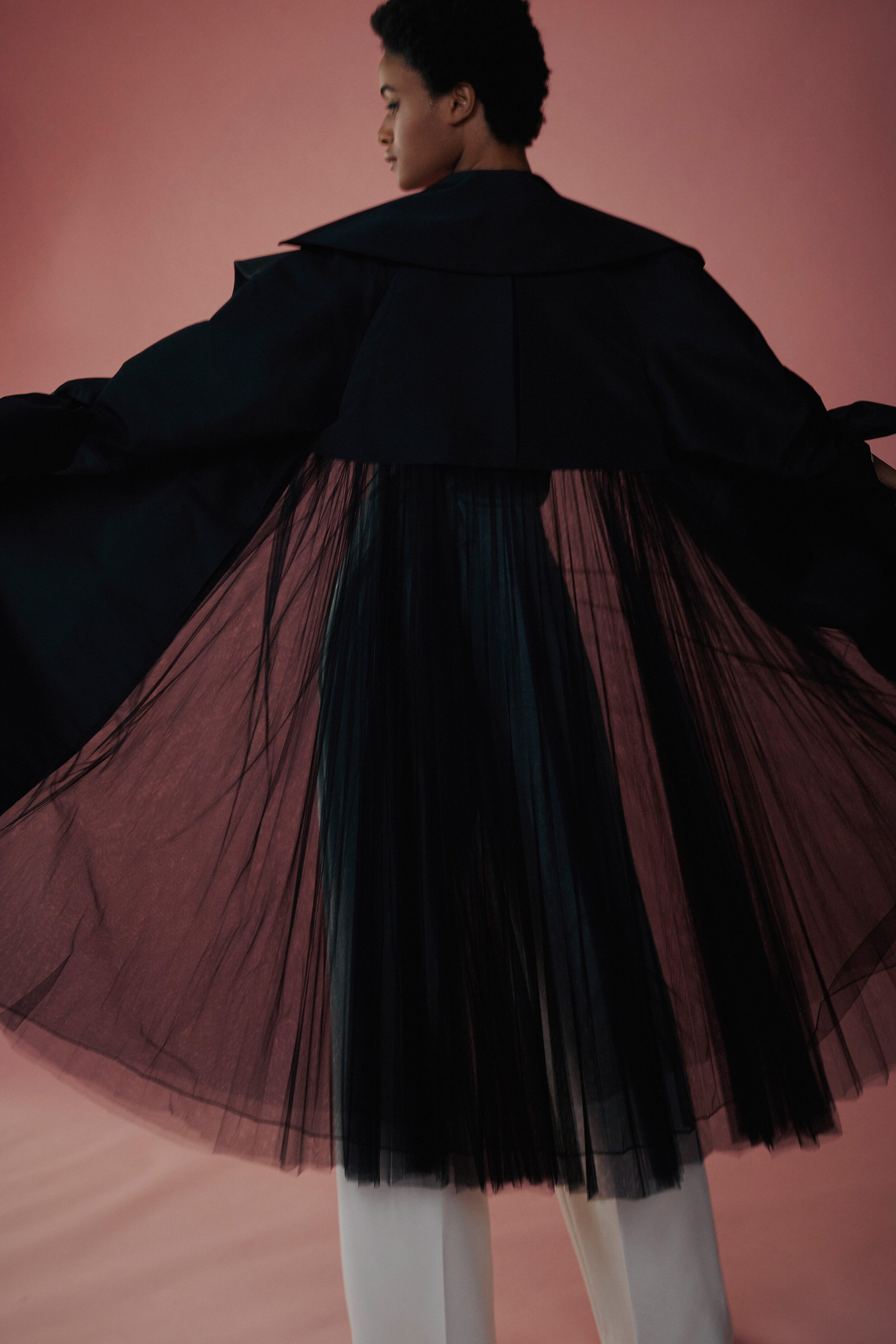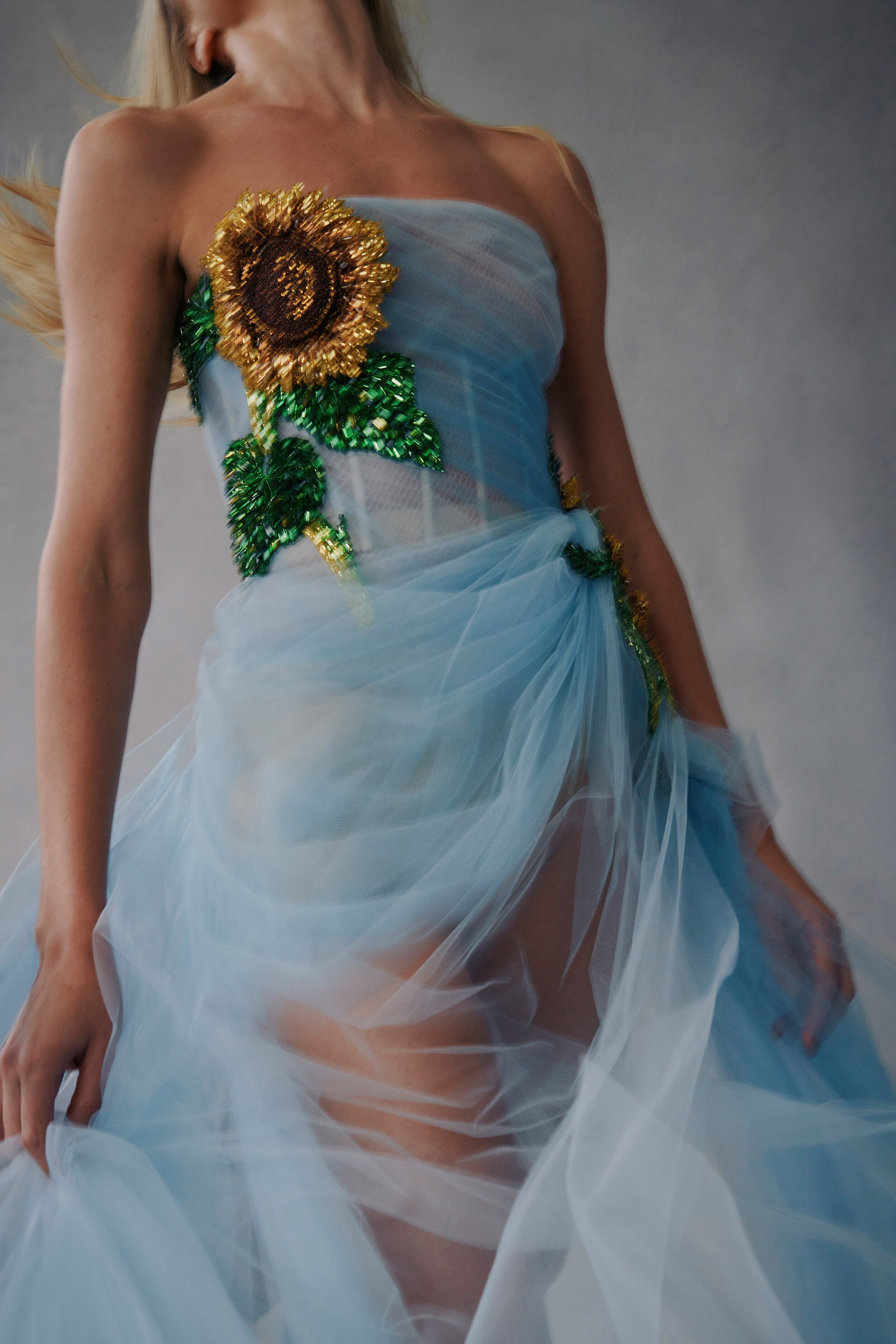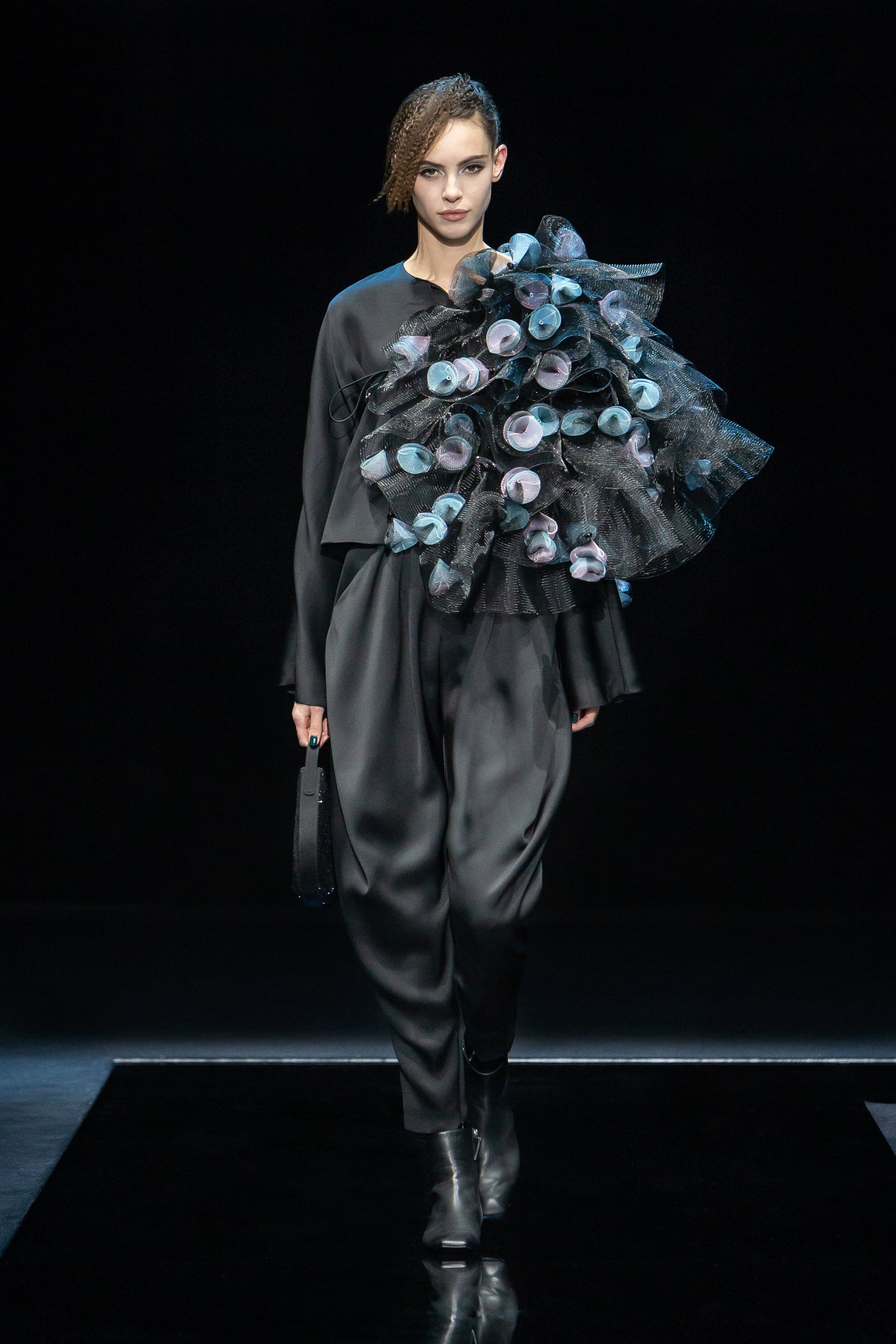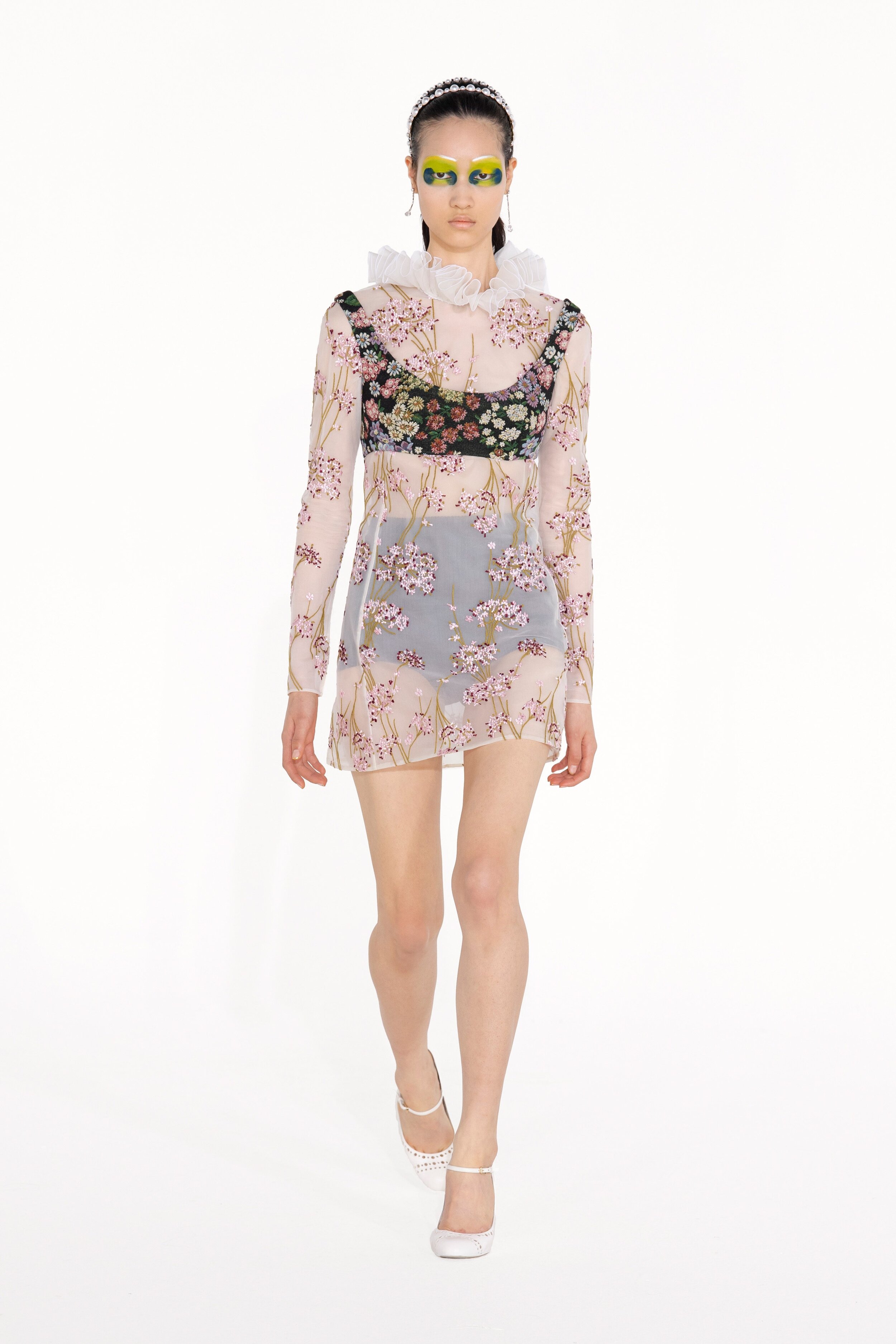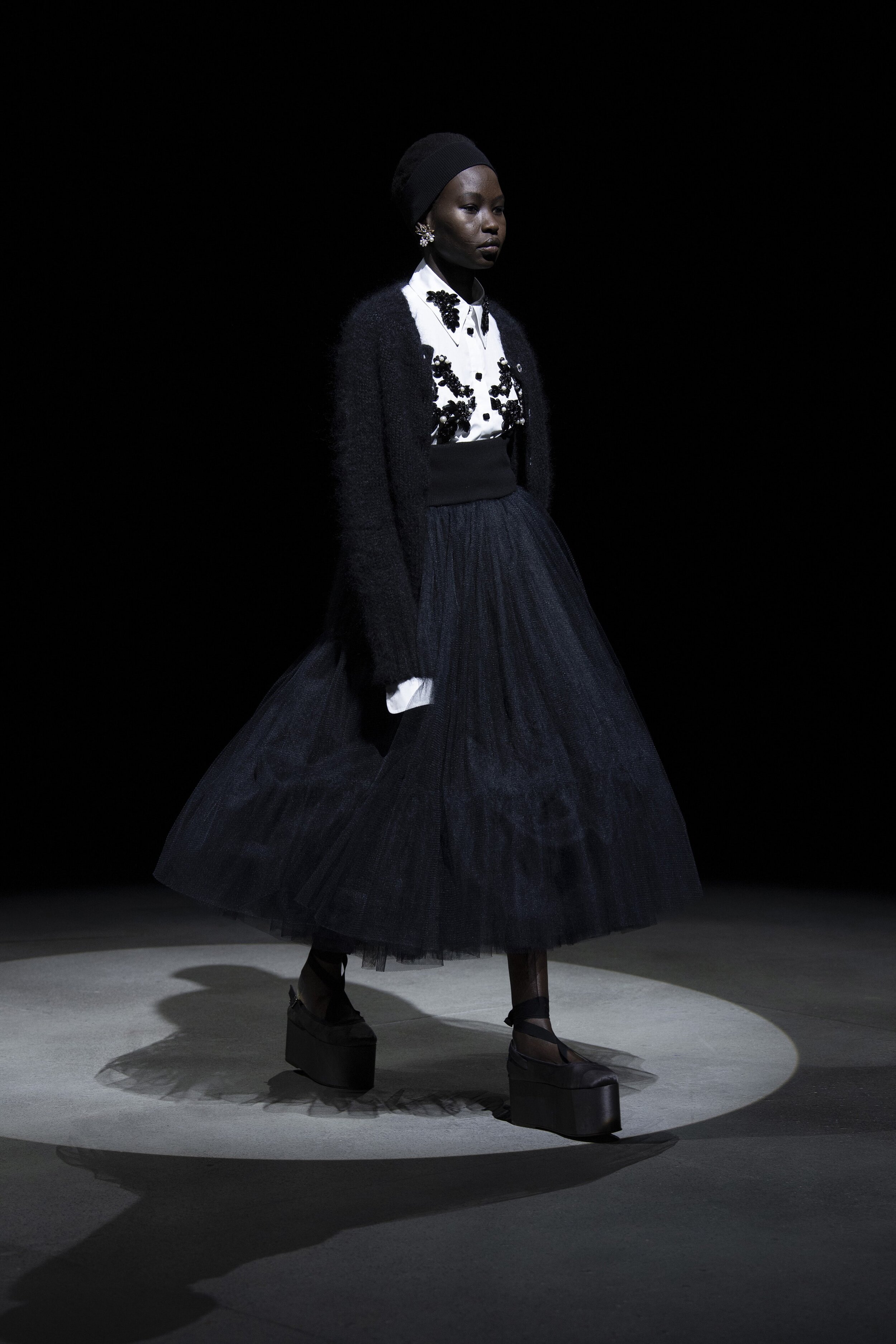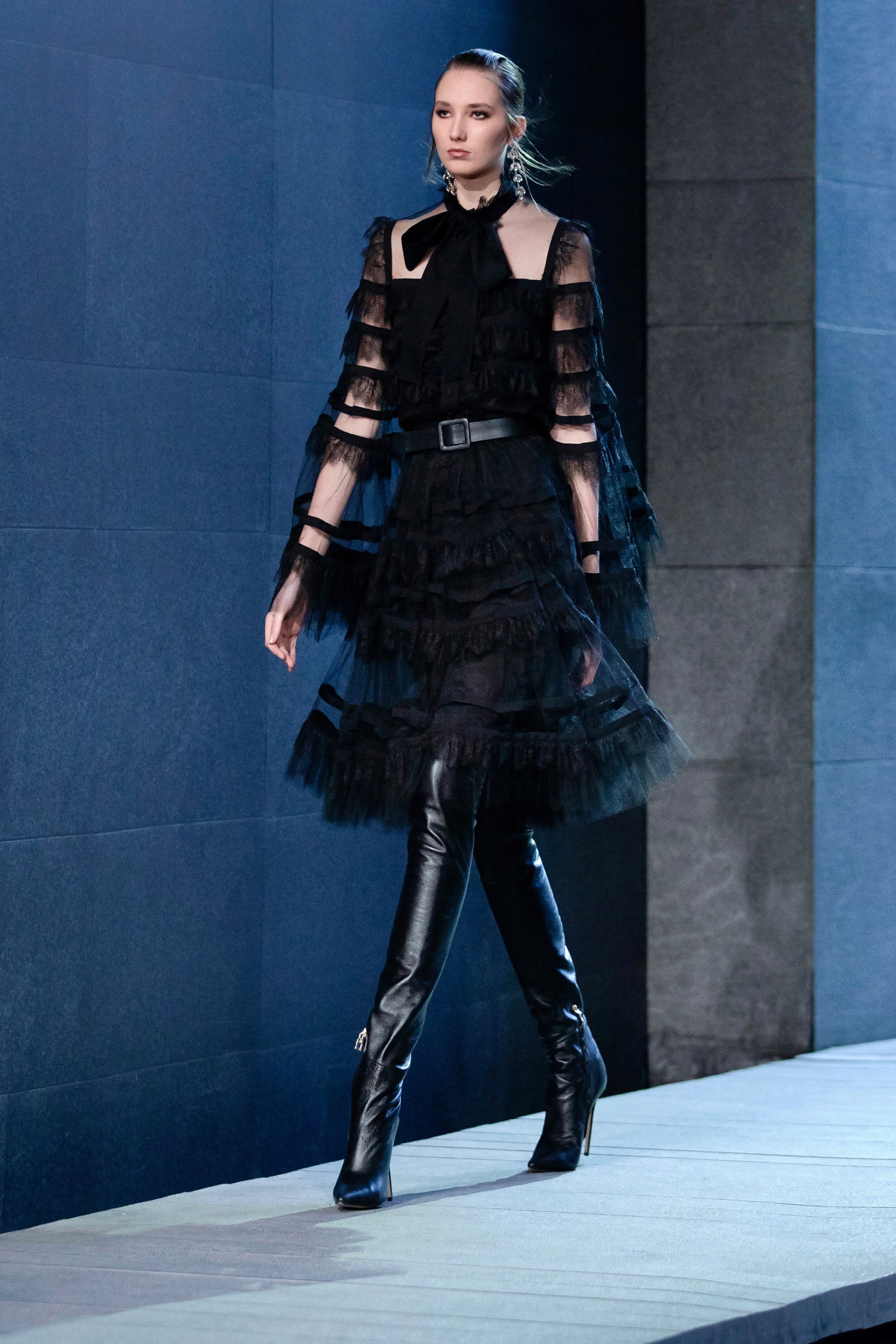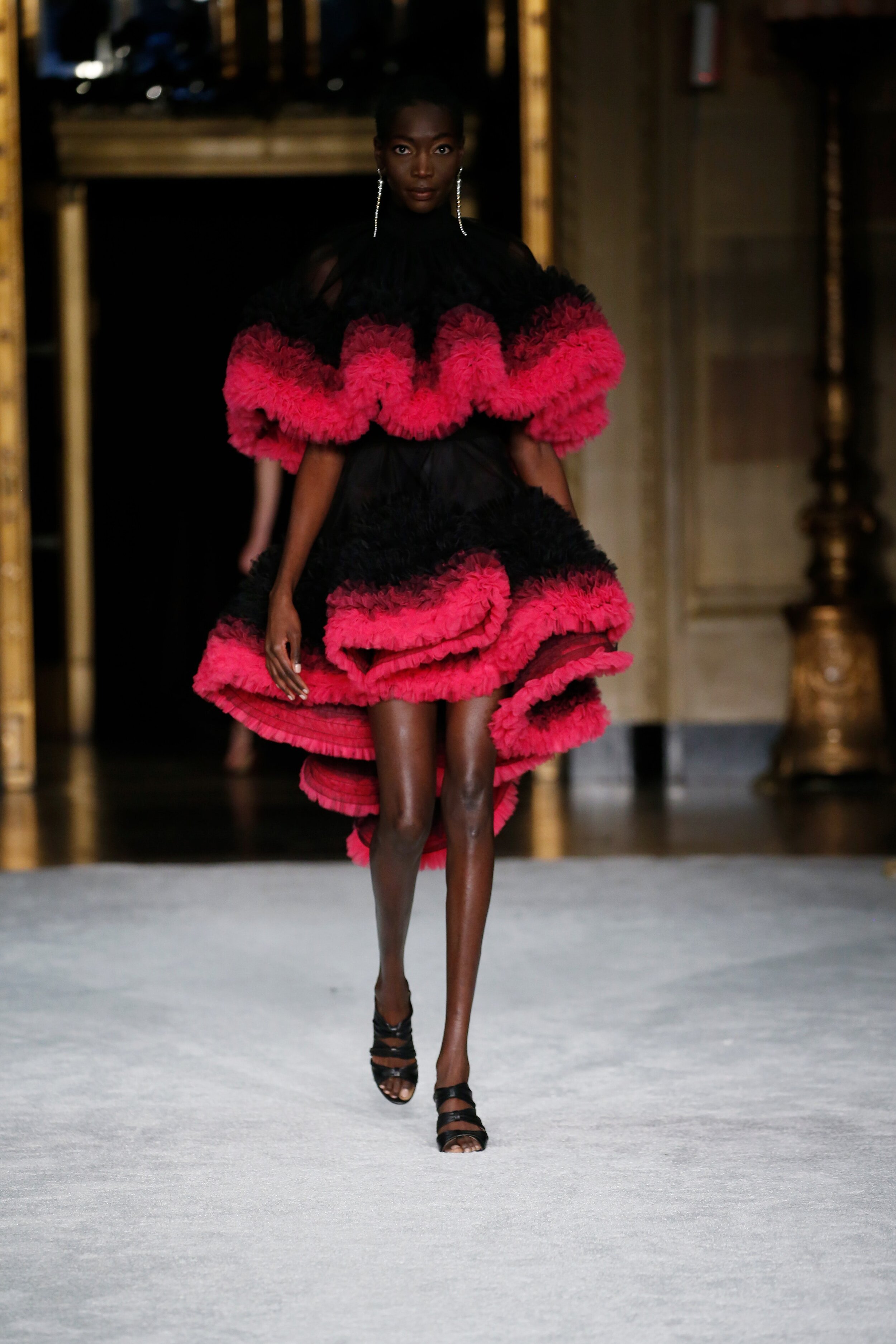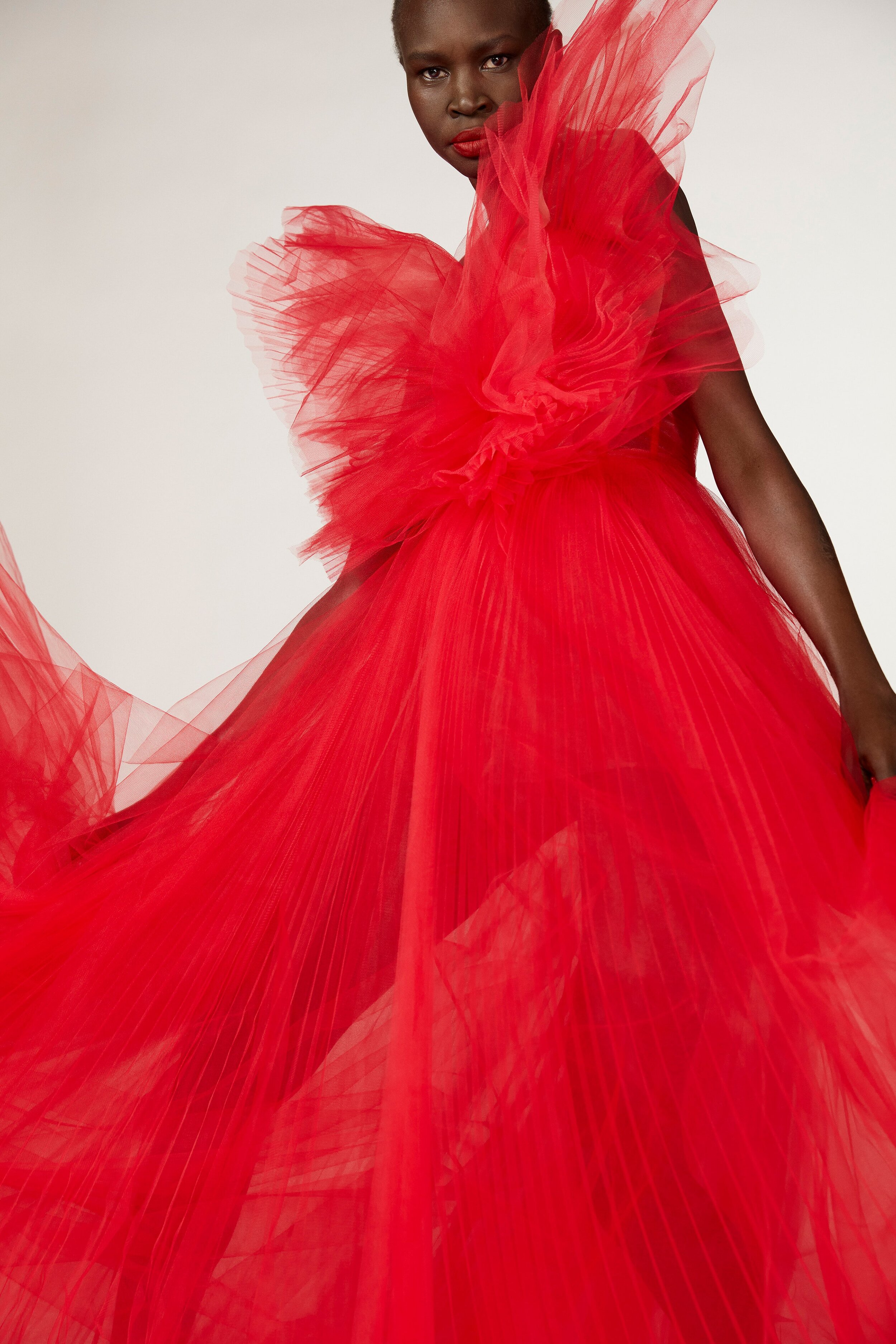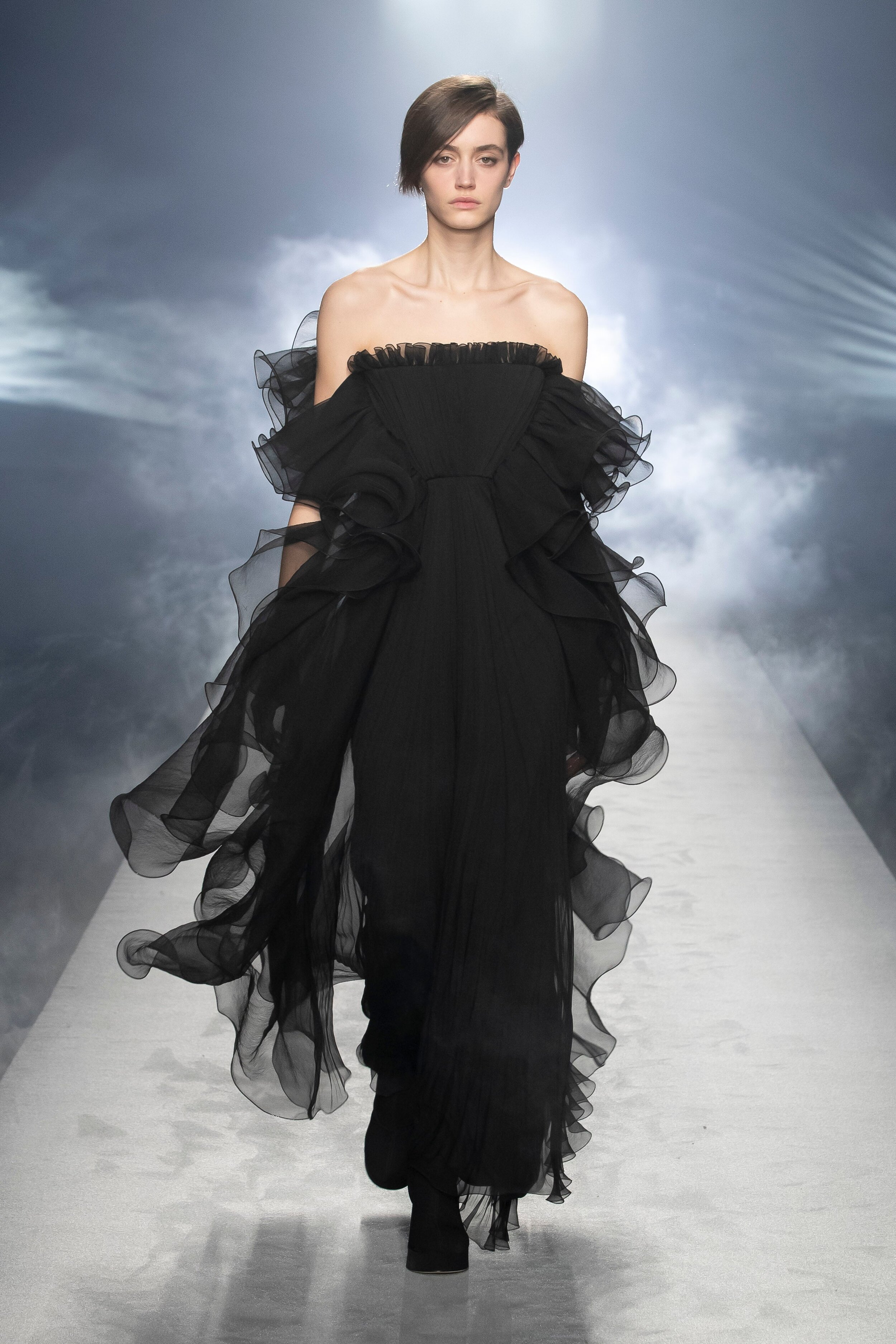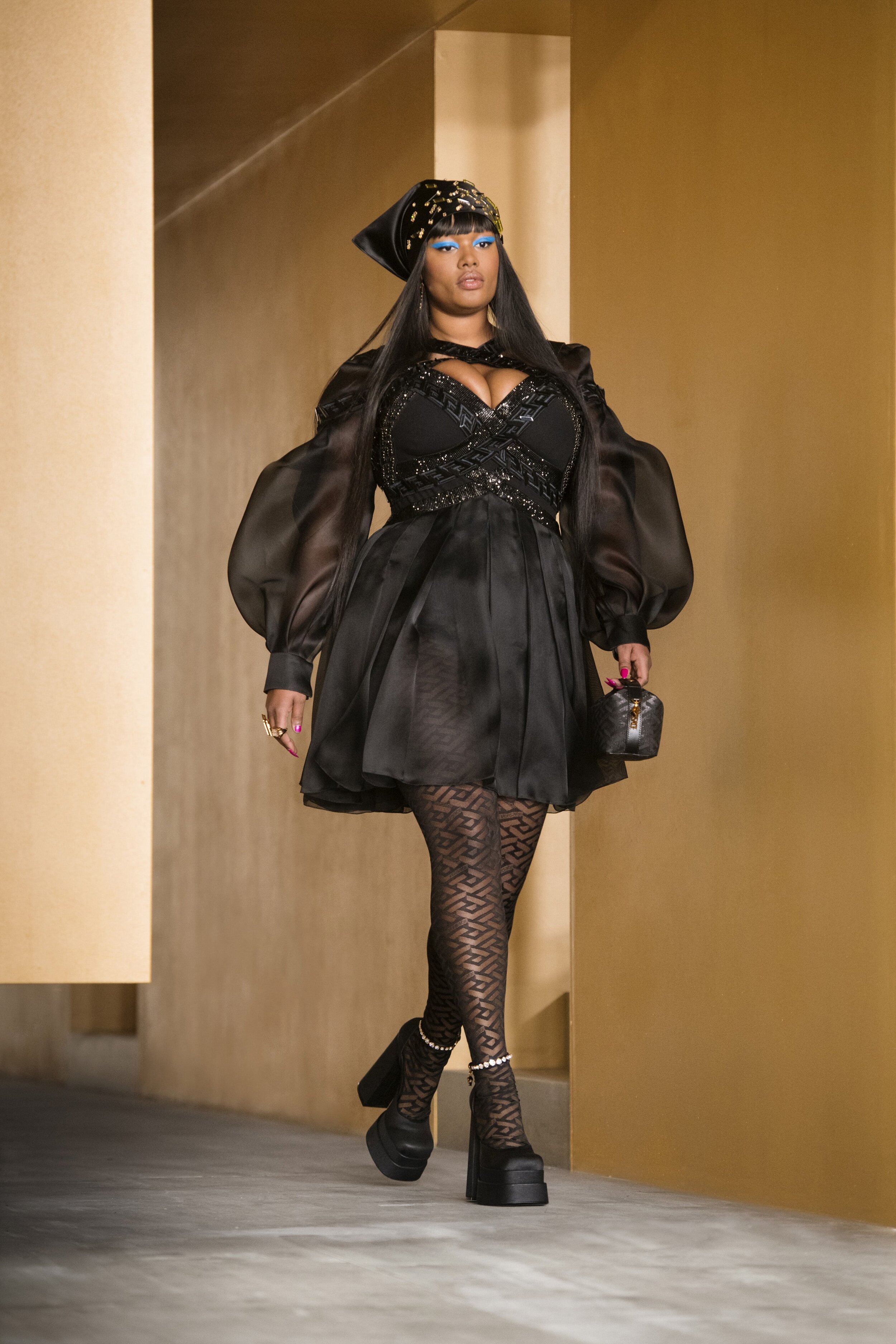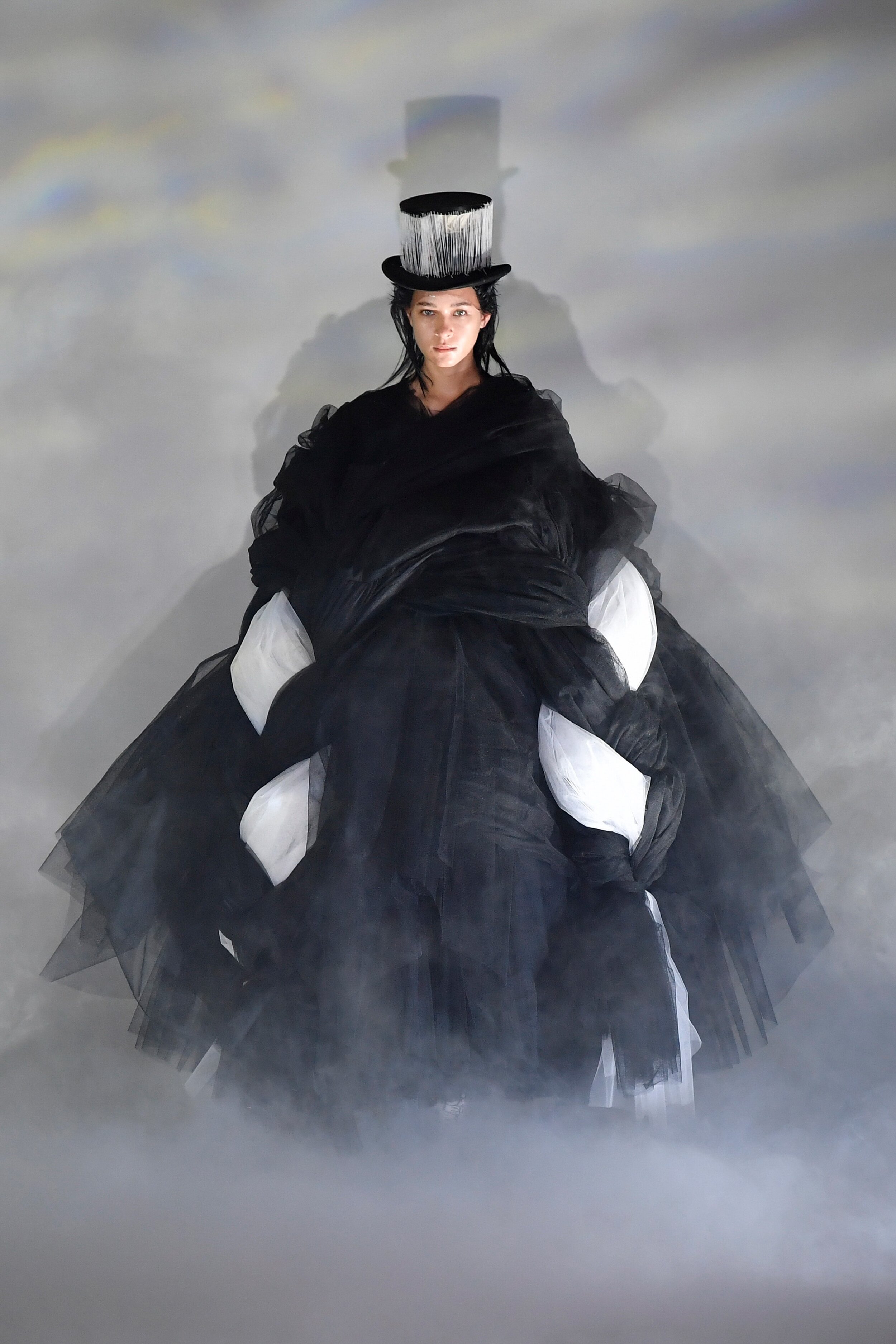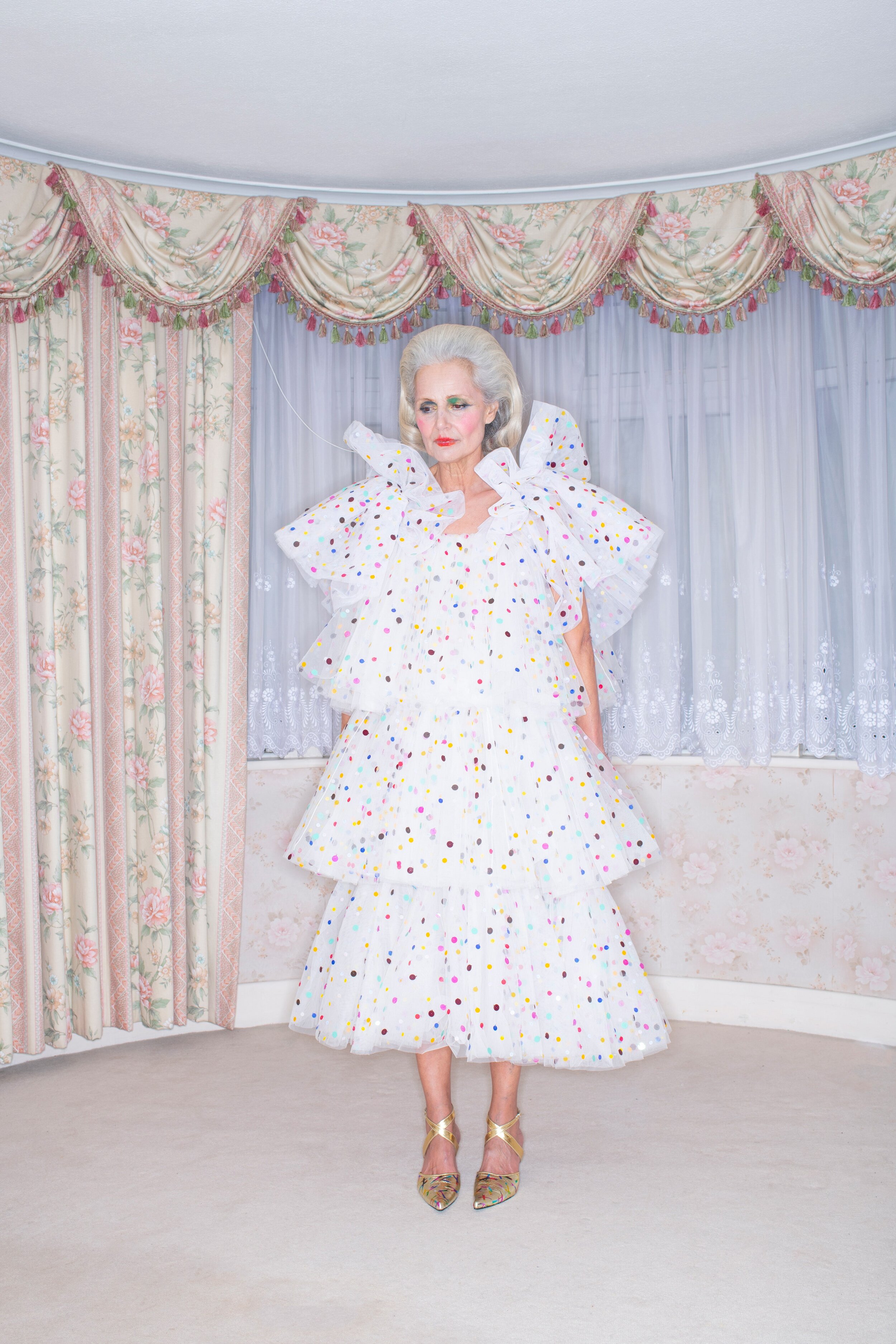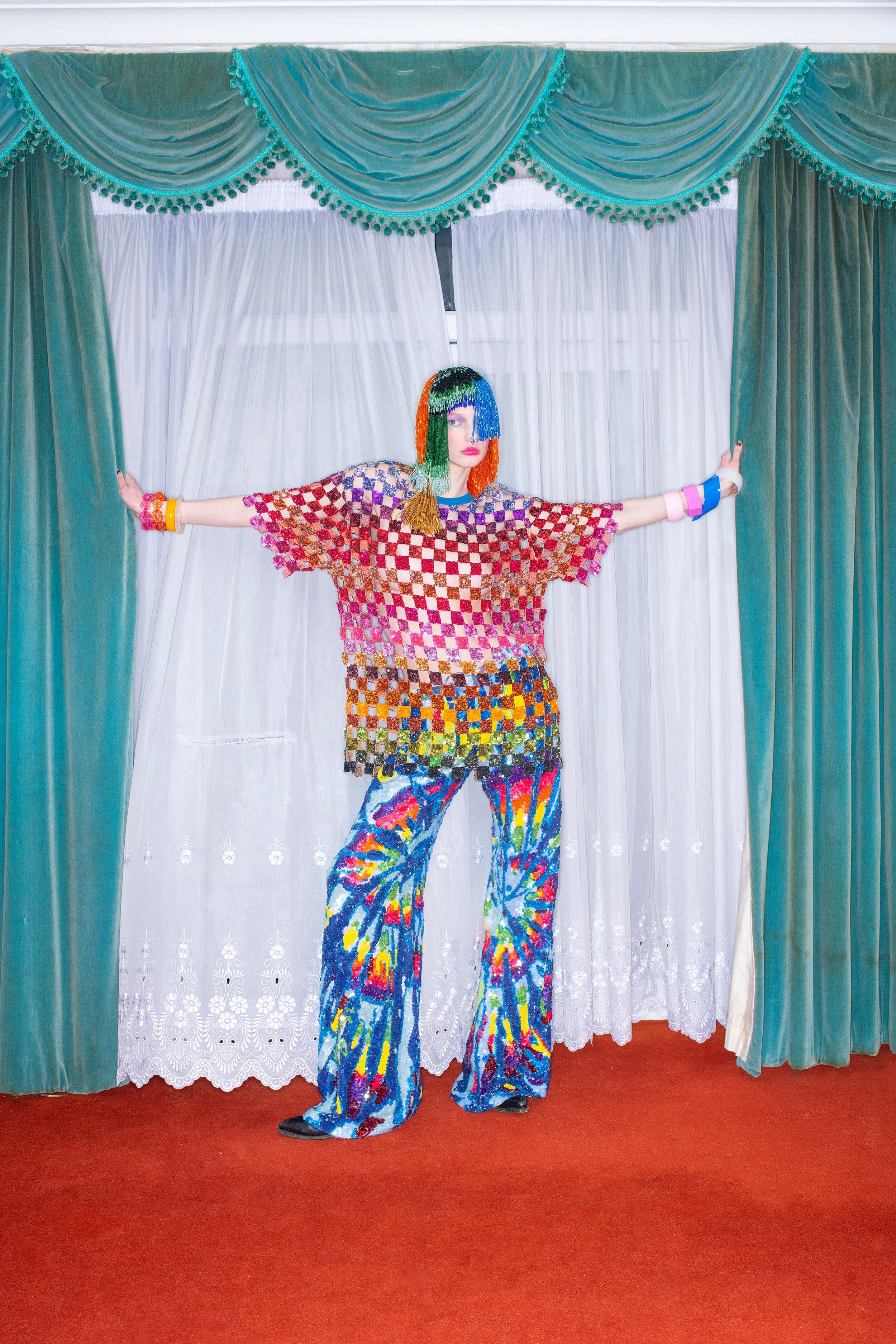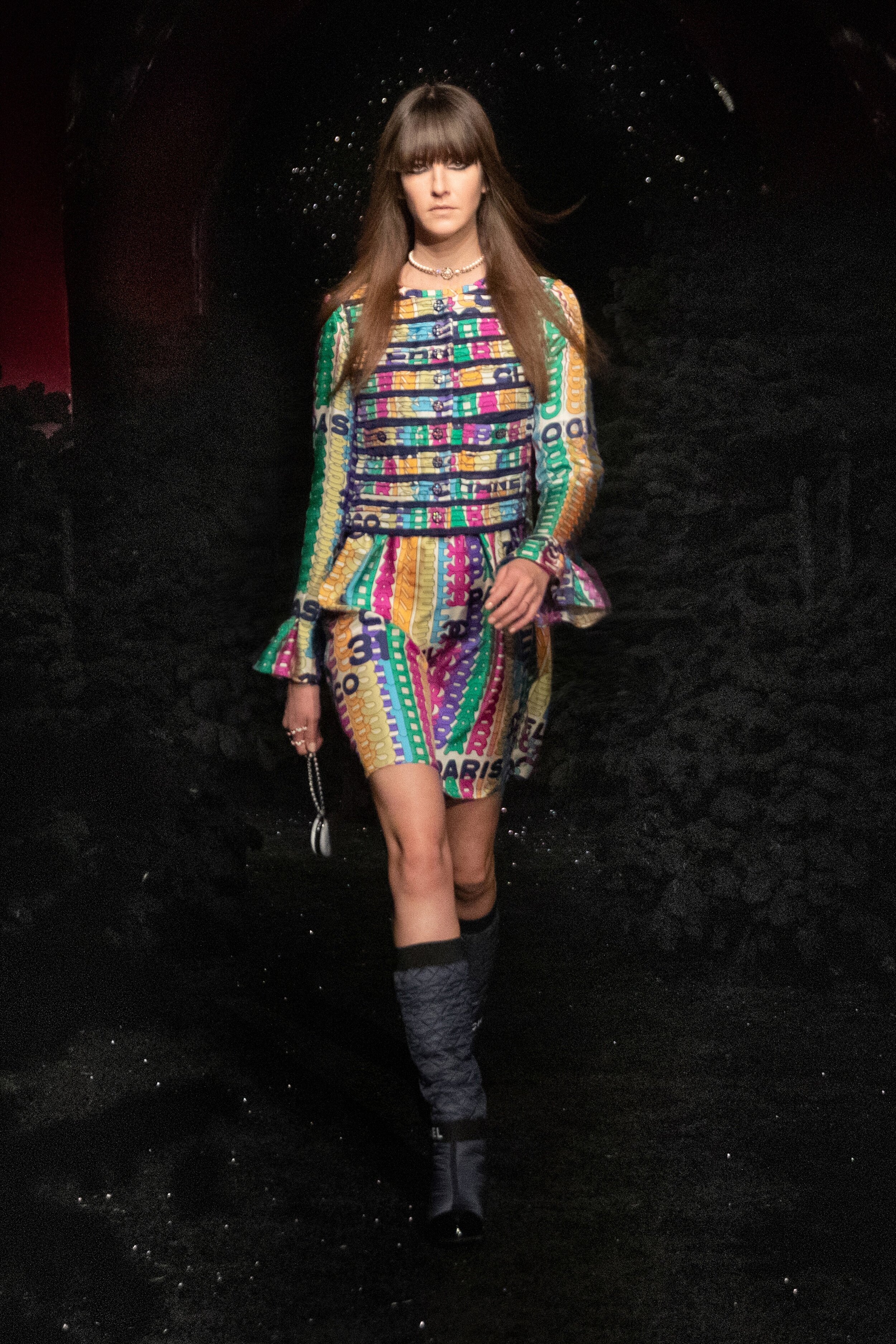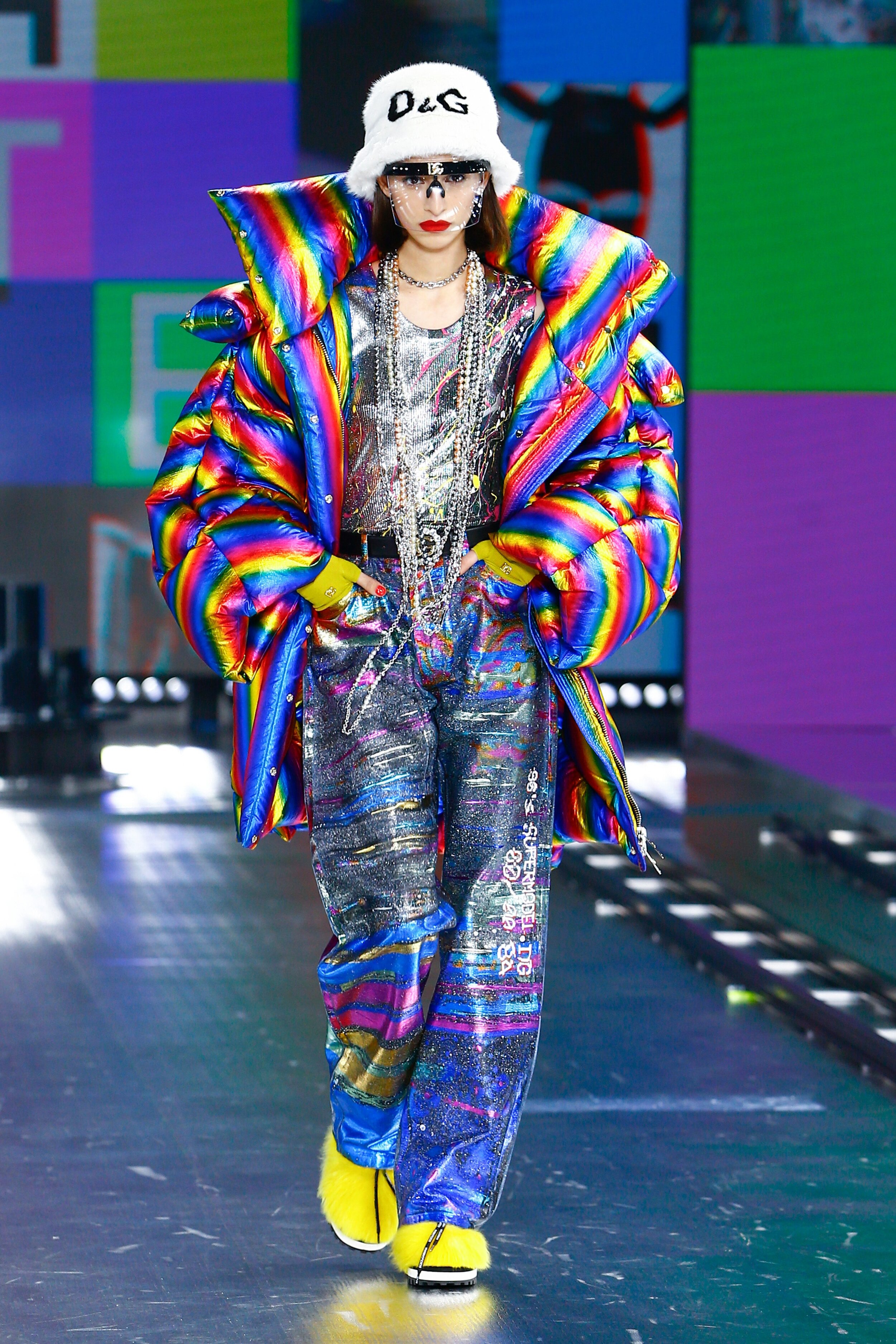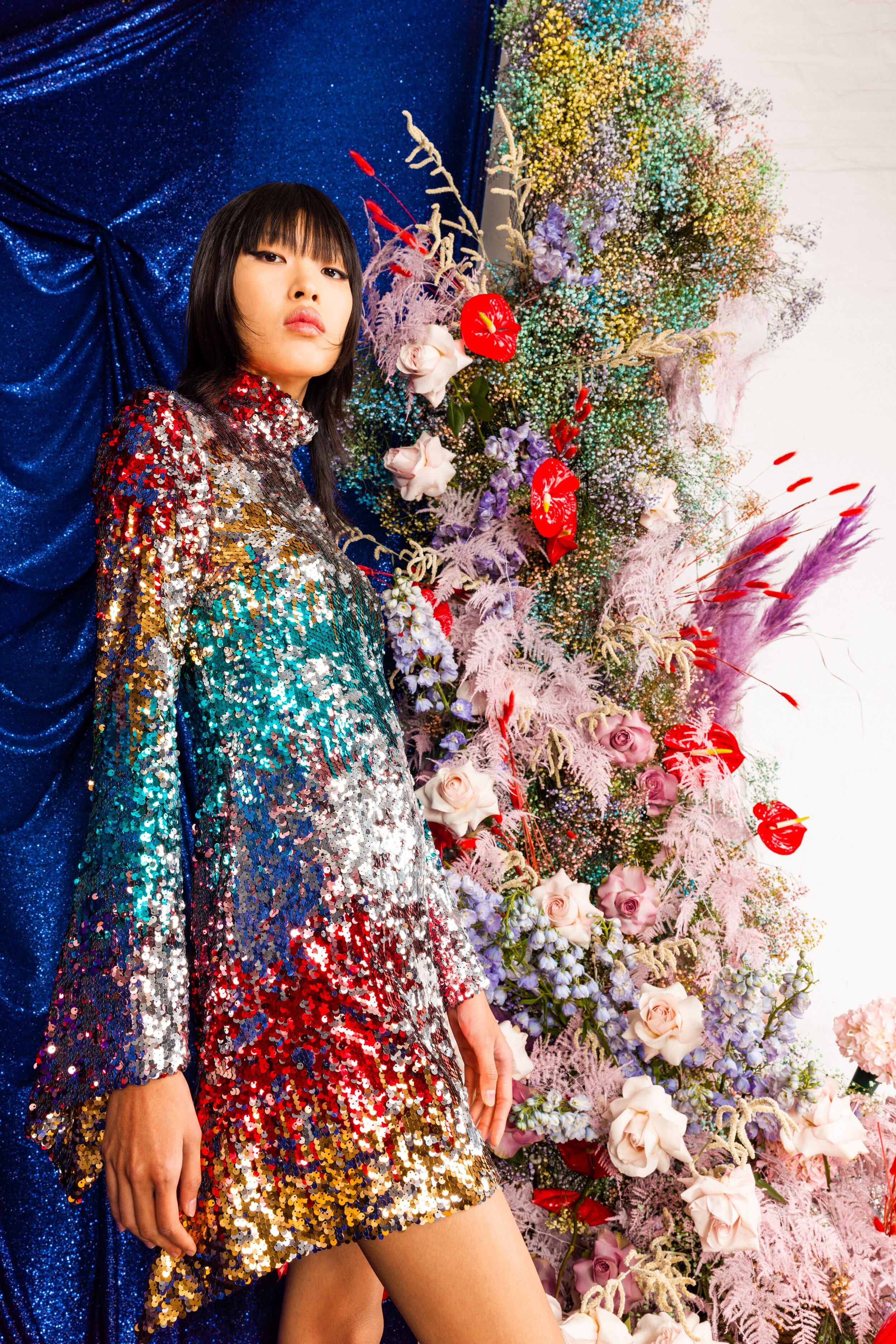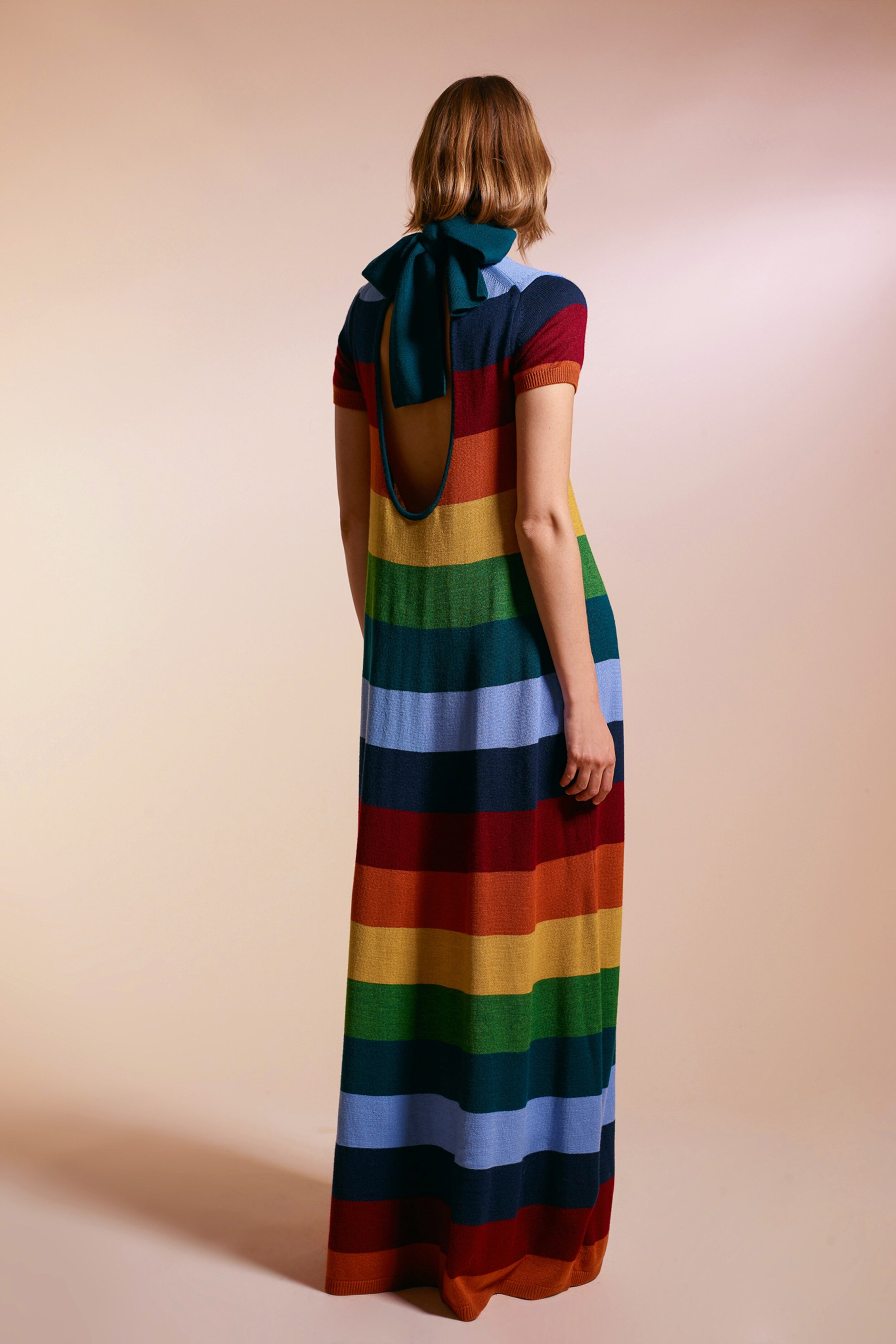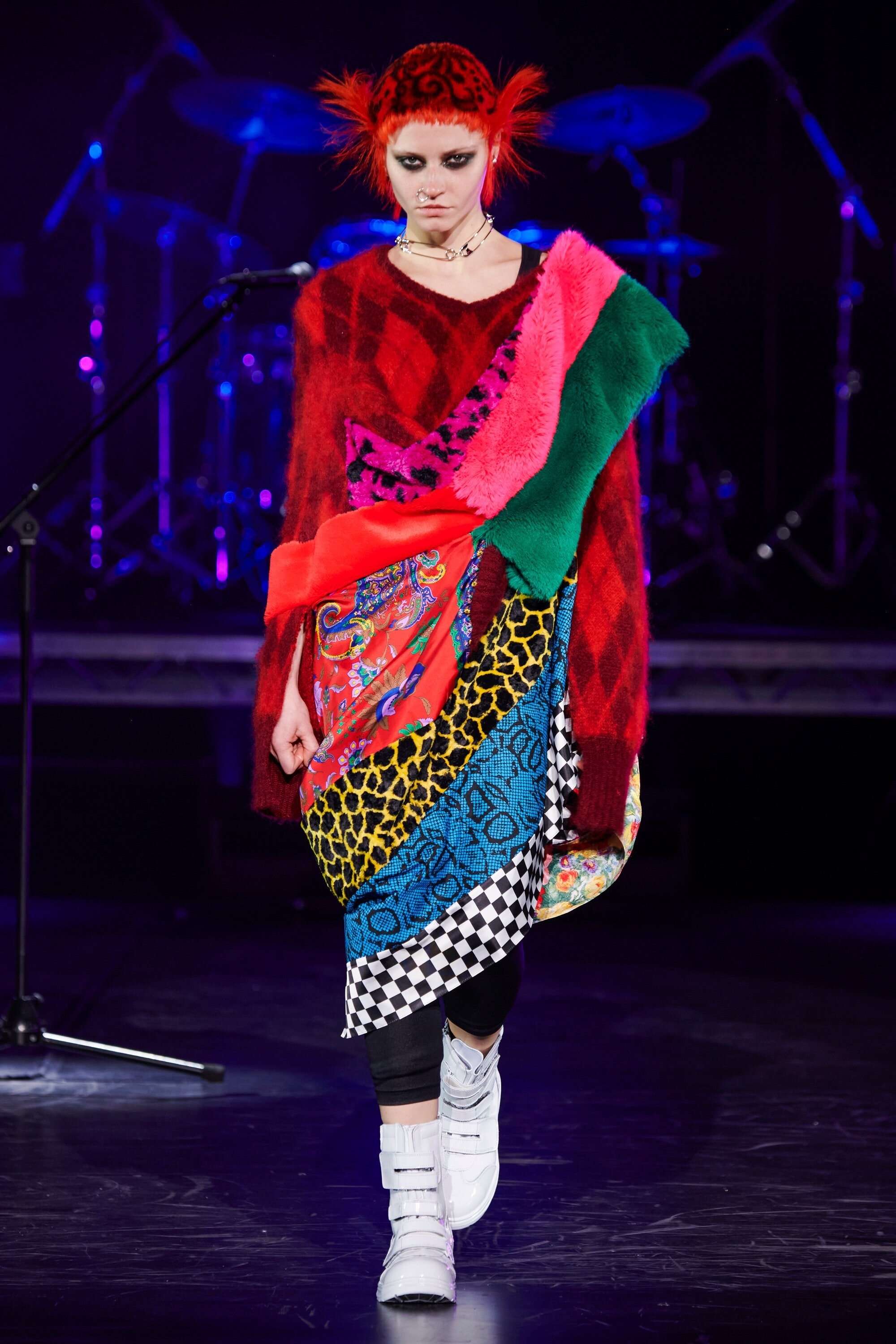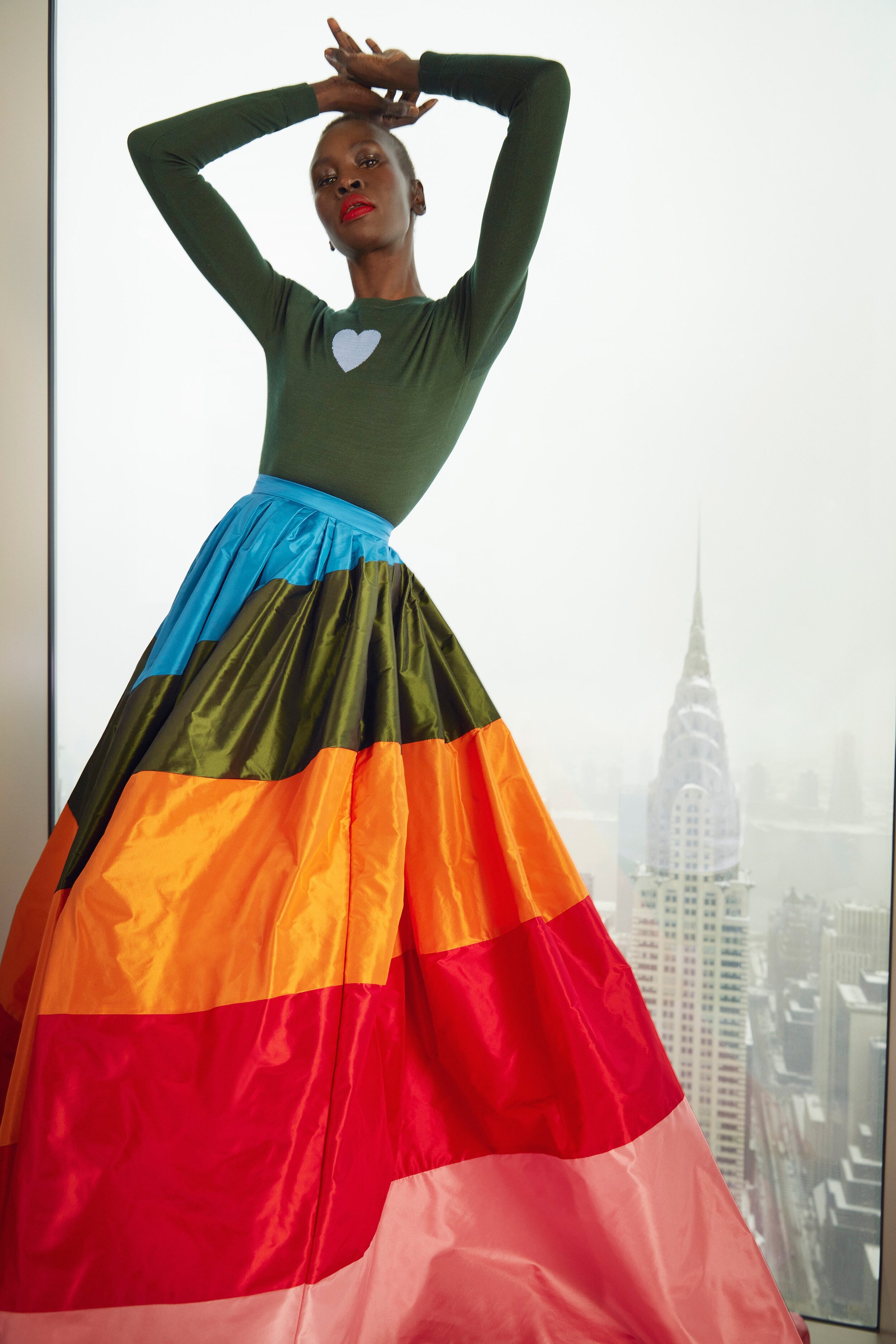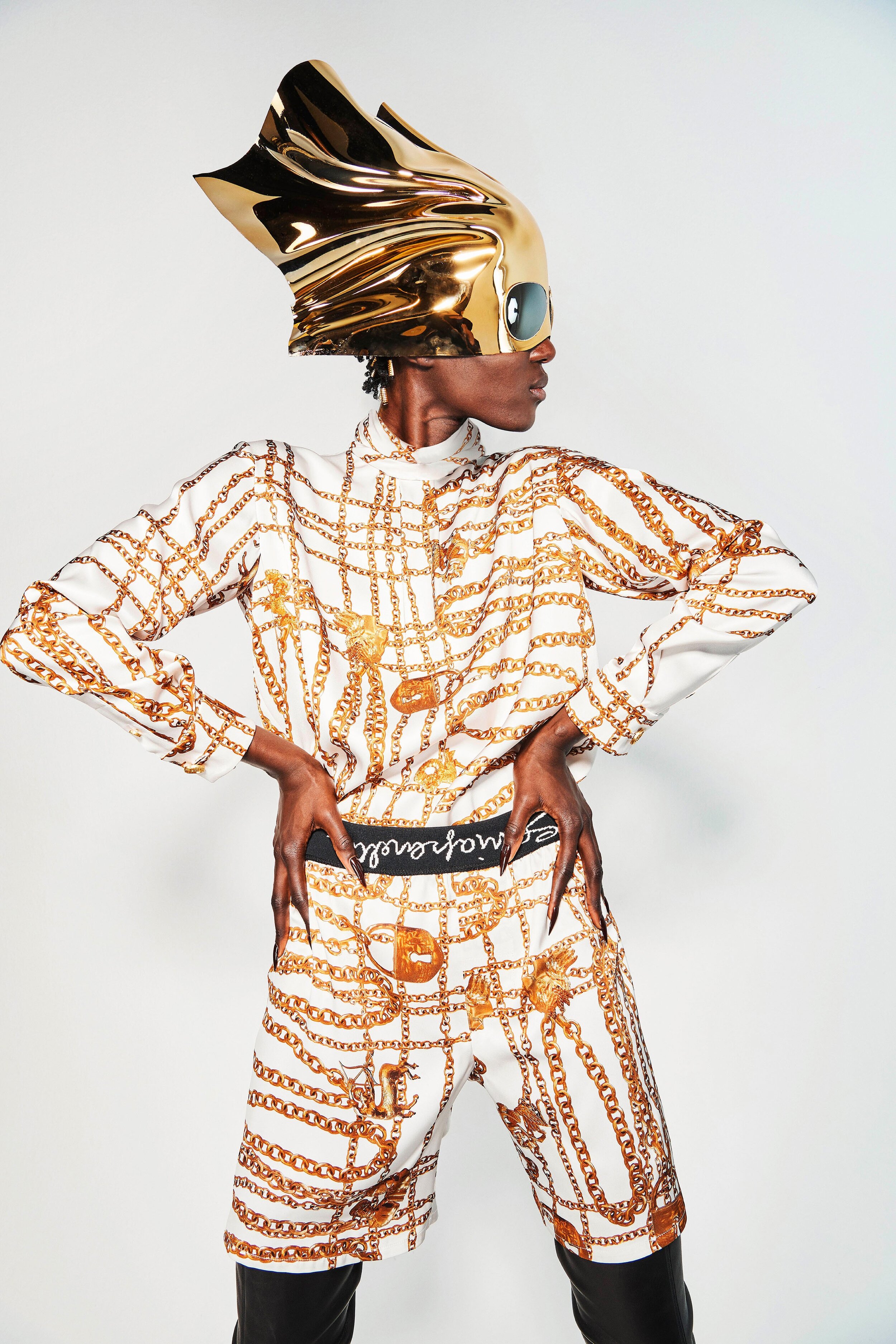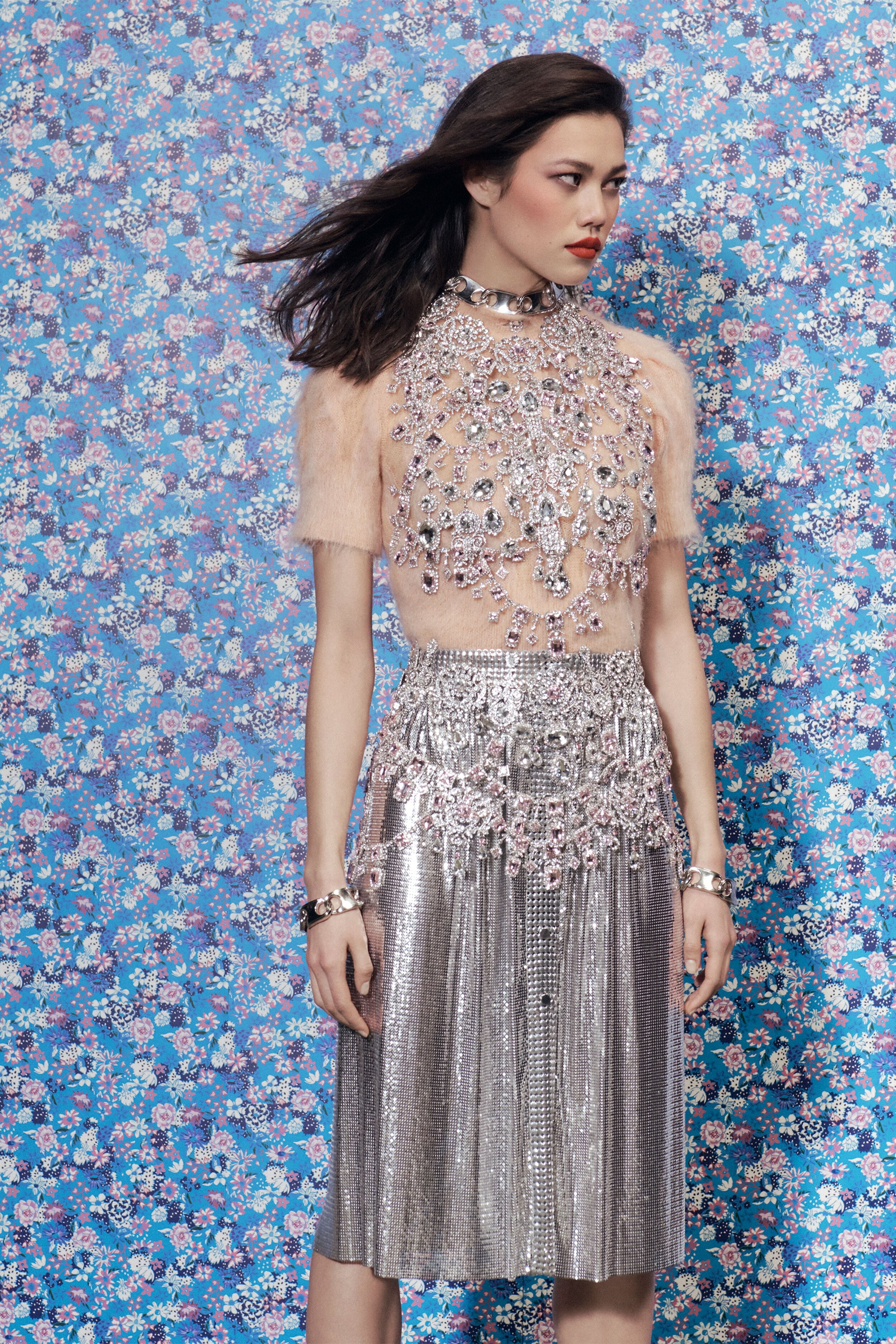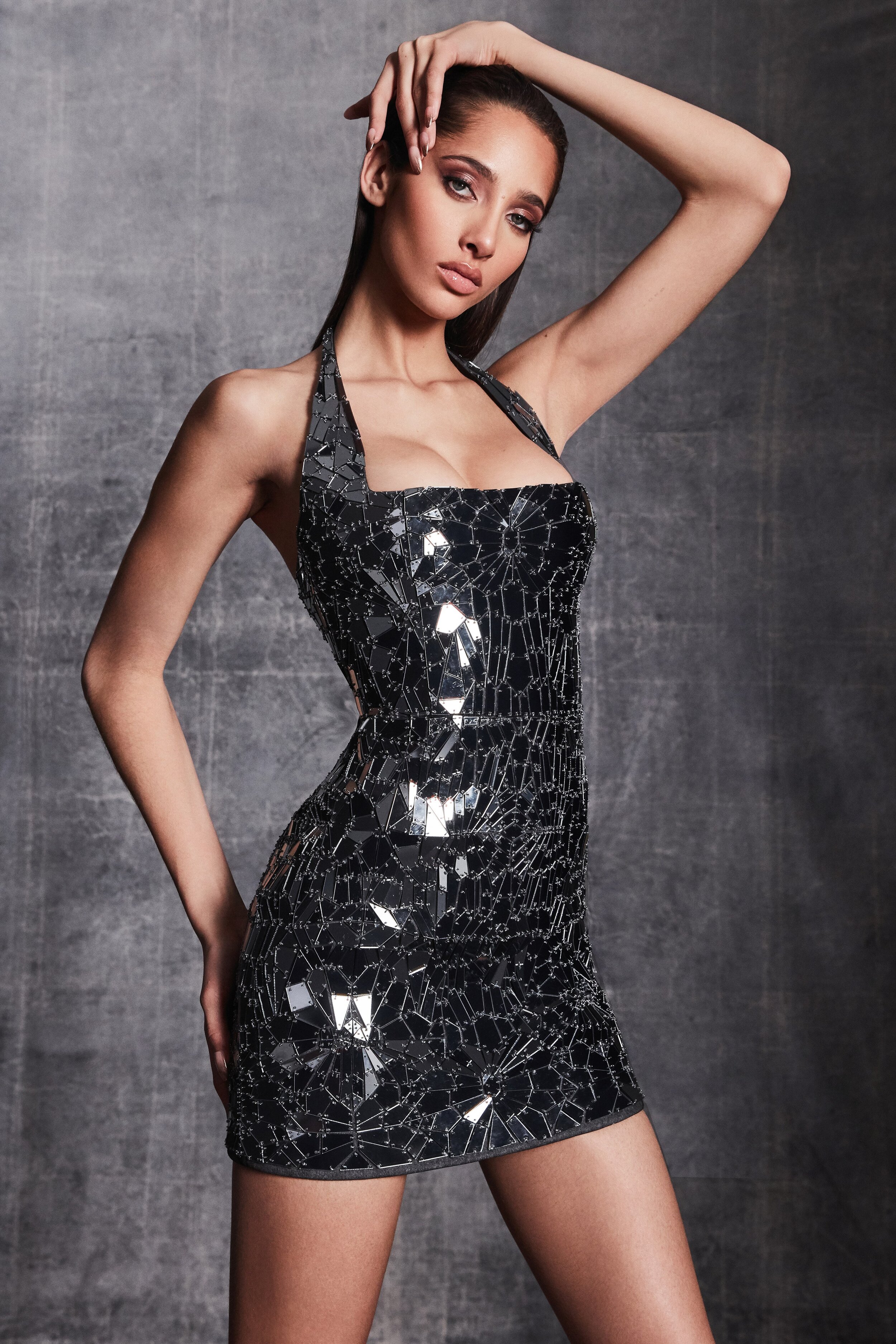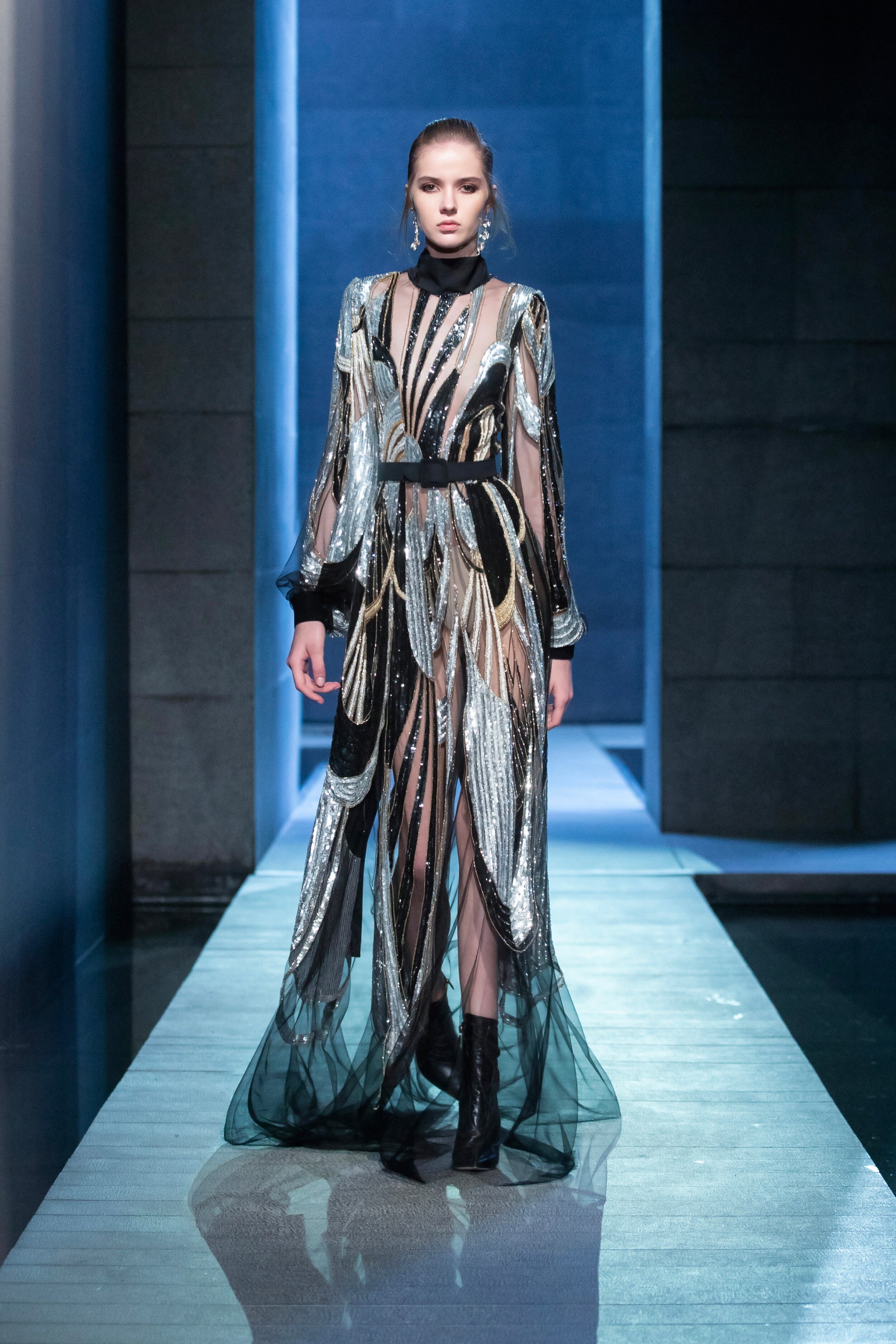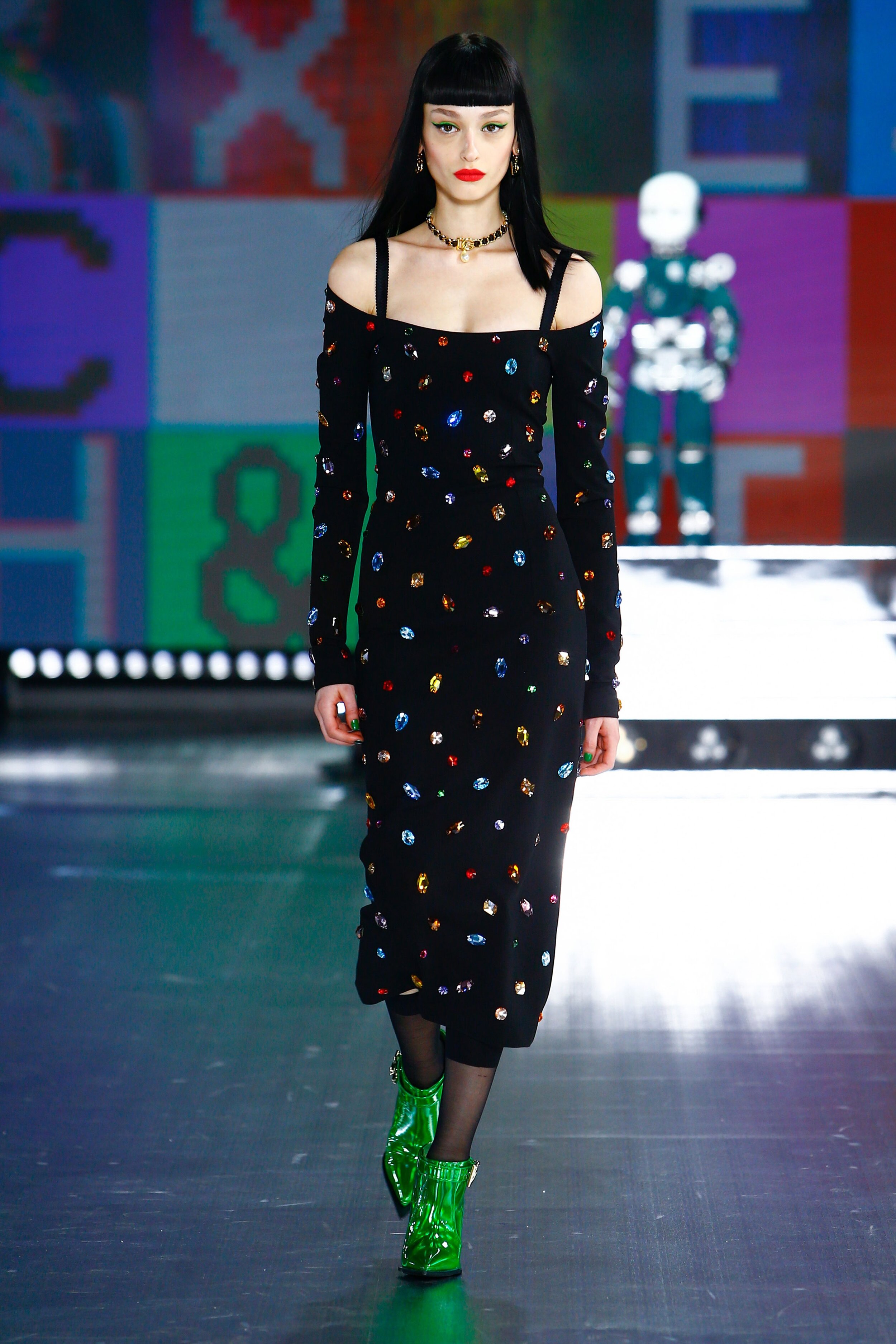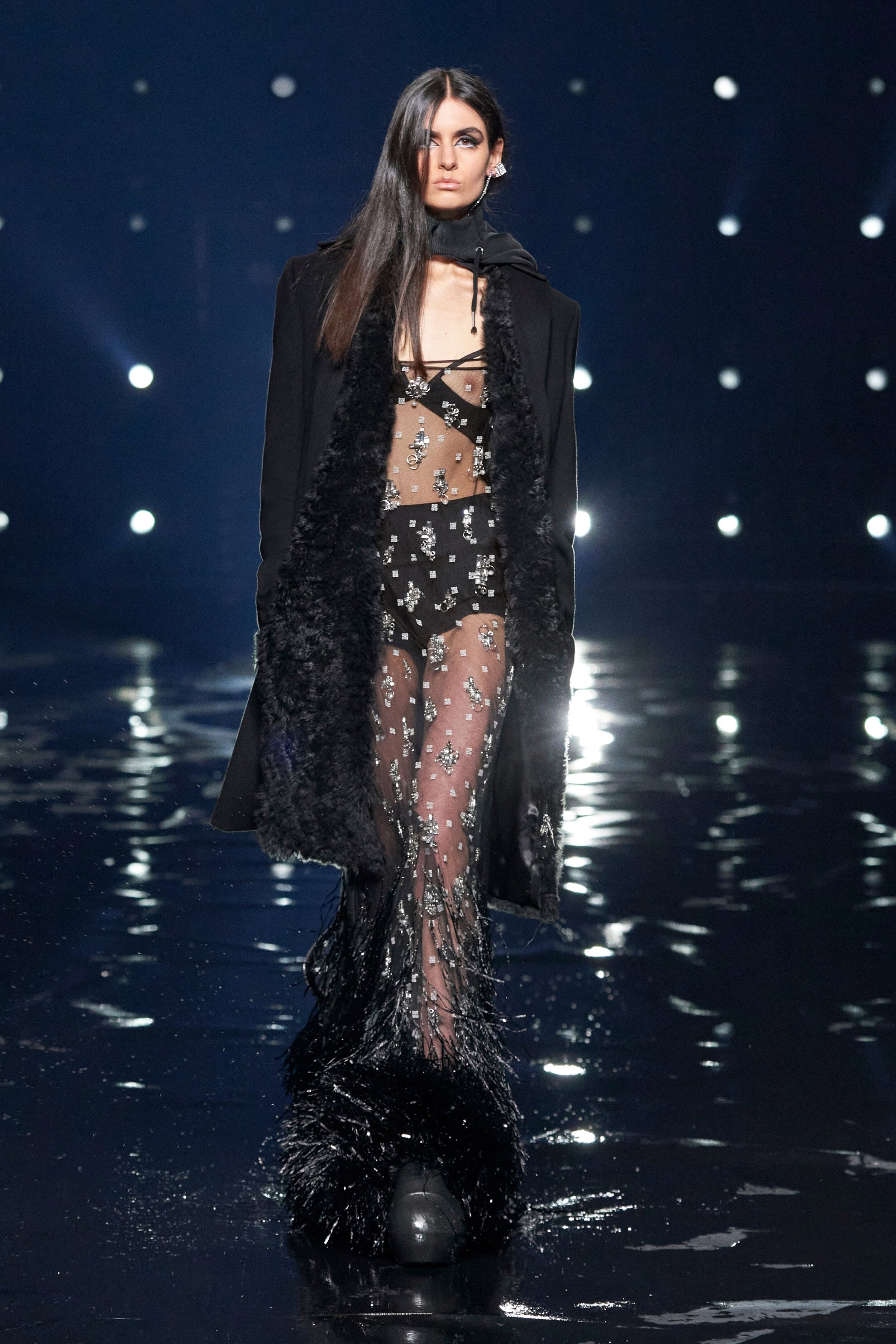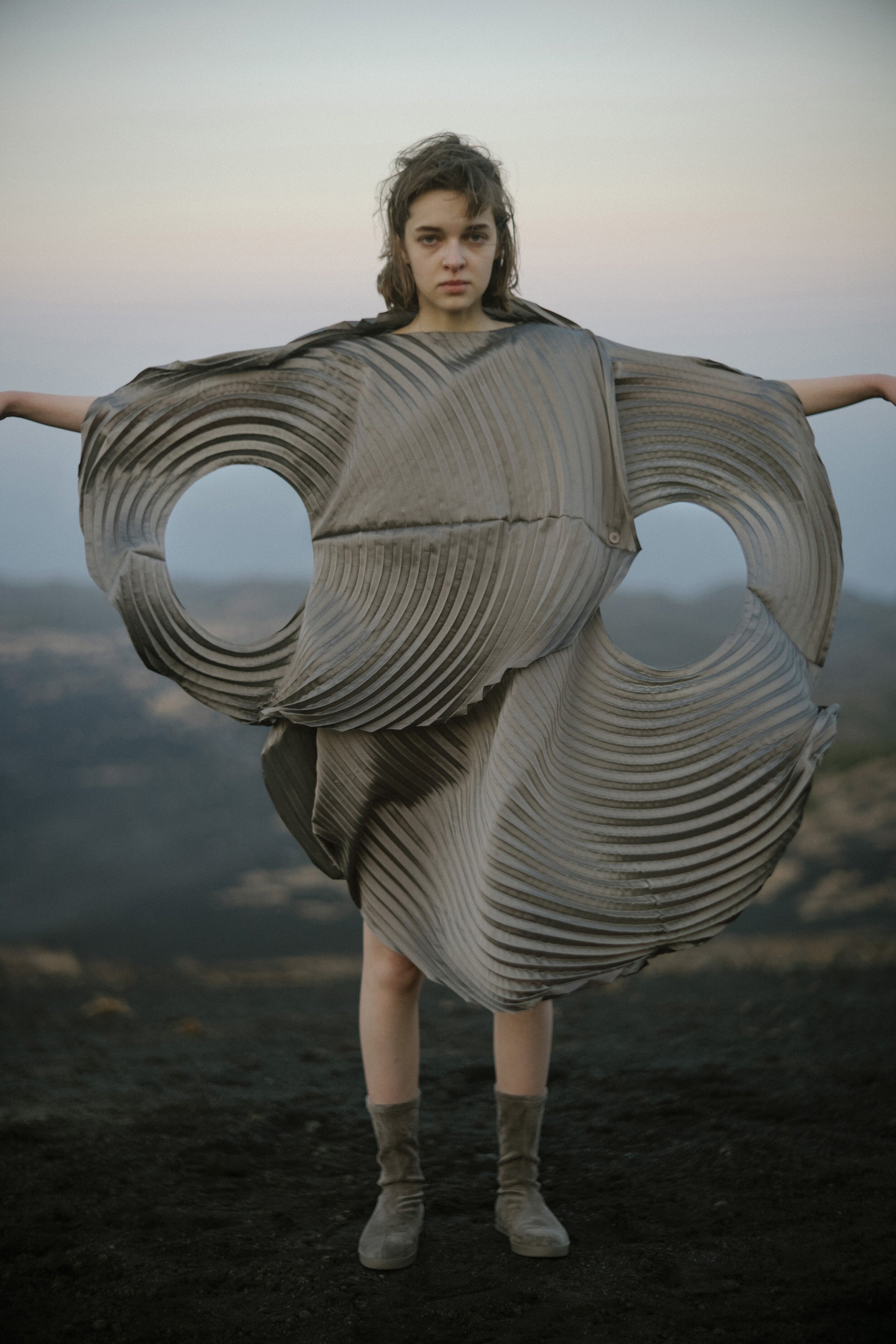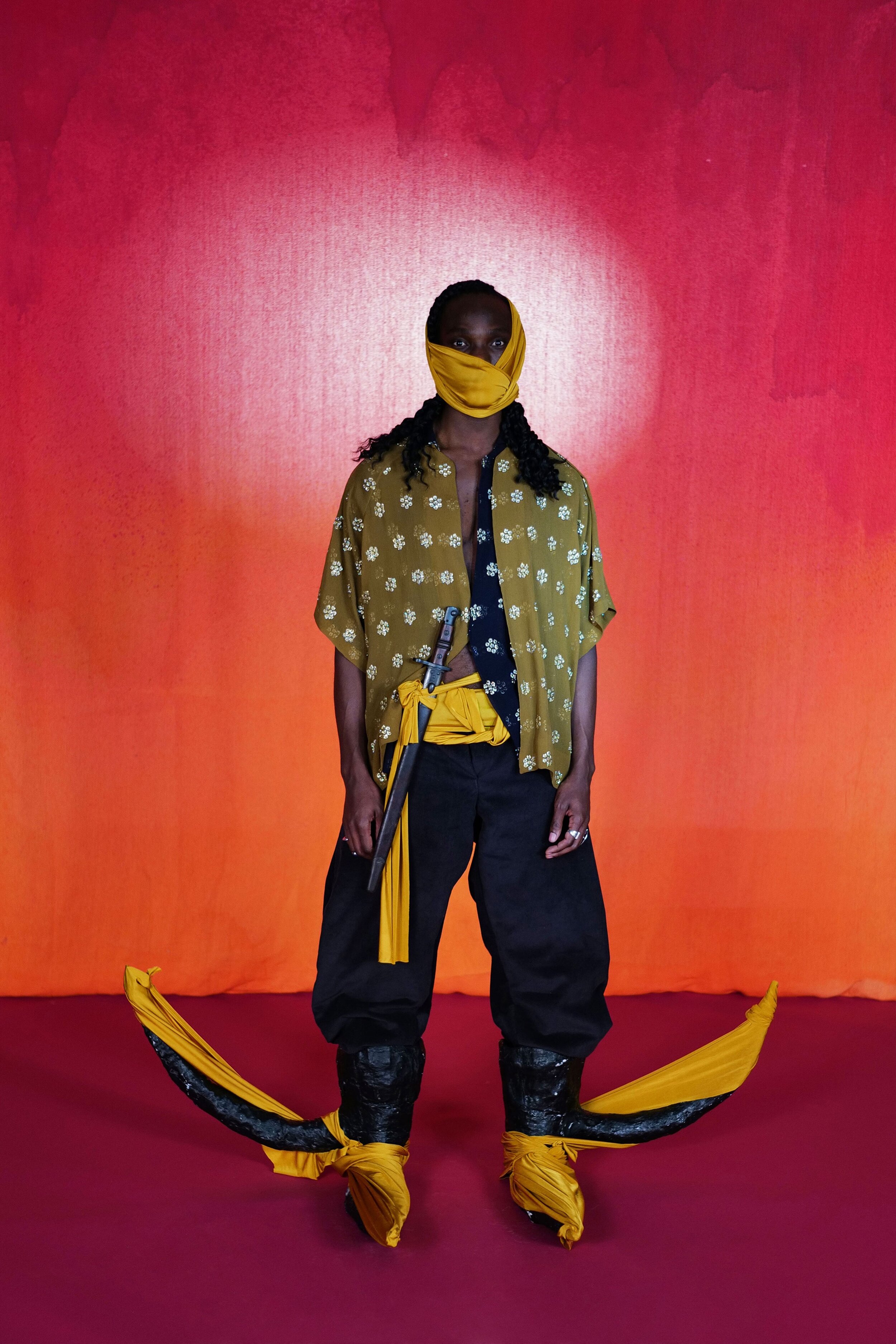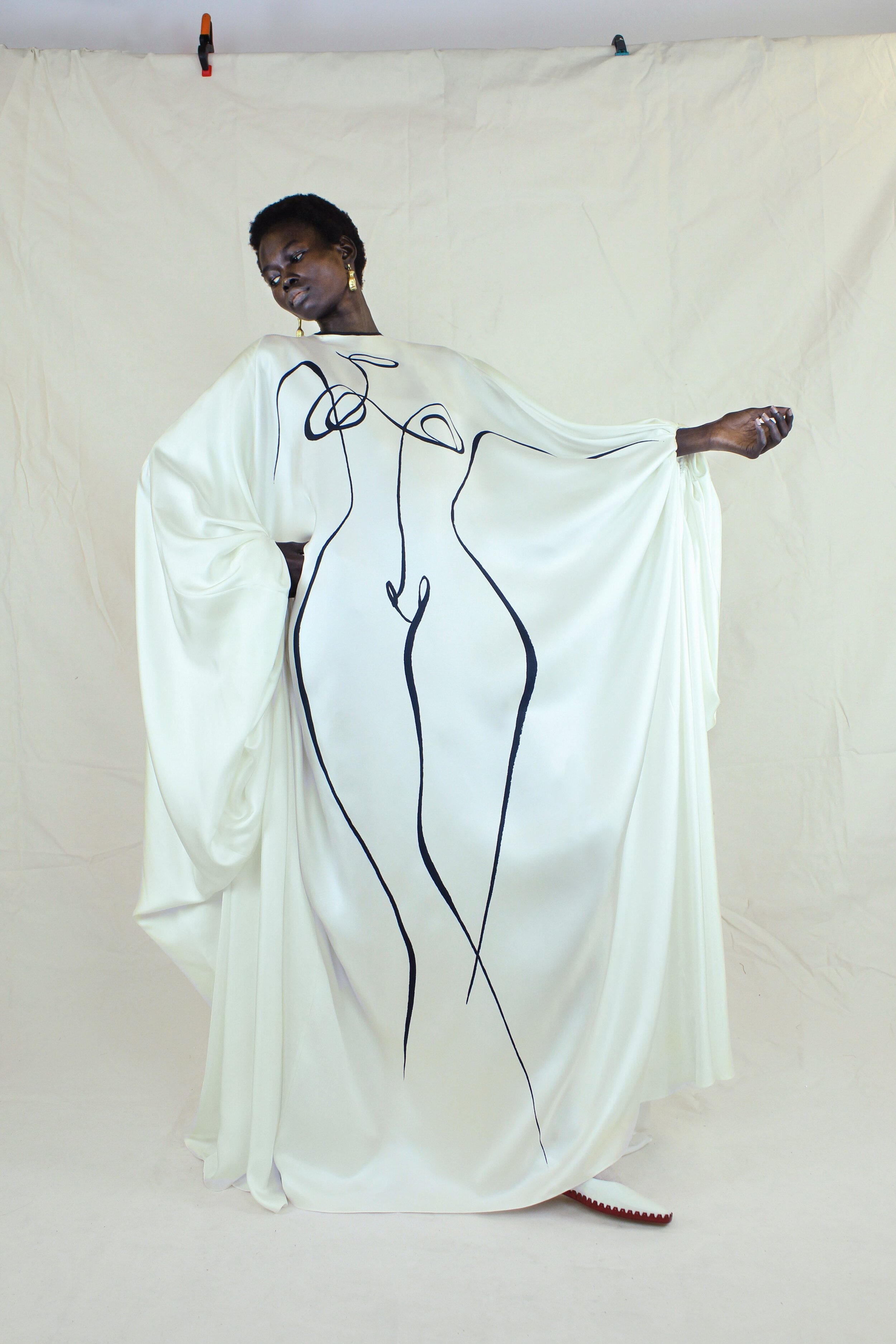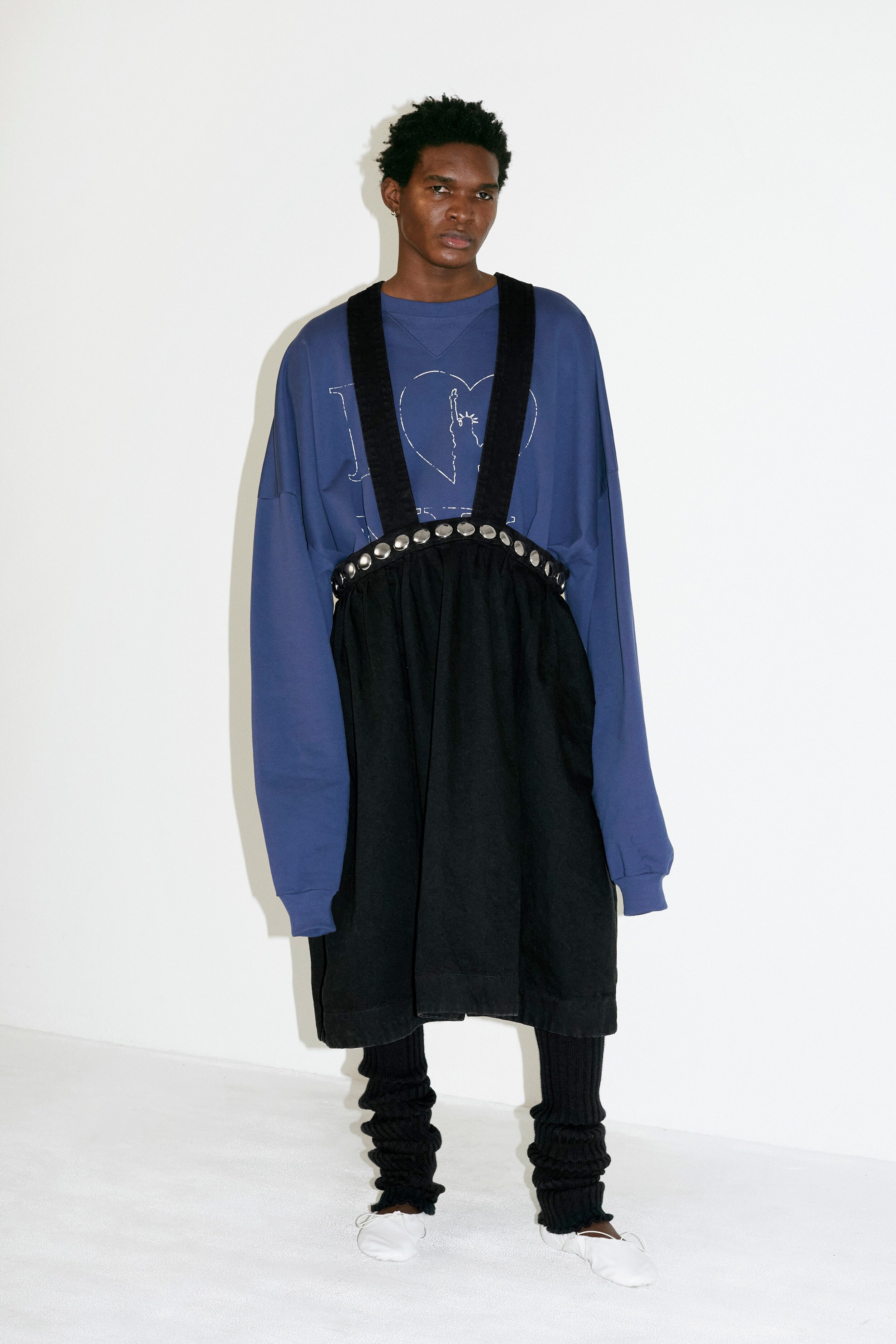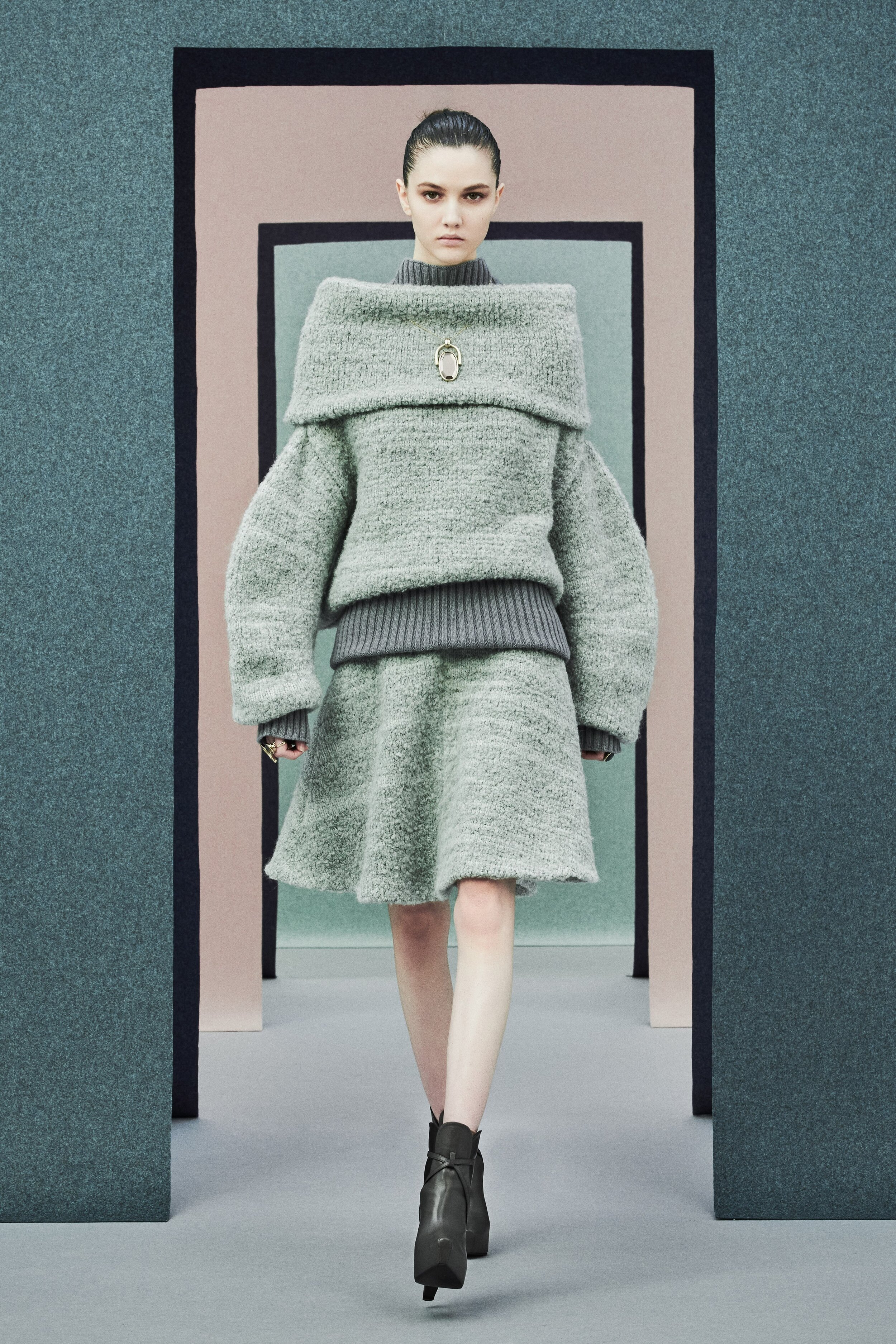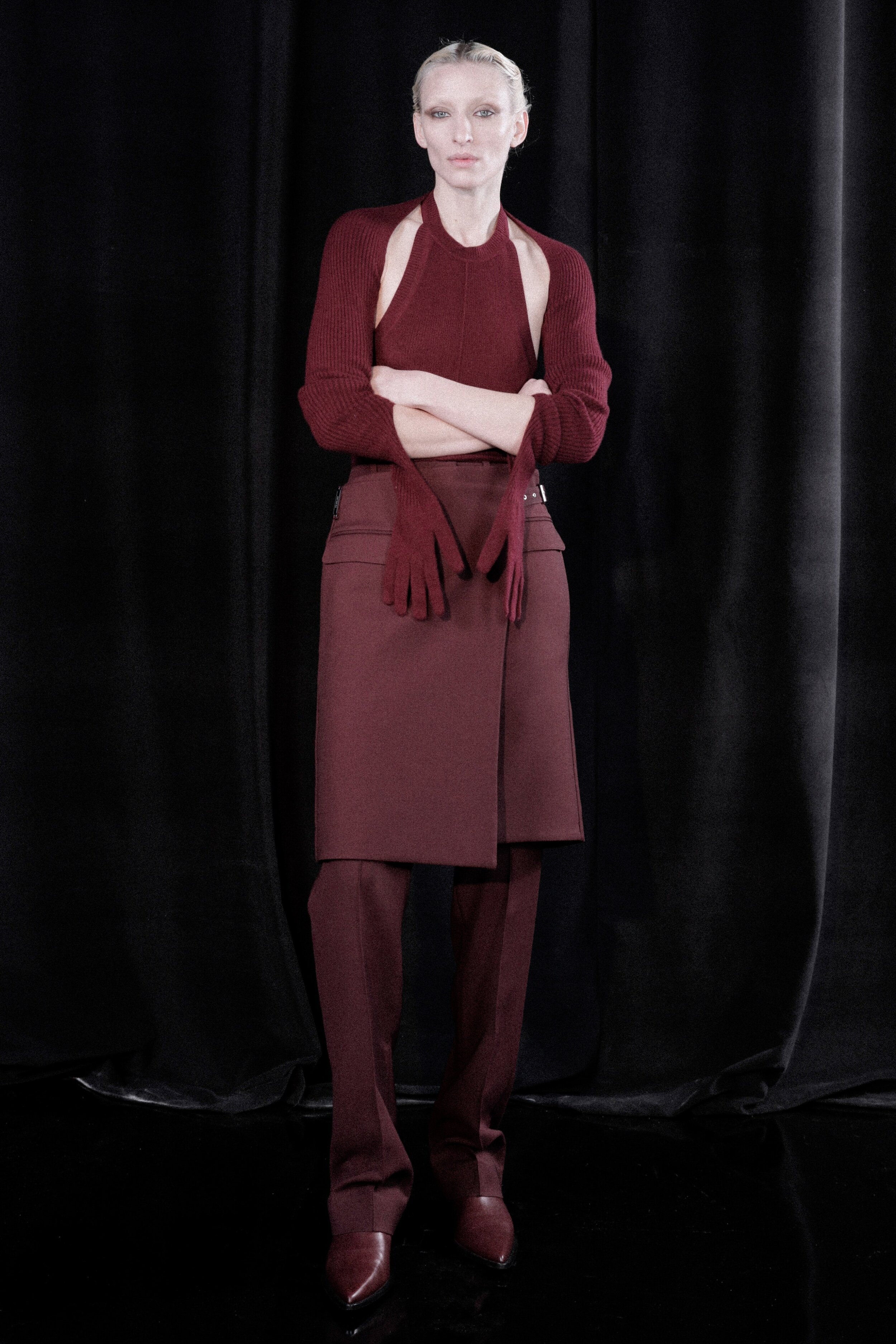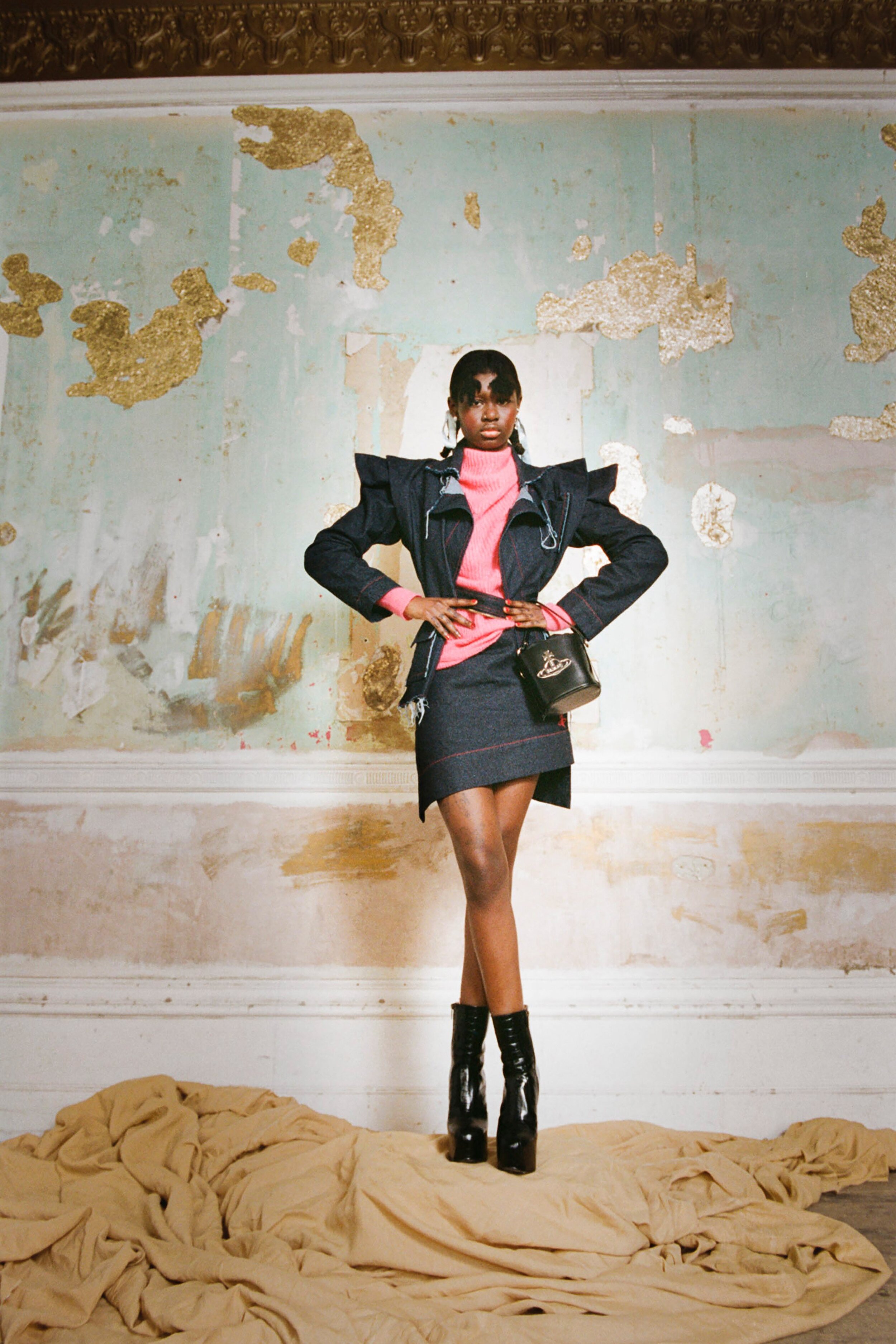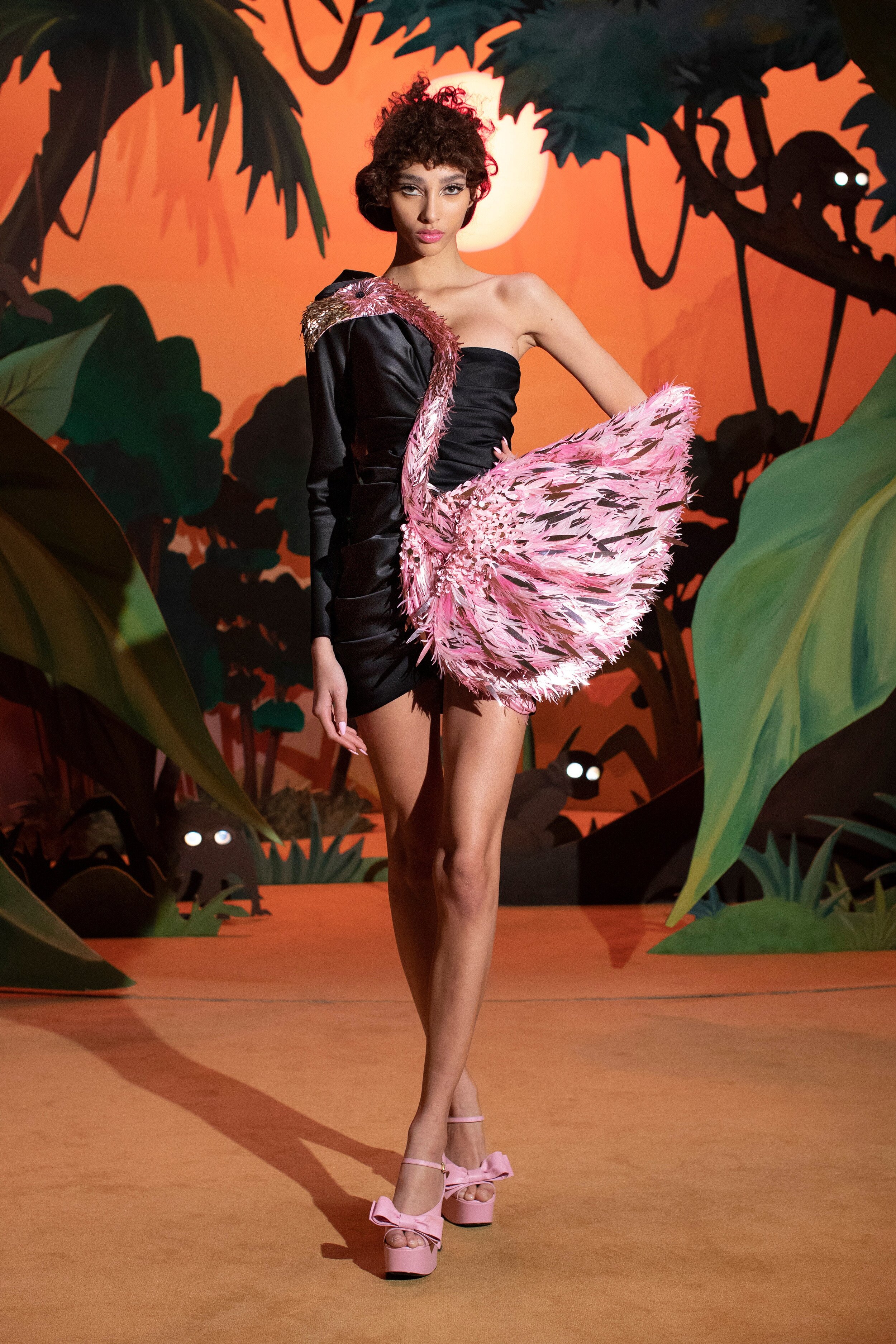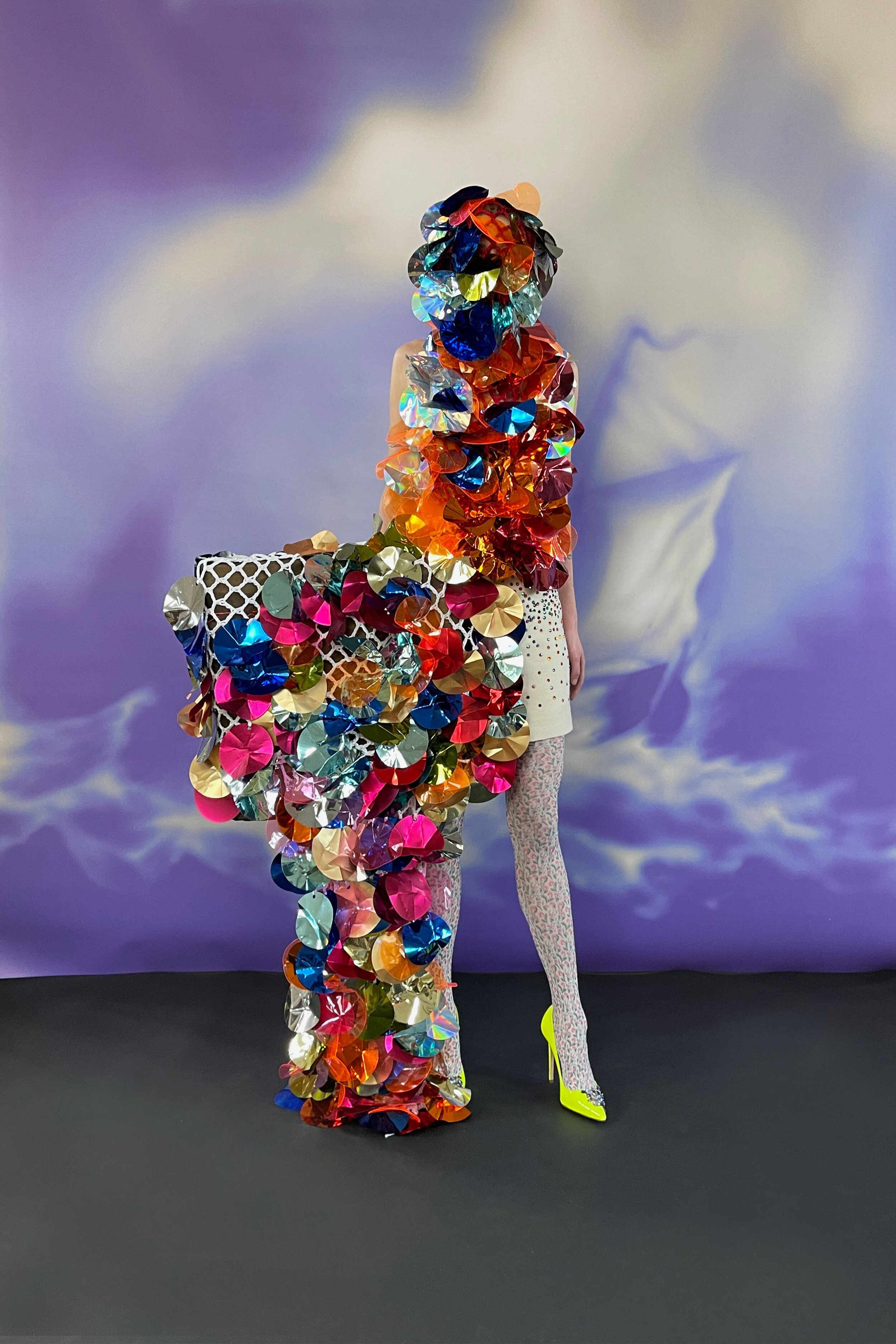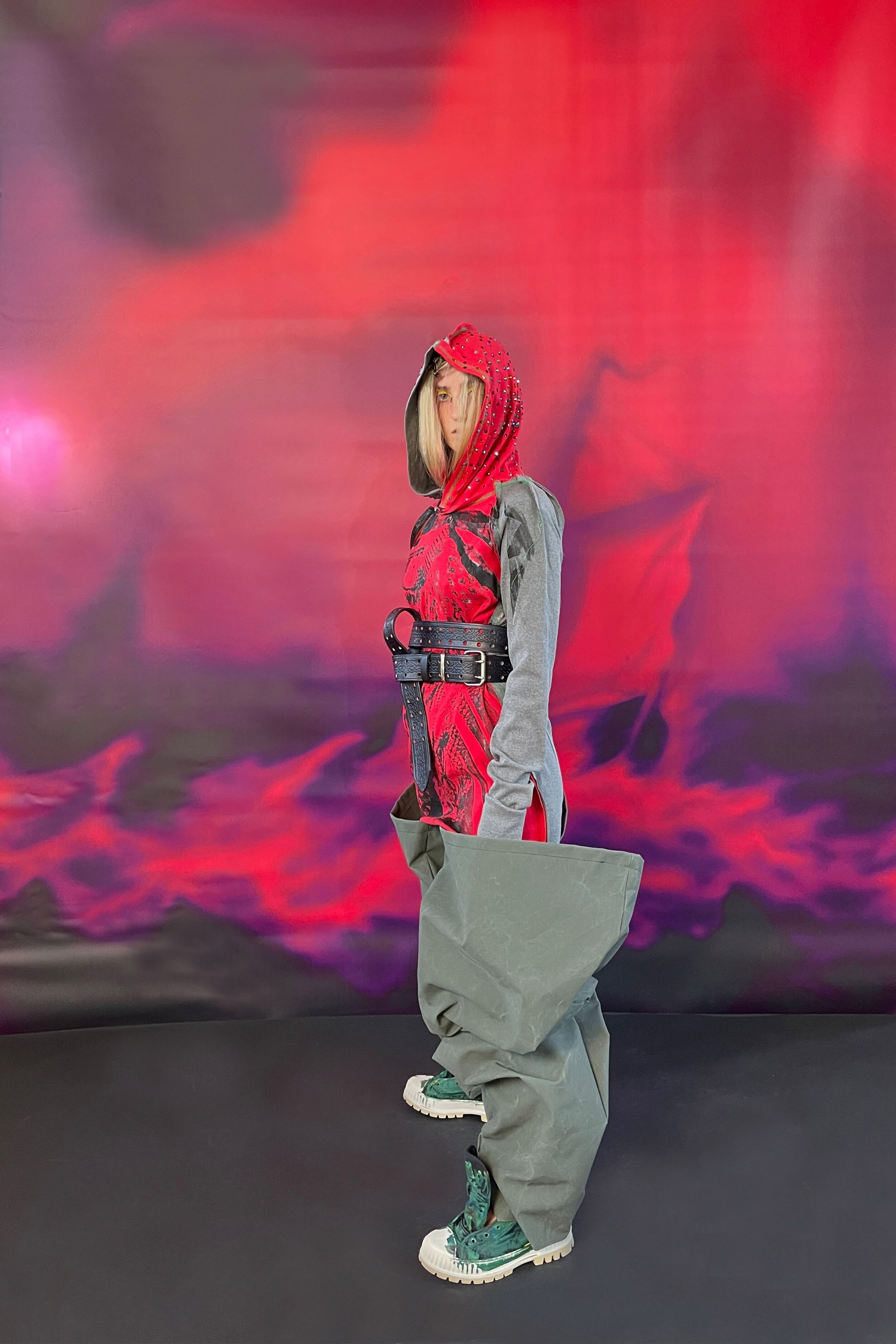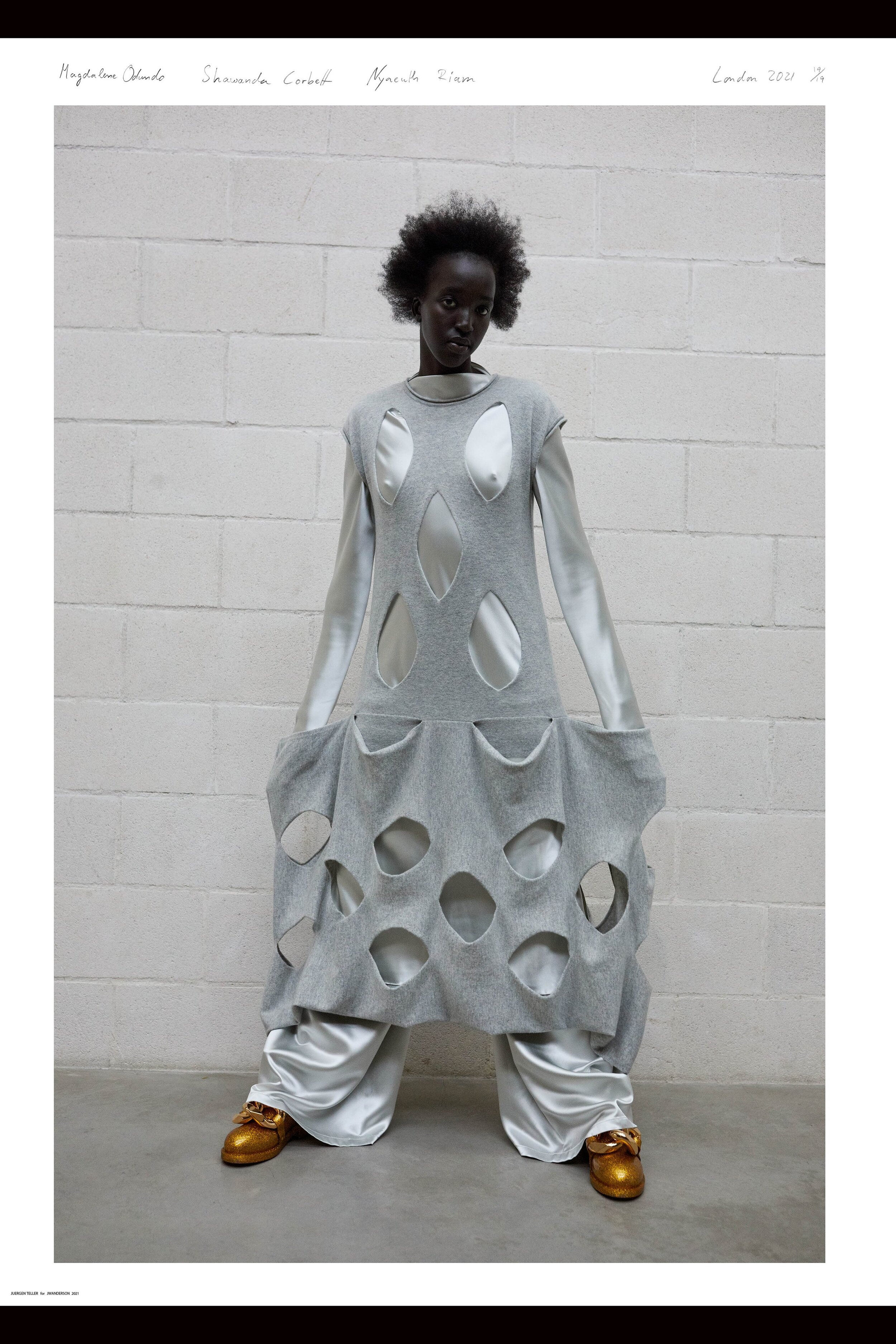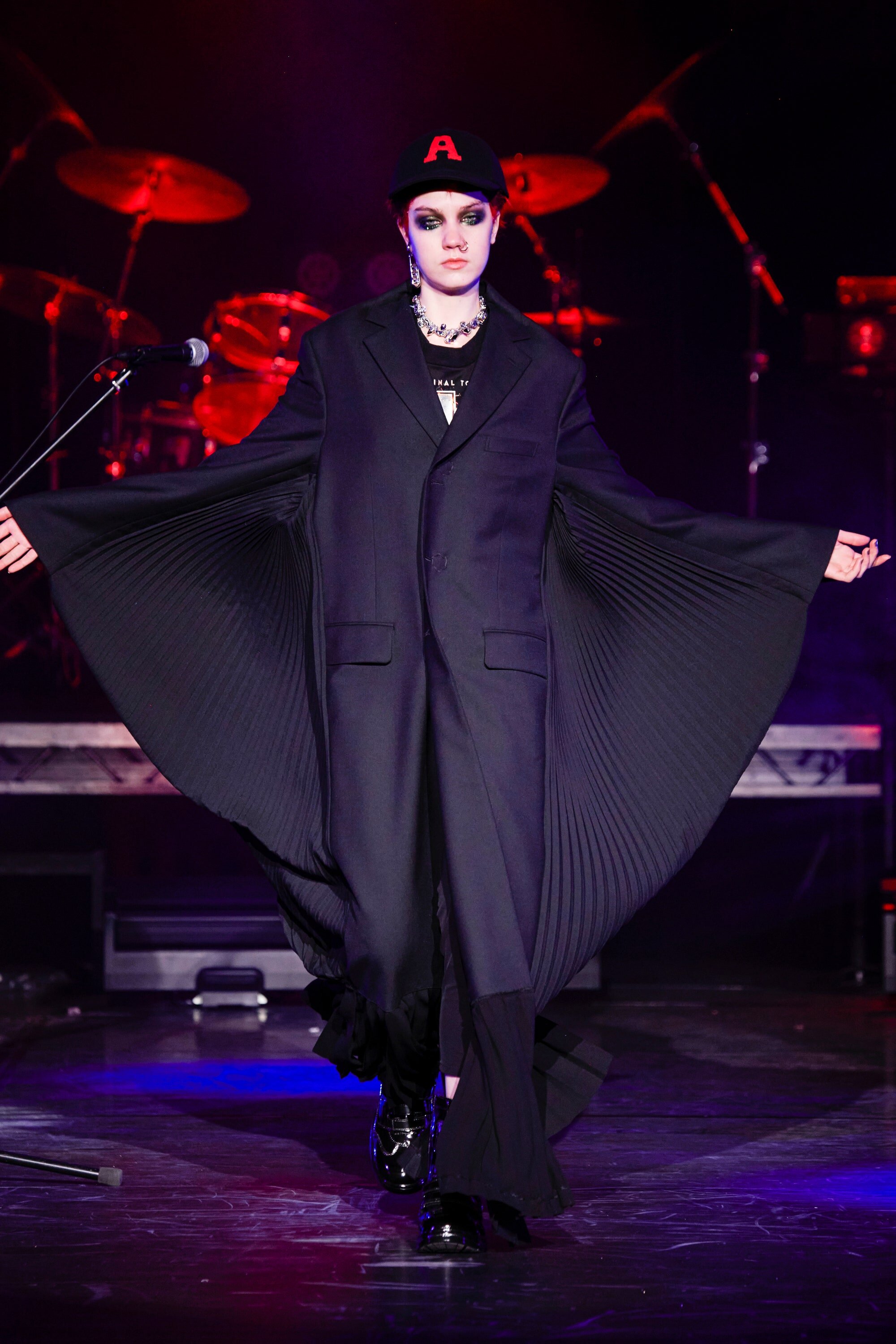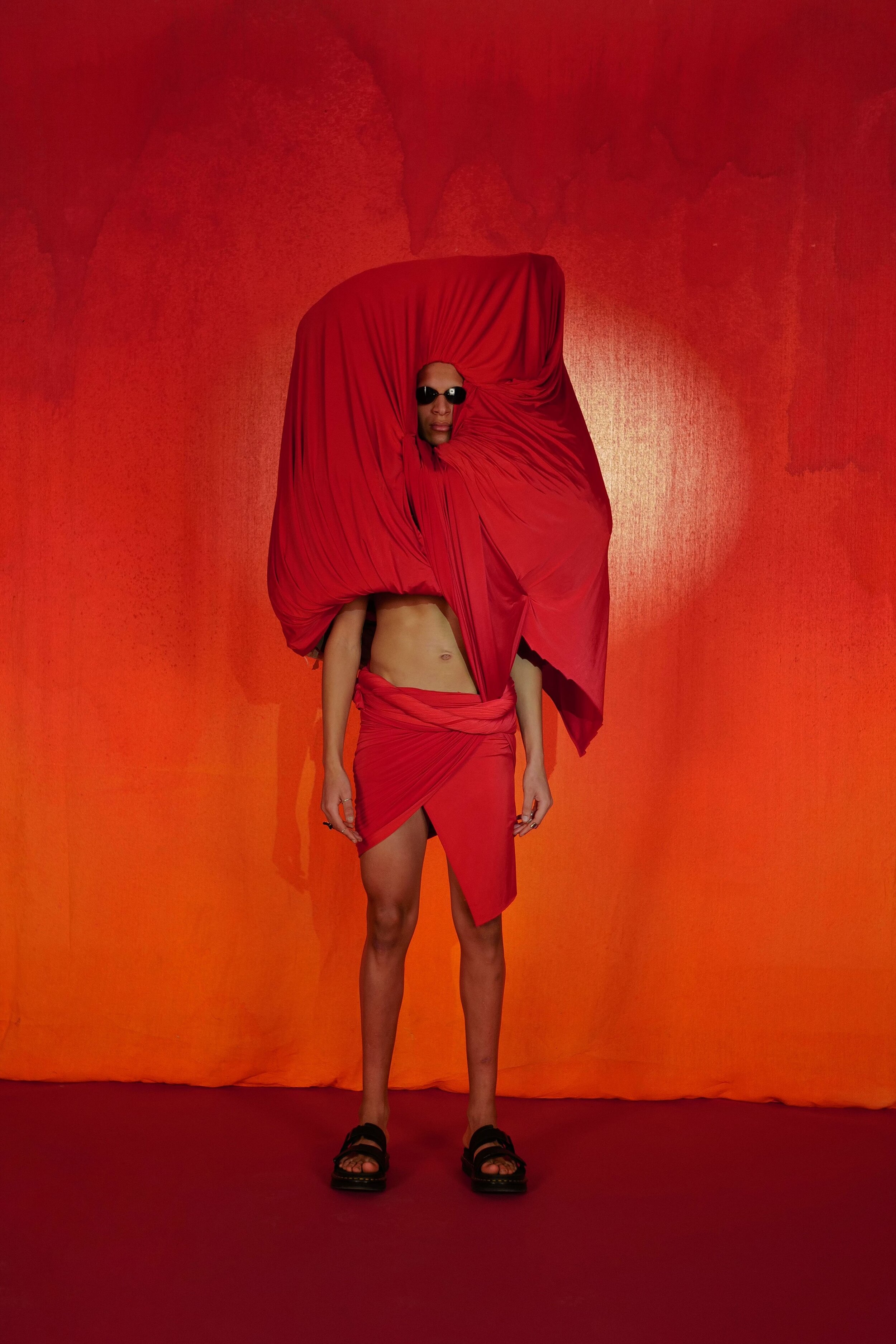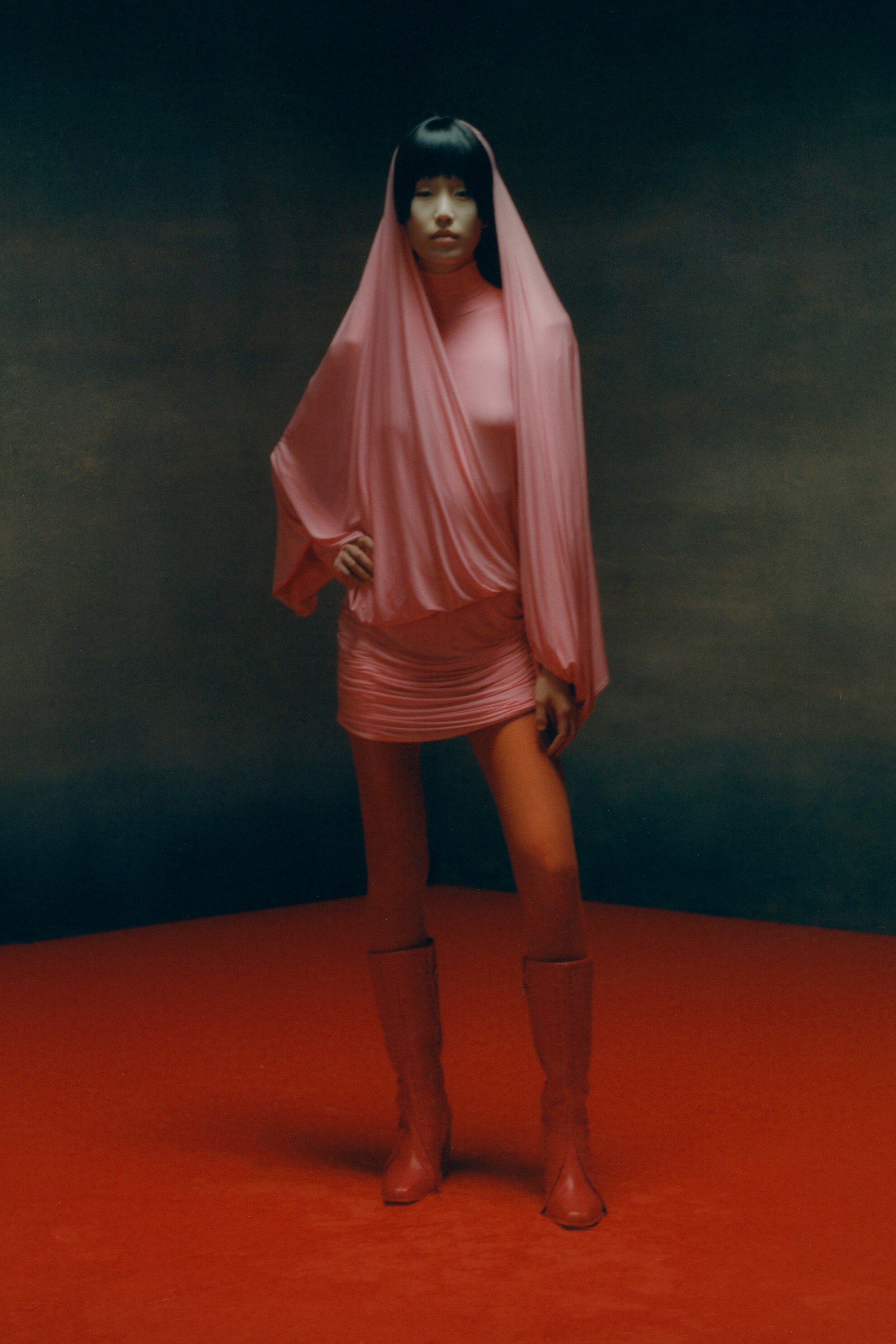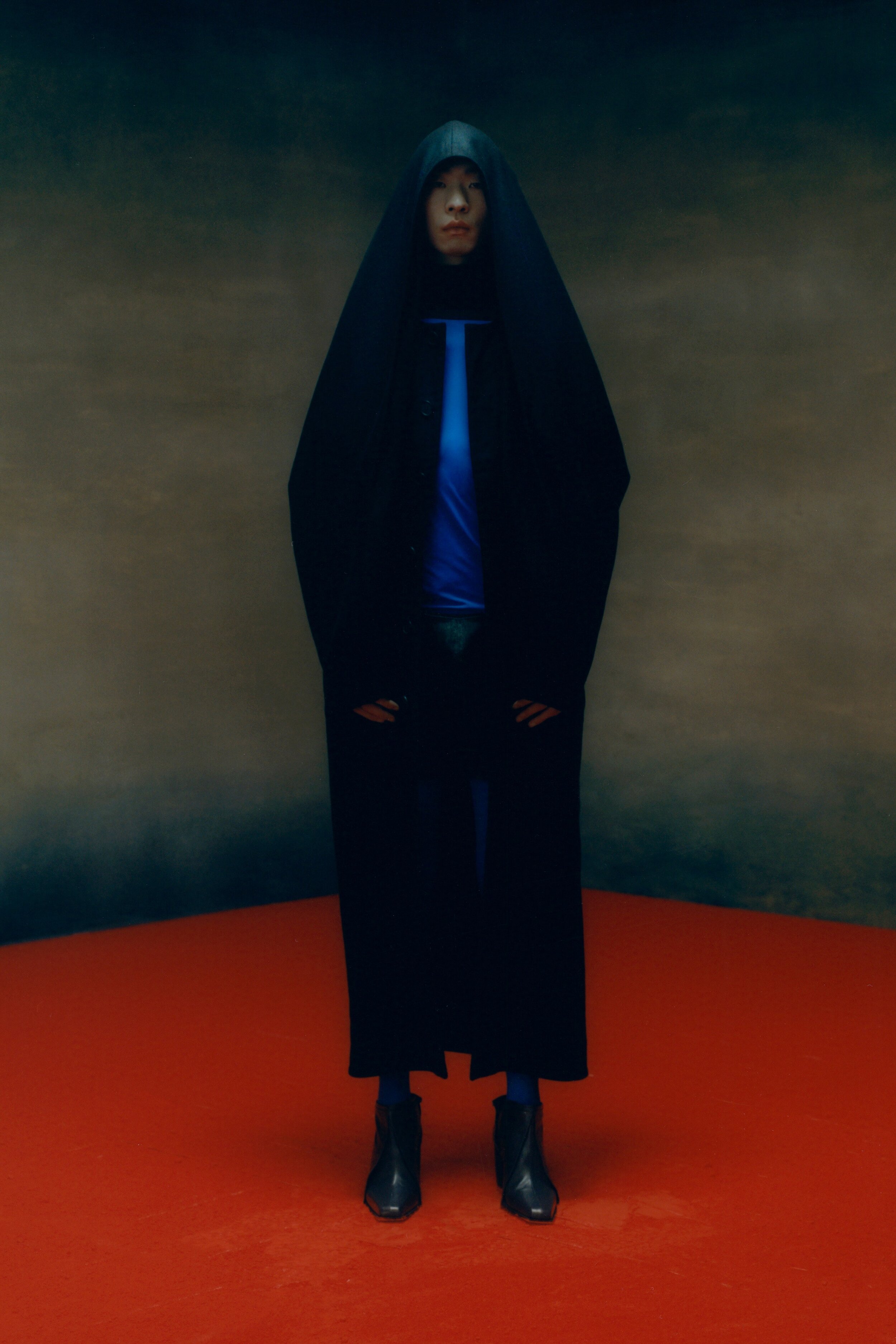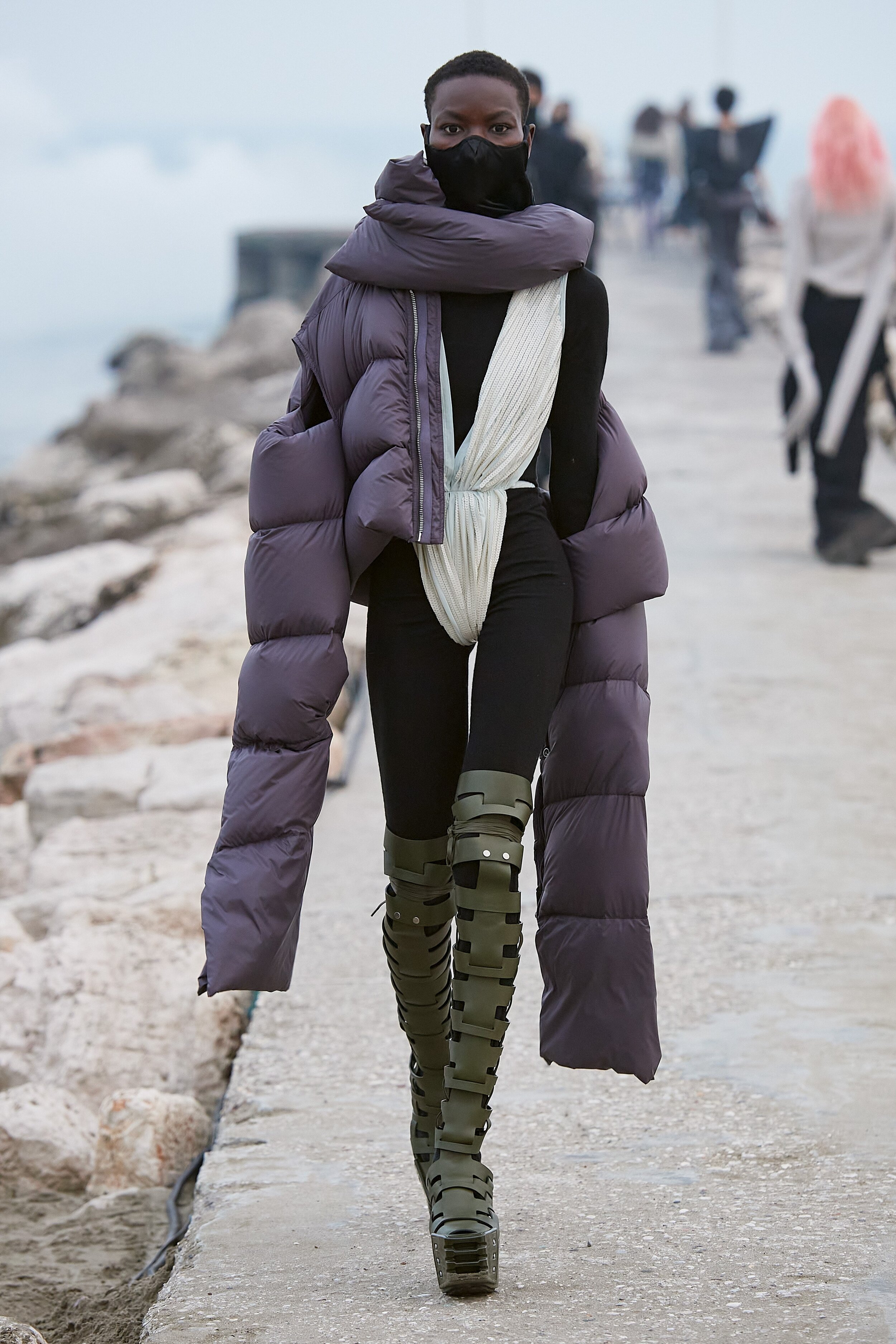I found my dream shirt on TikTok the other day. Let’s just cut to the chase.
I don’t follow a ton of fashion accounts on TikTok—it tends to get a bit repetitive around there, all screen printed blanks and yo ID on pants? comments. That last part may be a bit hypocritical coming from me, someone who scoured the internet to find one specific shirt. I think my algorithm is screwed.
Anyways, Carla Rockmore.
I first encountered her on Twitter, a quote tweet of her rocking a vintage quilted dress she found in Amsterdam whose near clone eventually made its way down the Gucci runway. The quote tweet is long lost in the world of that little blue app, but it said something along the lines of, “She never misses!”
Though her closet may be drastically different from mine, I live for the eclectic. As she styled it, just a few accessories, a pair of chartreuse pumps, and a turquoise bag, she made the briefest of commentaries on how creatives absorb what’s around them—knowingly or not. I had to see more.
The shirt. In a styling video that ventured from mall goth to architect-chic, she donned the most elevated of white button-ups: classic collar and clear buttons with a side of flouncy, loosely ruffled asymmetry to the point of cape-adjacency. My thumbs ran to the comments.
I hadn’t heard of palmer//harding. The about section of the website tells me that founders Levi Palmer and Matthew Harding are two sides of the same coin, designers who find electricity in the threshold between opposites:
masculine // feminine, hard // soft, structured // fluid
I kept eyeing the way the front cut of the shirt fell right at Carla’s waist. The way the back was just a touch from brushing the ground. The way it’d move as she’d move. Have you ever worn a garment that changed you?
My favorite piece in my closet is a Robert Geller long-sleeve tee I found at my job, second-hand. The linen knit makes it easy, breezy, and slightly sheer, and the inconspicuous raw hem detailing that lies an inch under the collar brings attention to the neck.
It’s a few sizes too big for me, the neckline exposing just the right amount of collar bone while the sleeve-length swathes my hands in a ridiculous amount of sweater-paw action. In the cool way.
It lands right above my knees in dress-like fashion, and in the right light you can see everything underneath. It’s midnight black. It’s menswear cut straight so the fabric moves and gathers on top of even a slightly curved waist.
What I mean is that it both cloaks and exposes me in all the ways I want it to. It begs questions. Are you close enough to see the details? Are you in the right light? What would you see if you got even closer?
It’s just a black tee shirt.
But detail is sensual. Silhouette is sexy. It can create a new body.
I like my body most in that shirt, and I’ll wear it until it dies. Whichever comes first.
The exact shirt Carla donned in her video doesn’t exist on the palmer//harding site. The closest runner-up is the JOY LONG shirt, retailing at $476. I think the fact that such a similar version exists hurts more than not being able to find it at all.
The back of the JOY LONG shirt stops behind the knees of the model in a way that feels intentional, not something chalked up to sizing differences. The buttons are brown, not clear, and seems to stop at the soft tissue right below the sternum rather than the waist. I know these things because I’ve studied Carla’s TikTok religiously. Even if I found her version, I’d never be able to afford it. I’m sure a dupe exists elsewhere.
Until I find one, I’ll keep imagining myself in it, the drape and sheer of the poplin in constant motion, occasionally gleaming. I’ll dream of it.
Featured image via the palmer//harding website.









